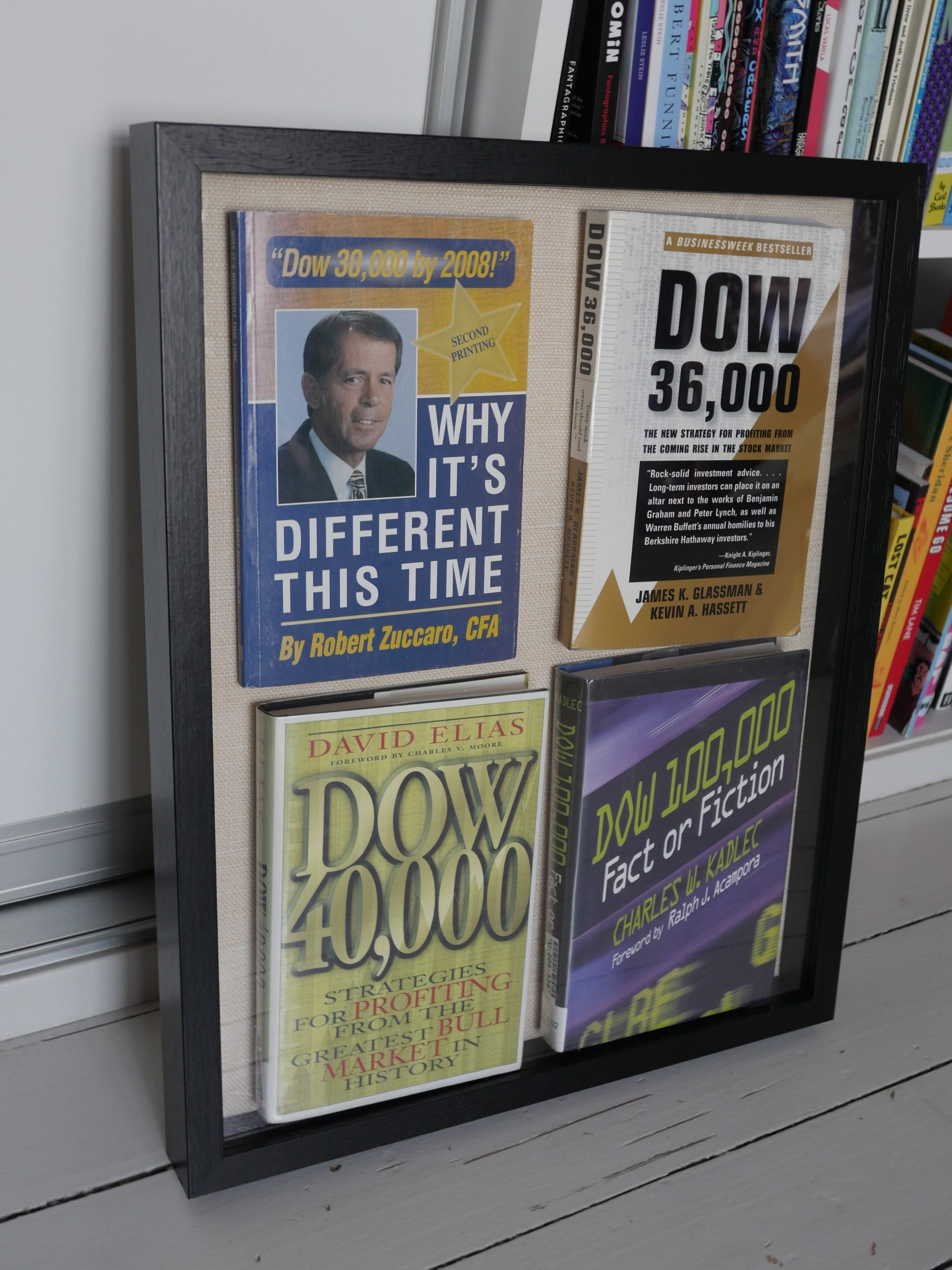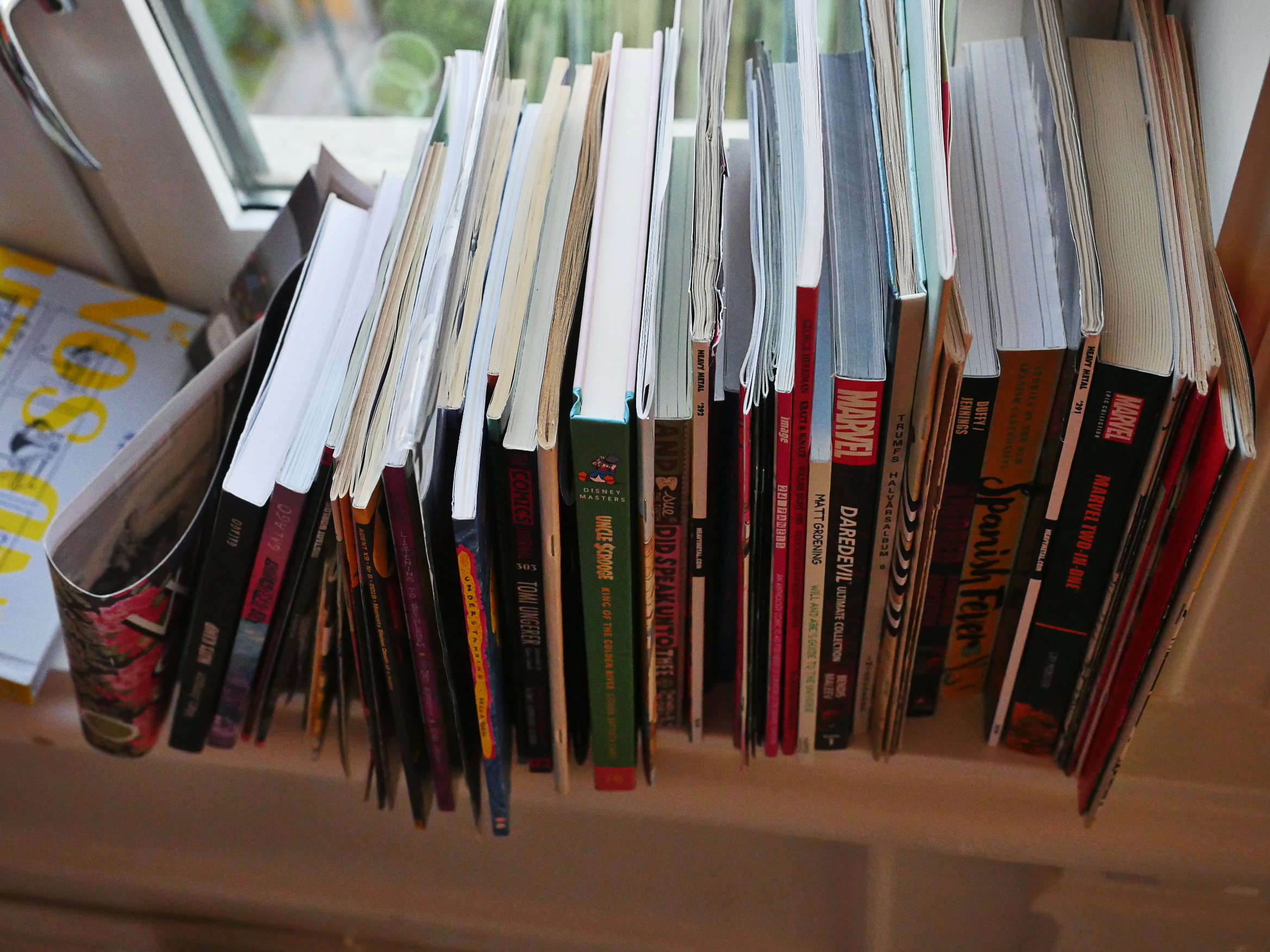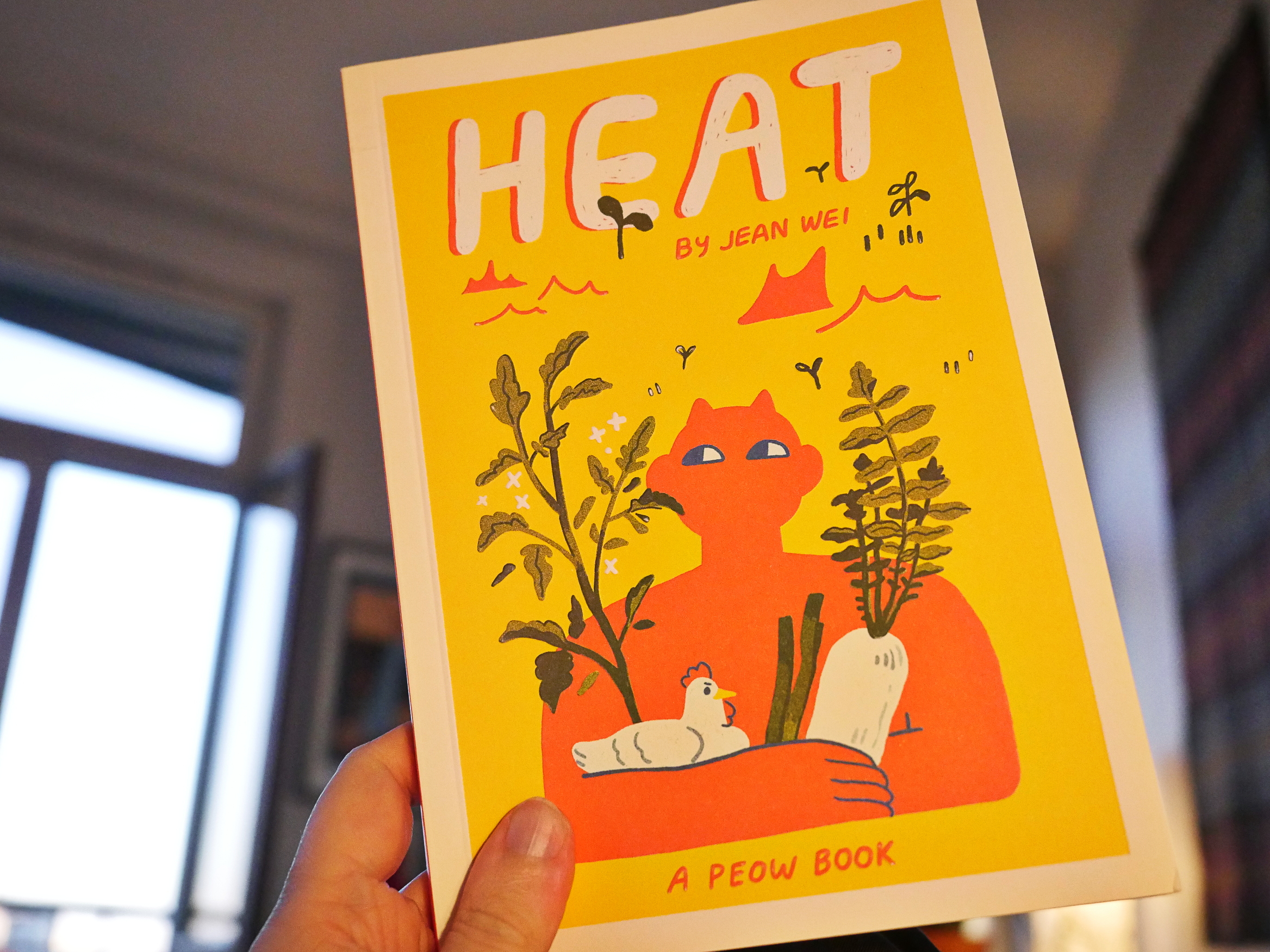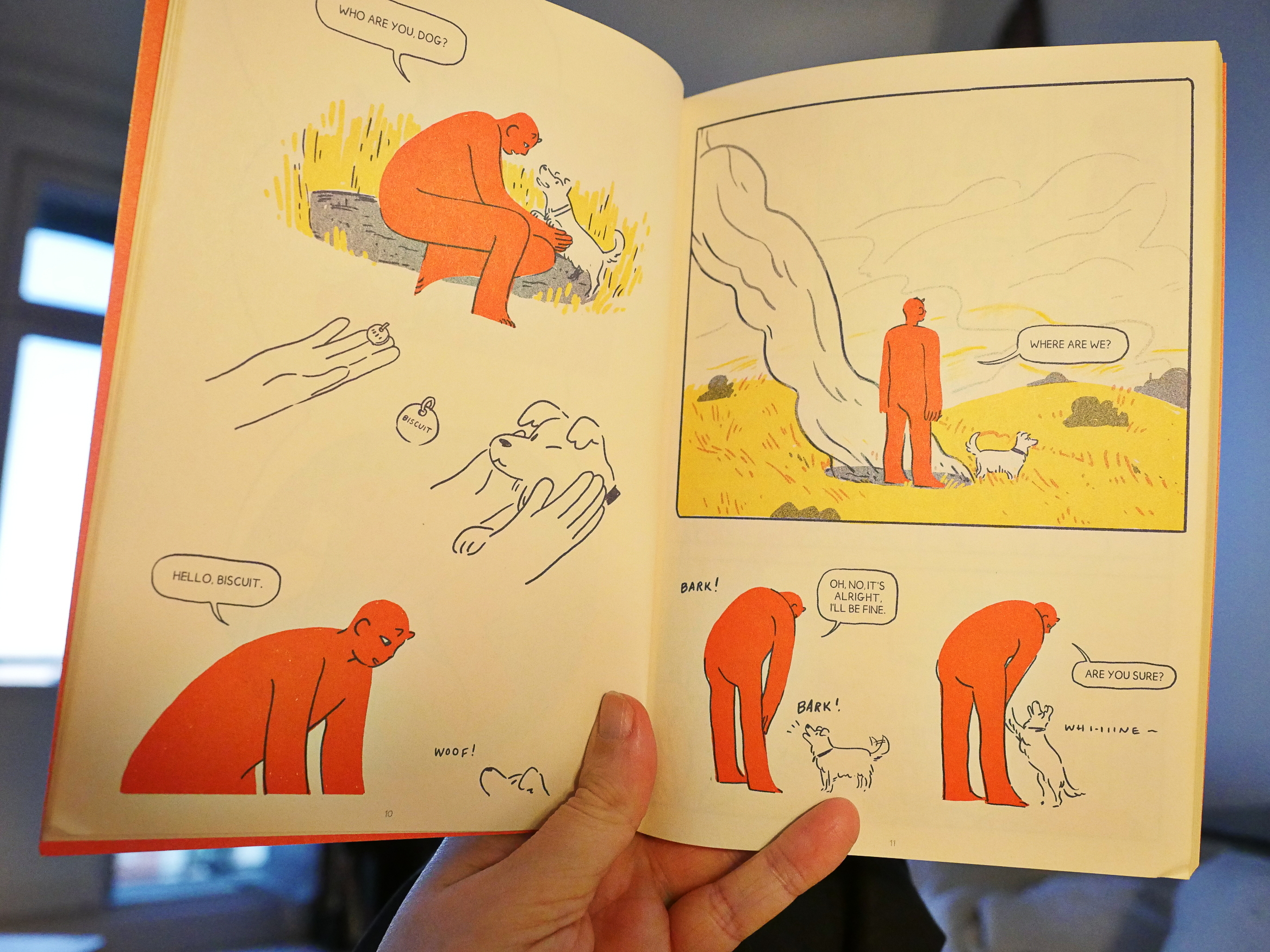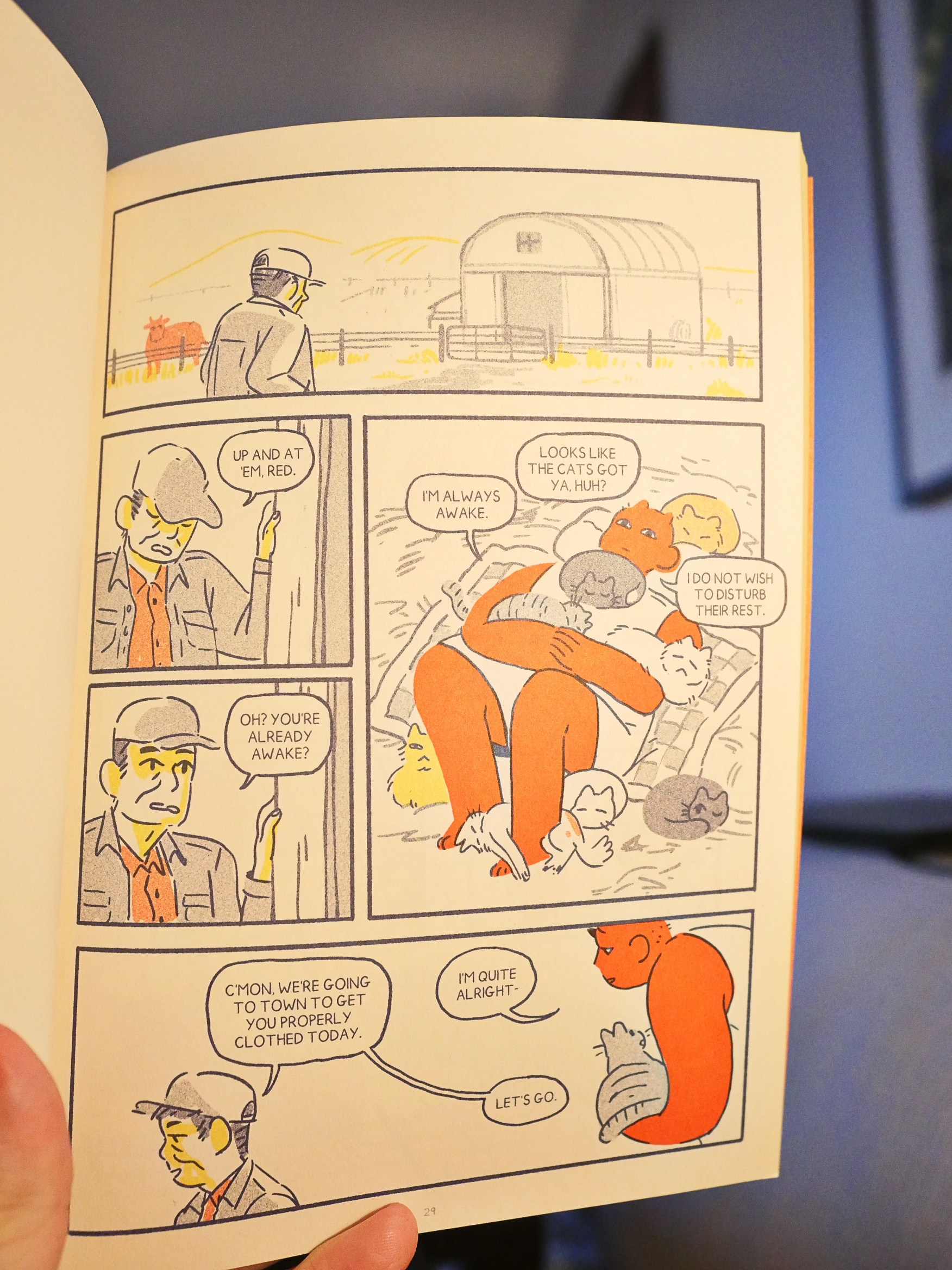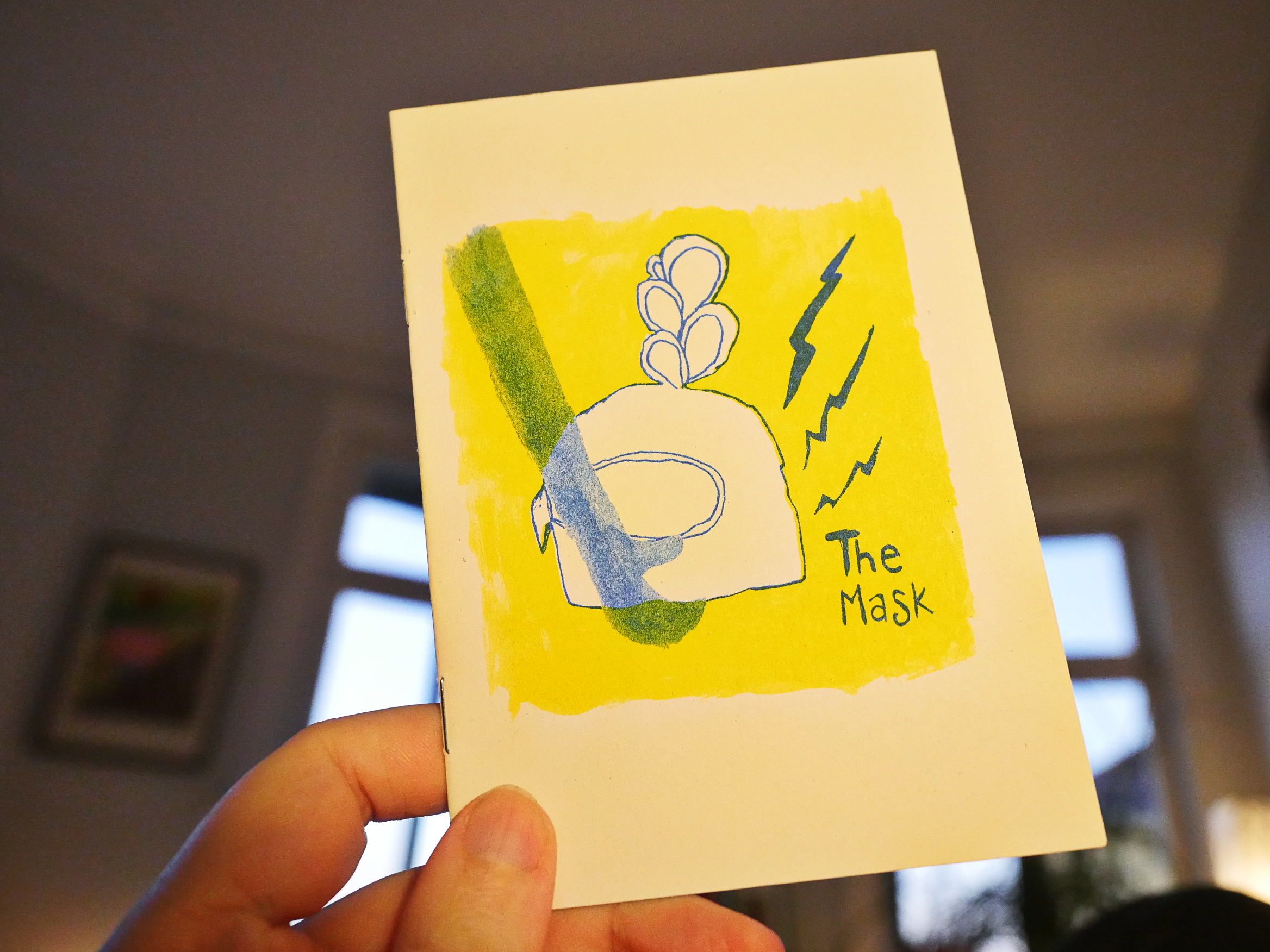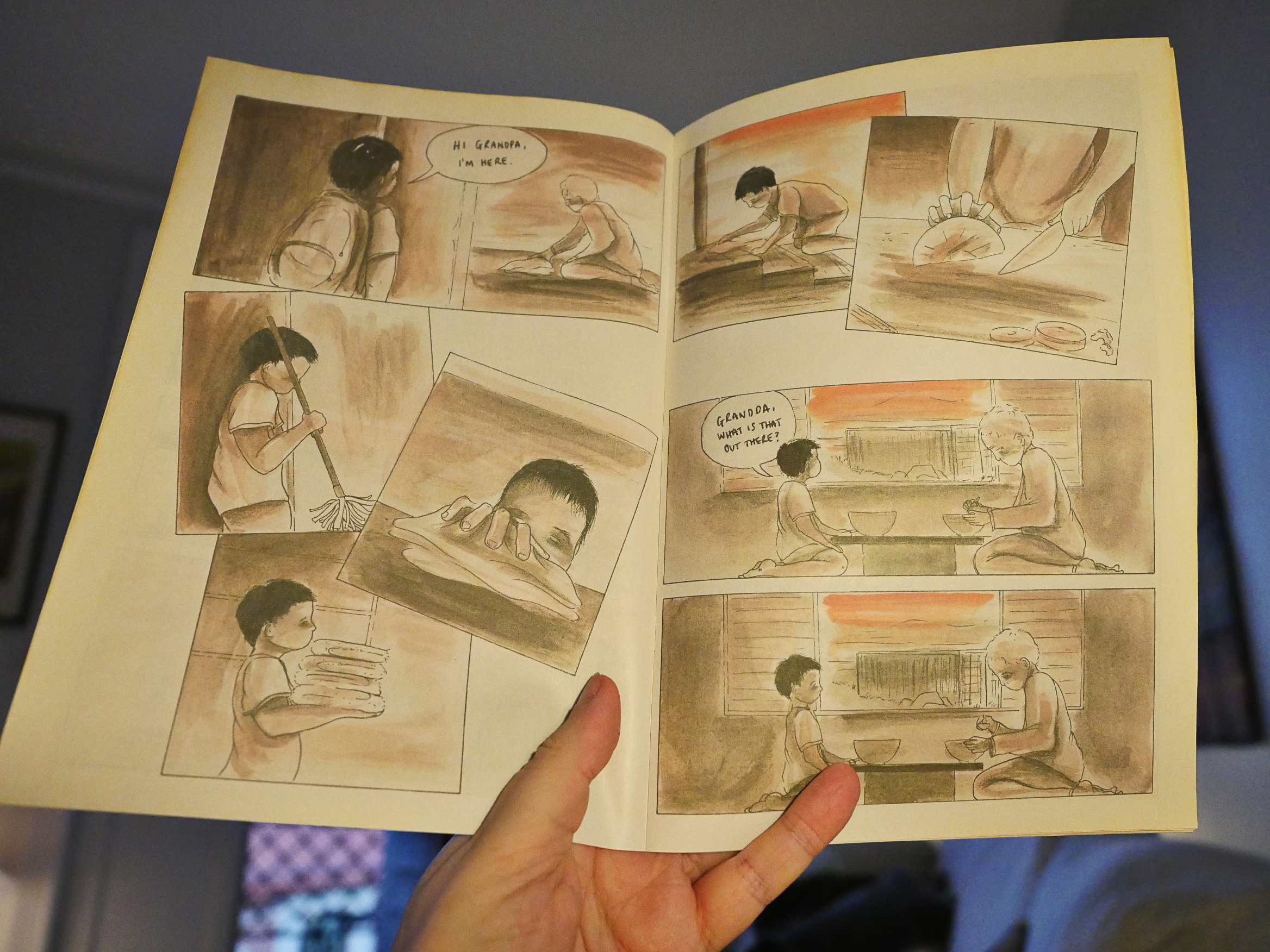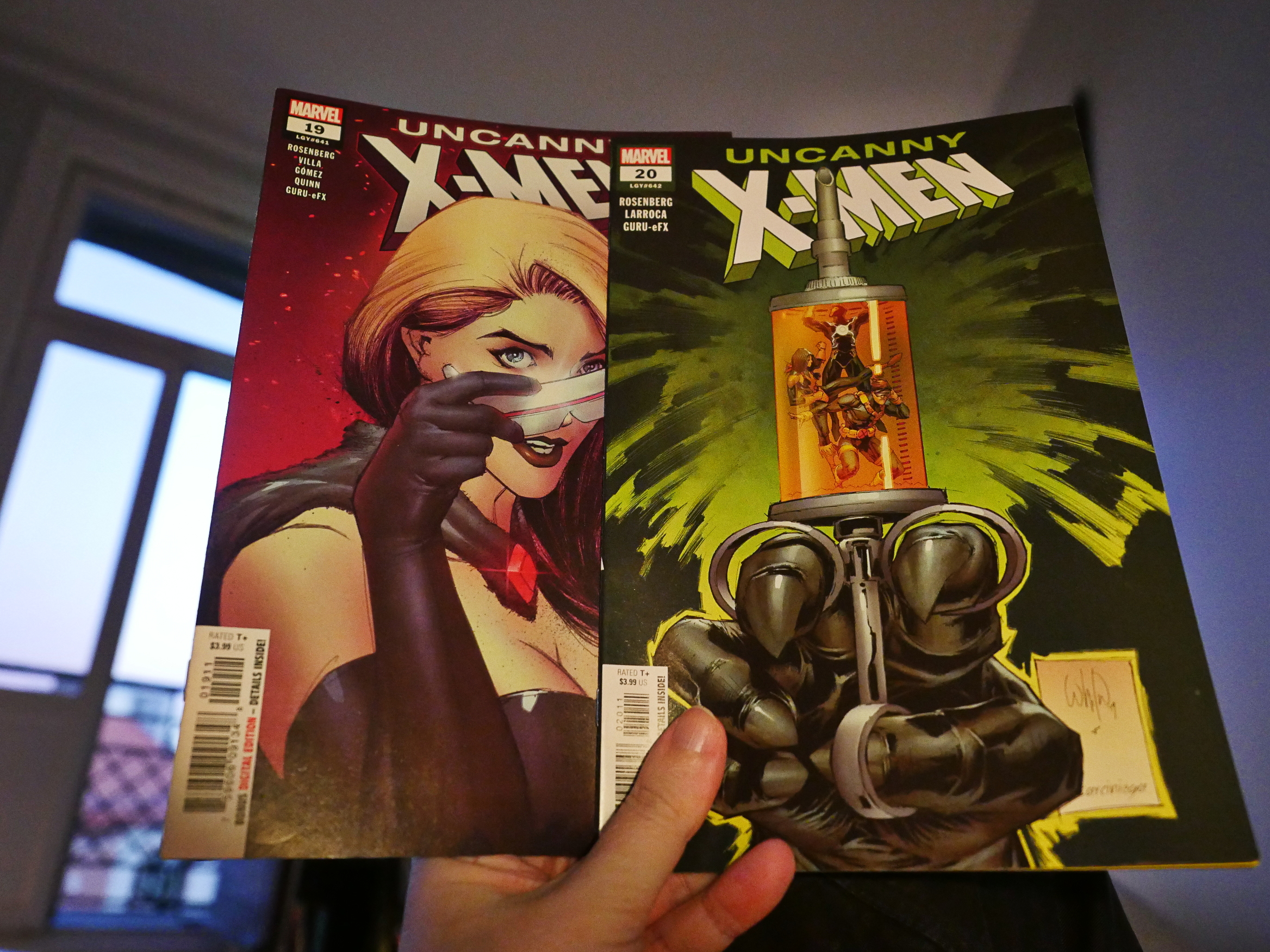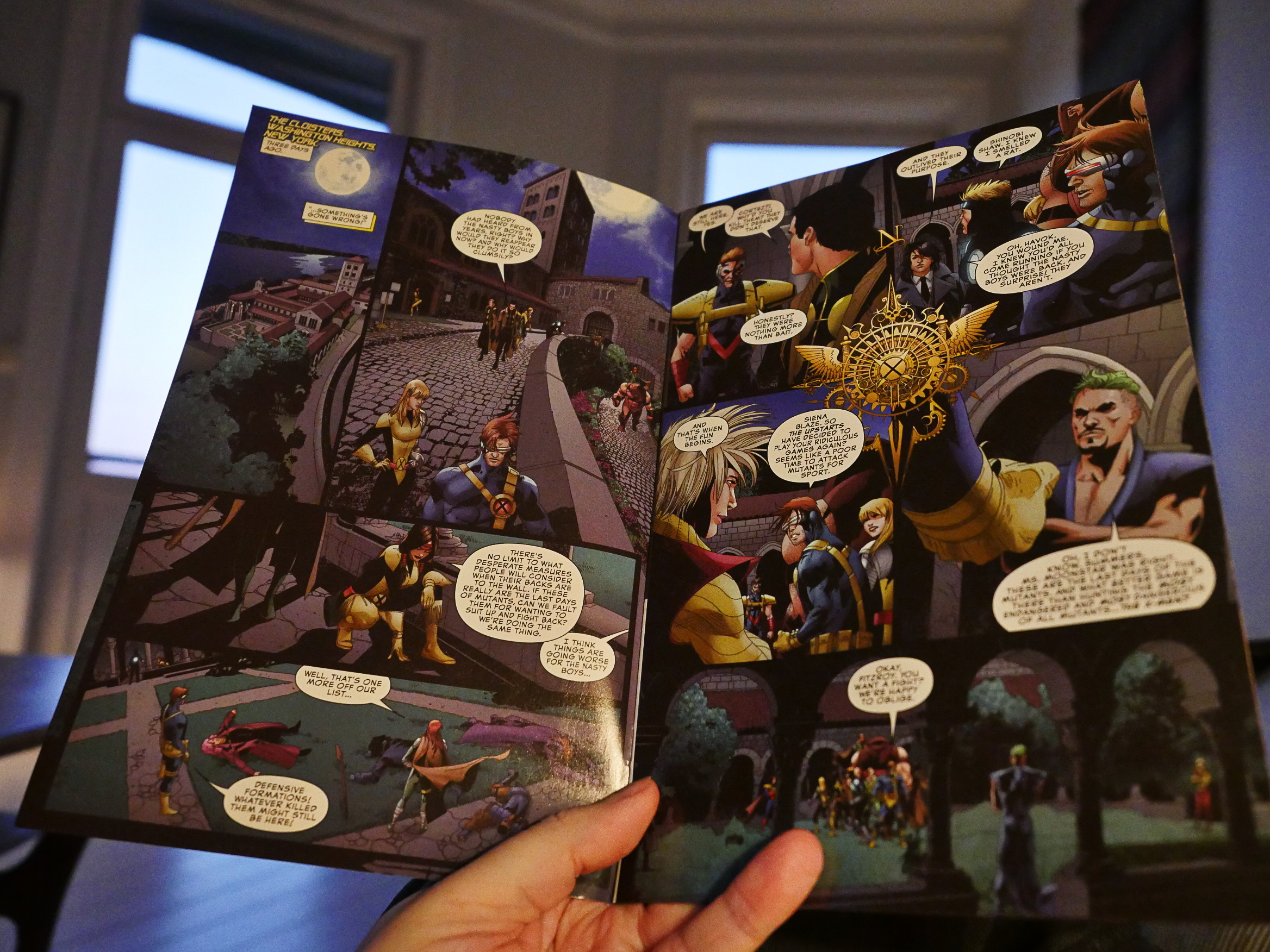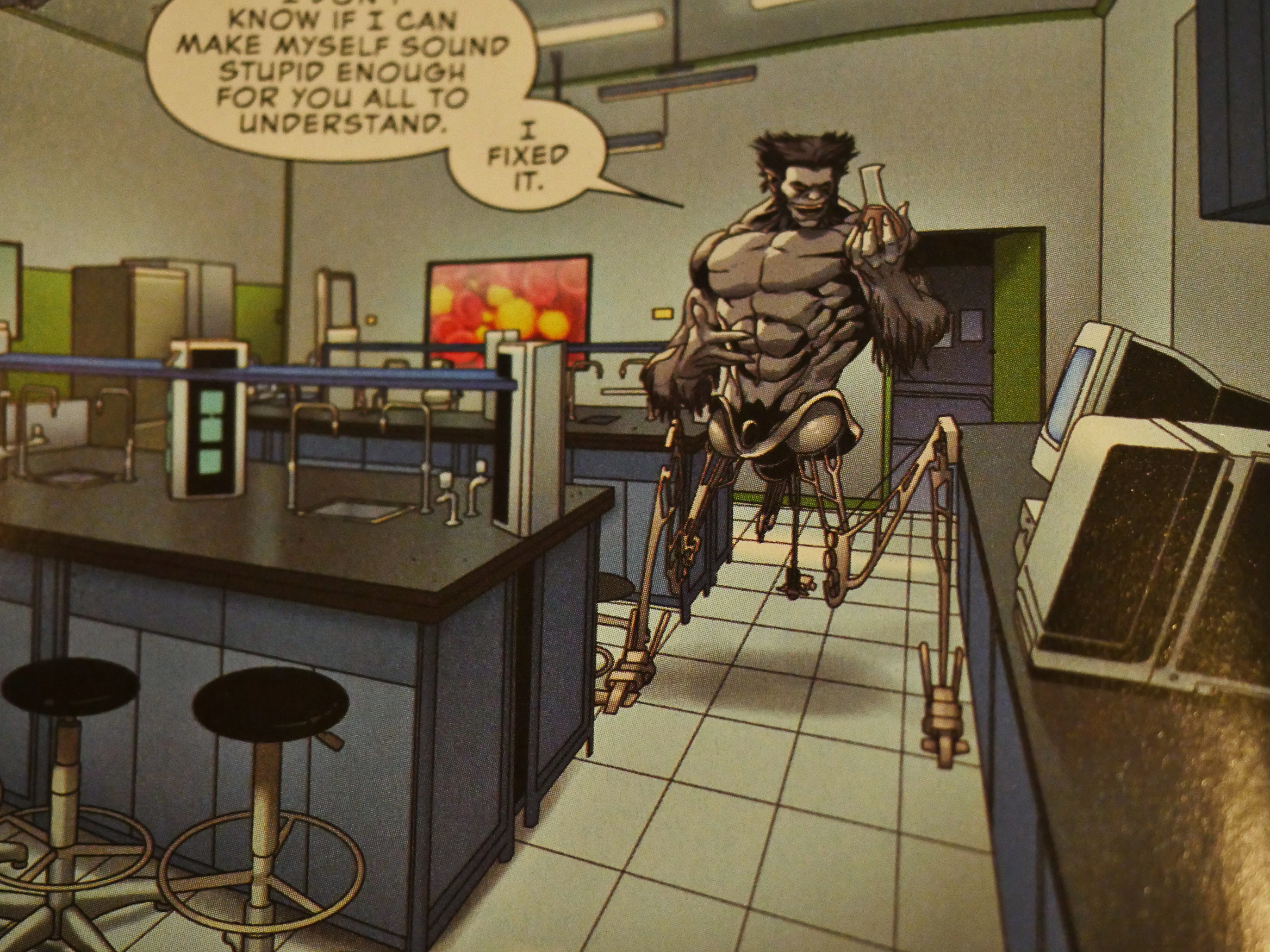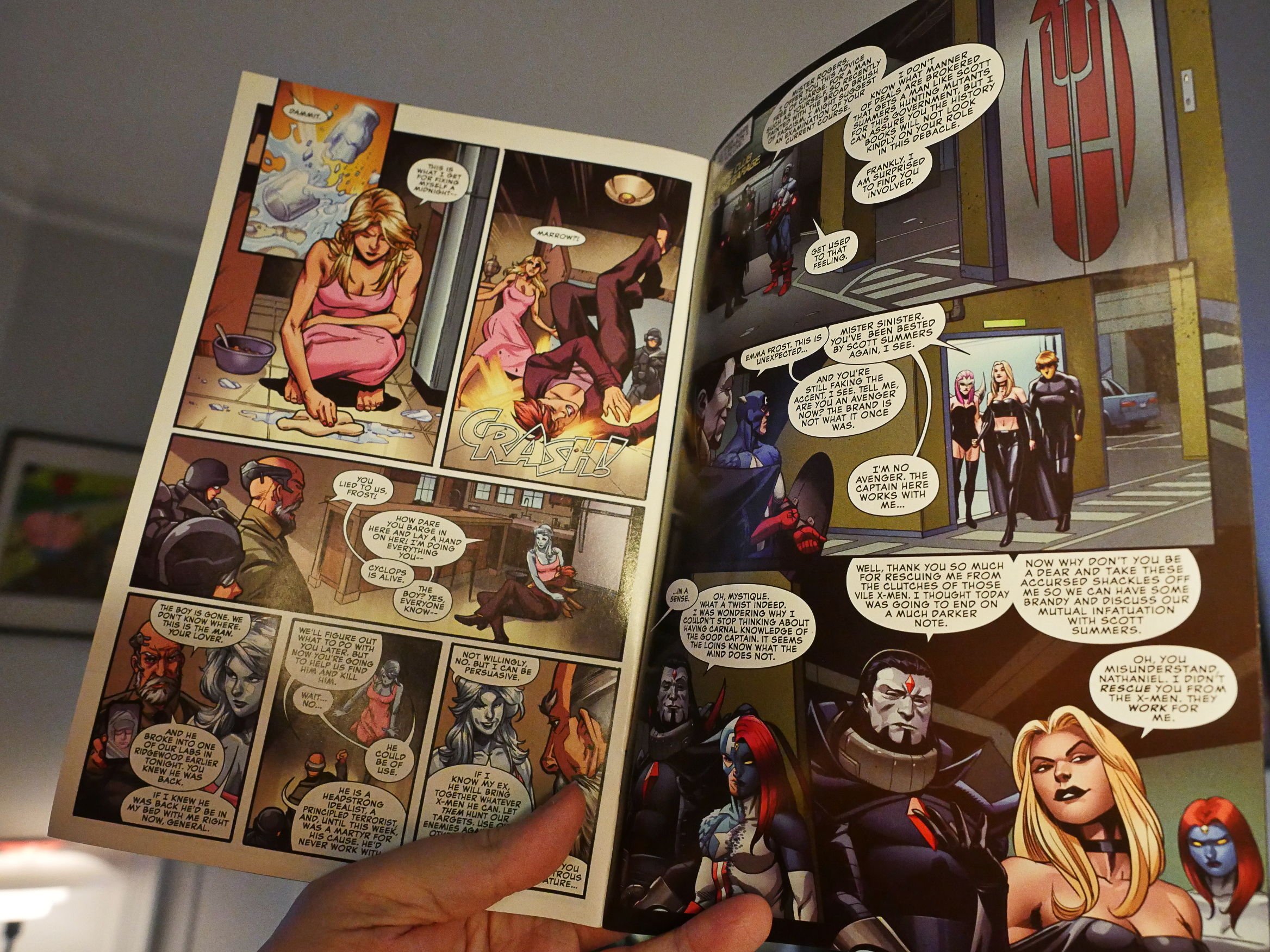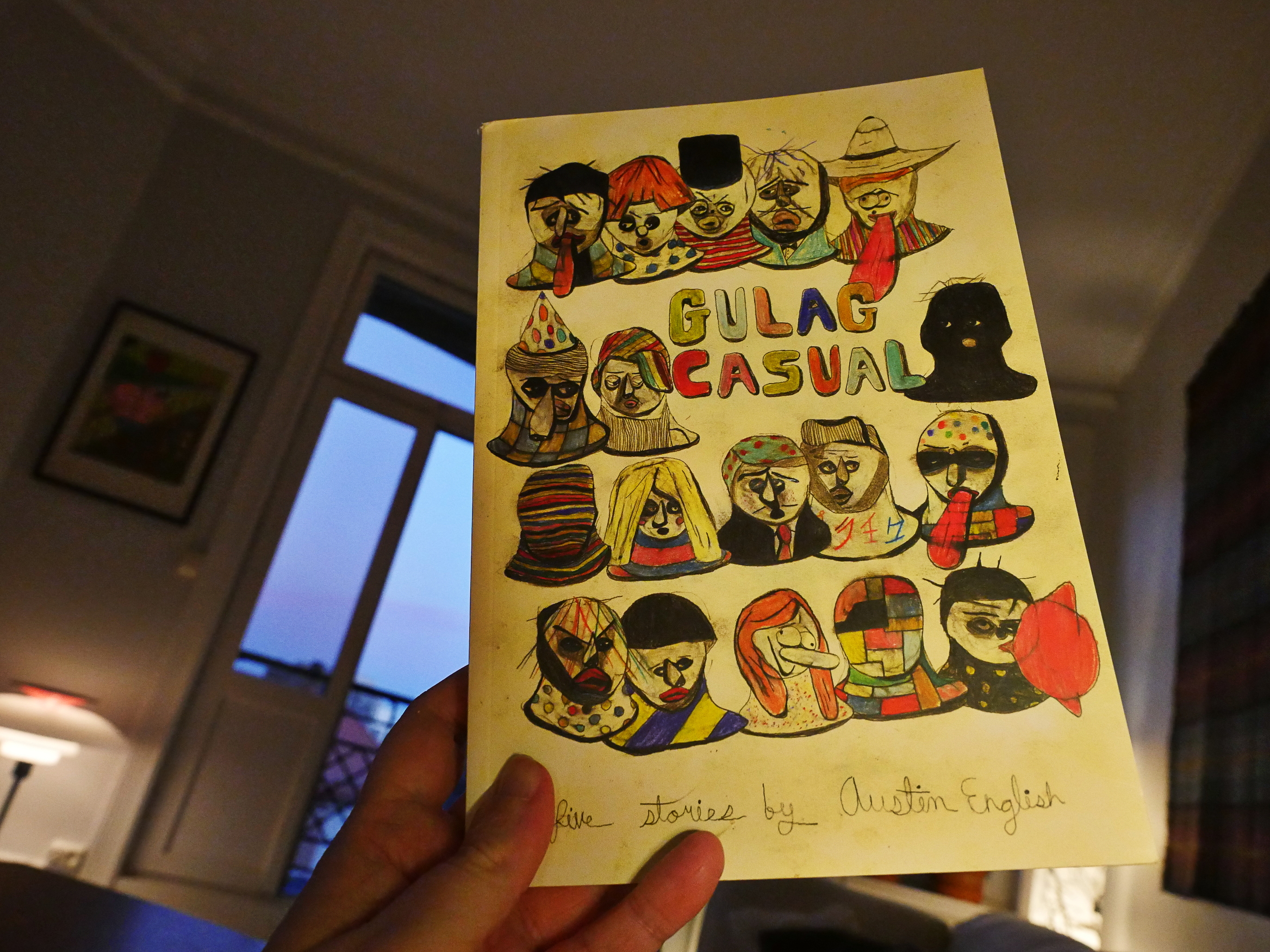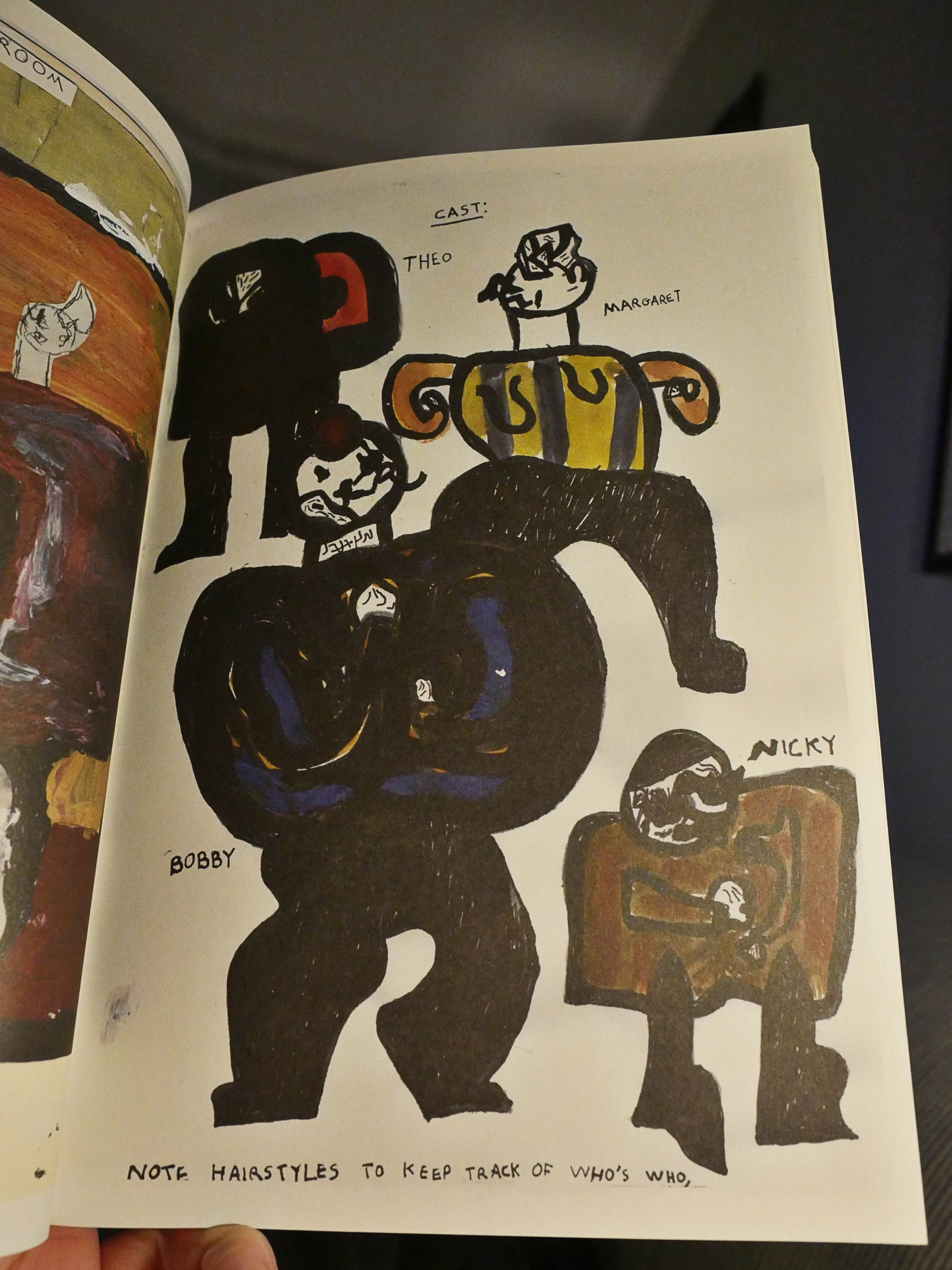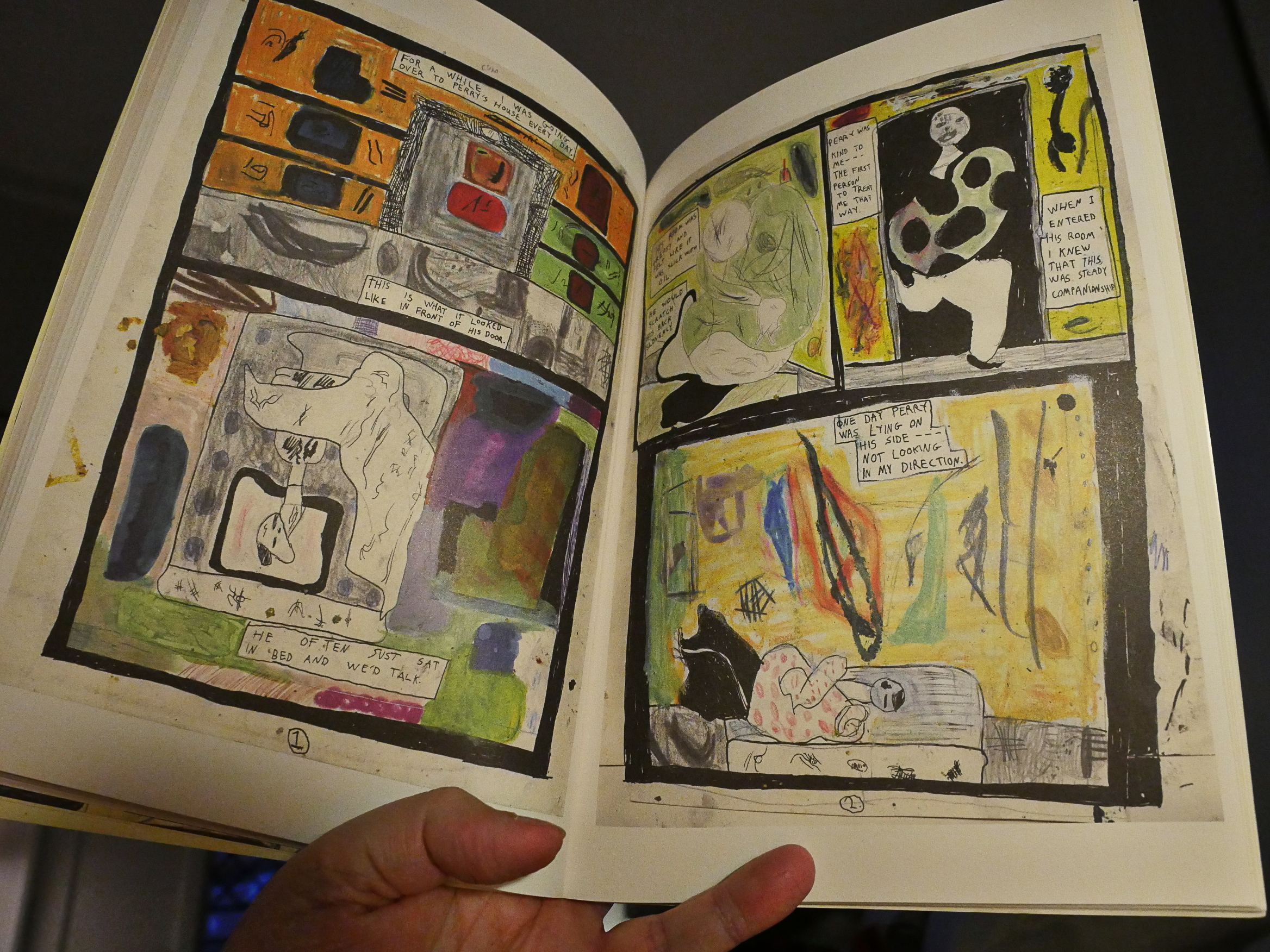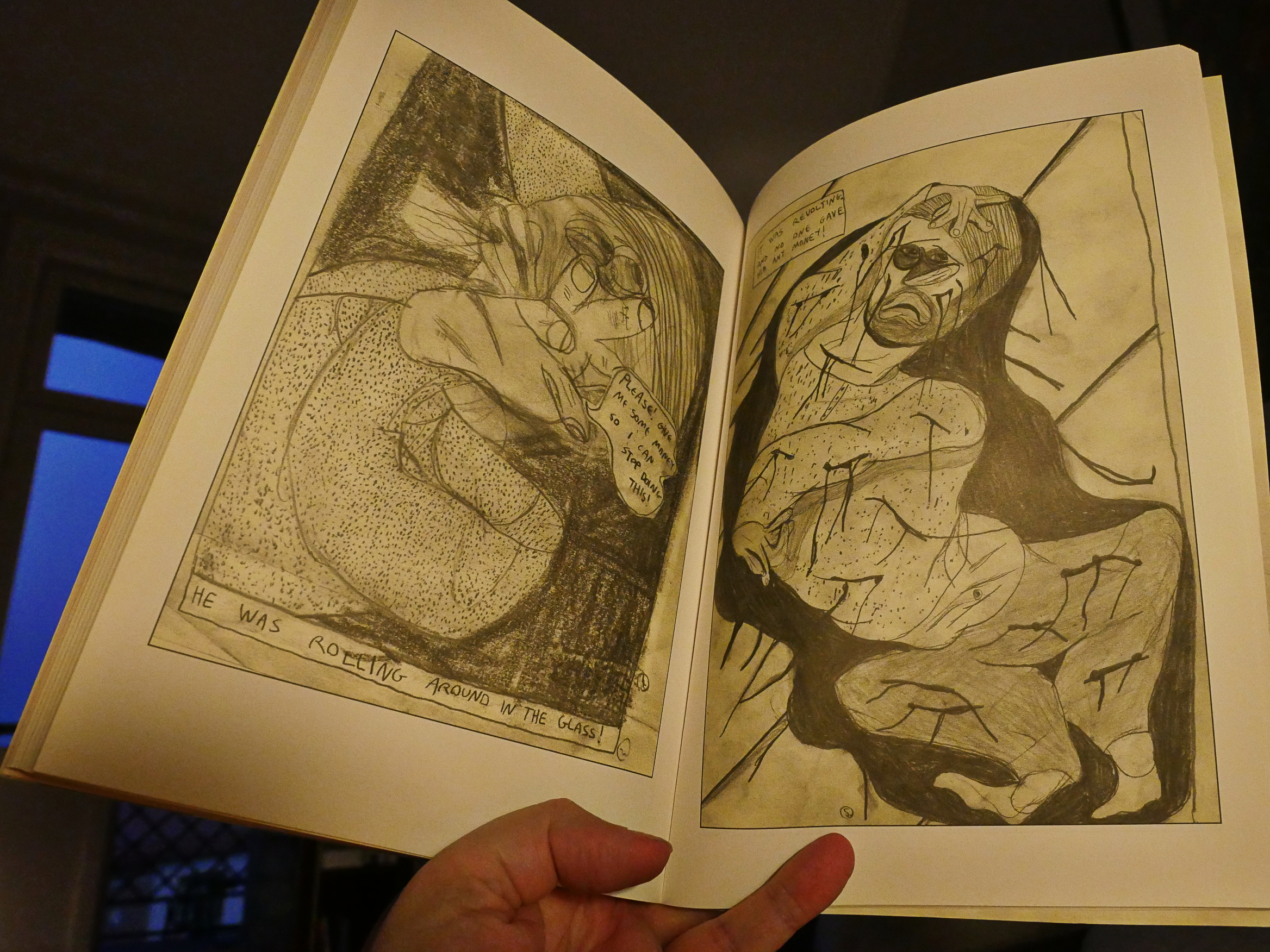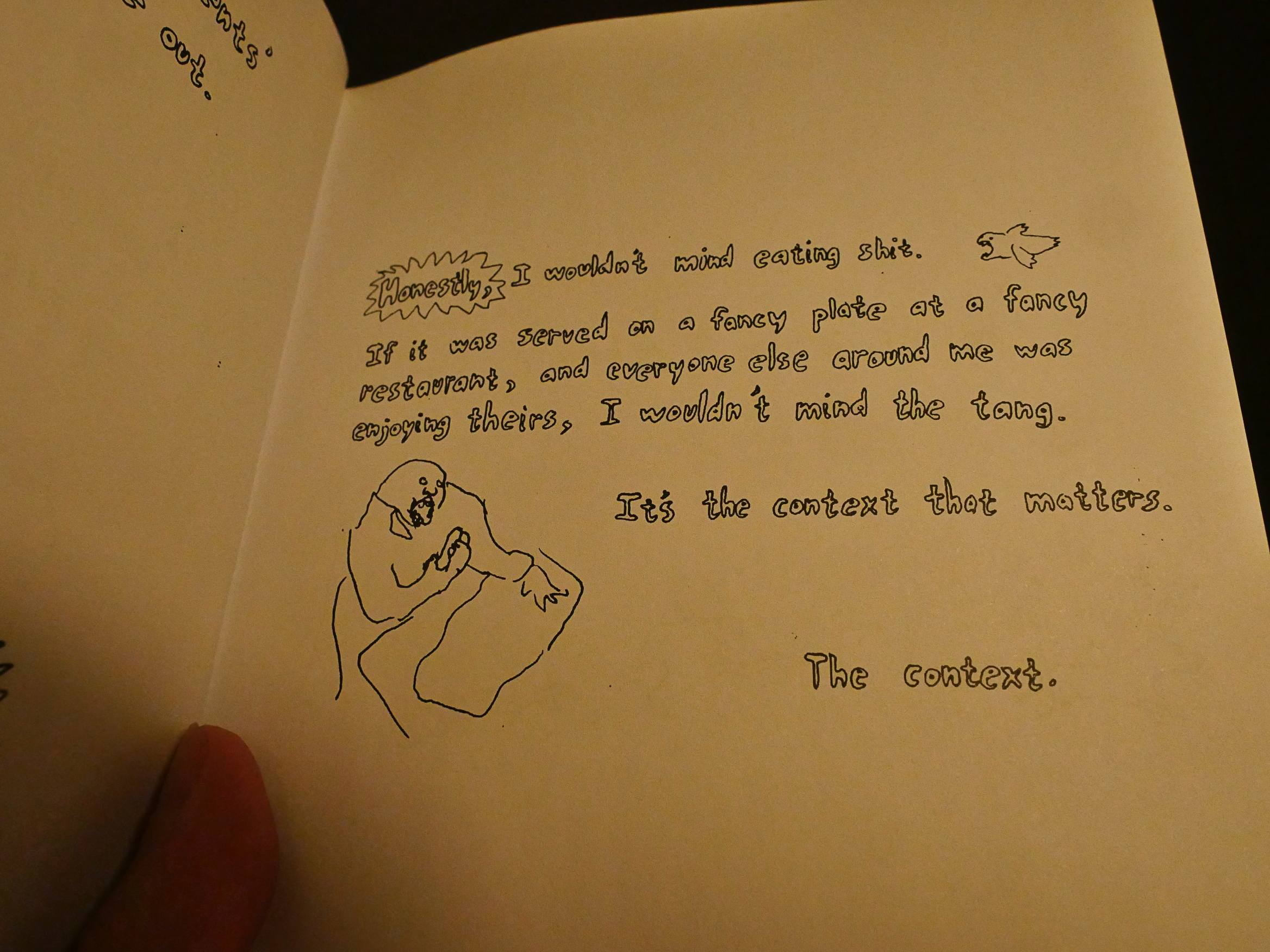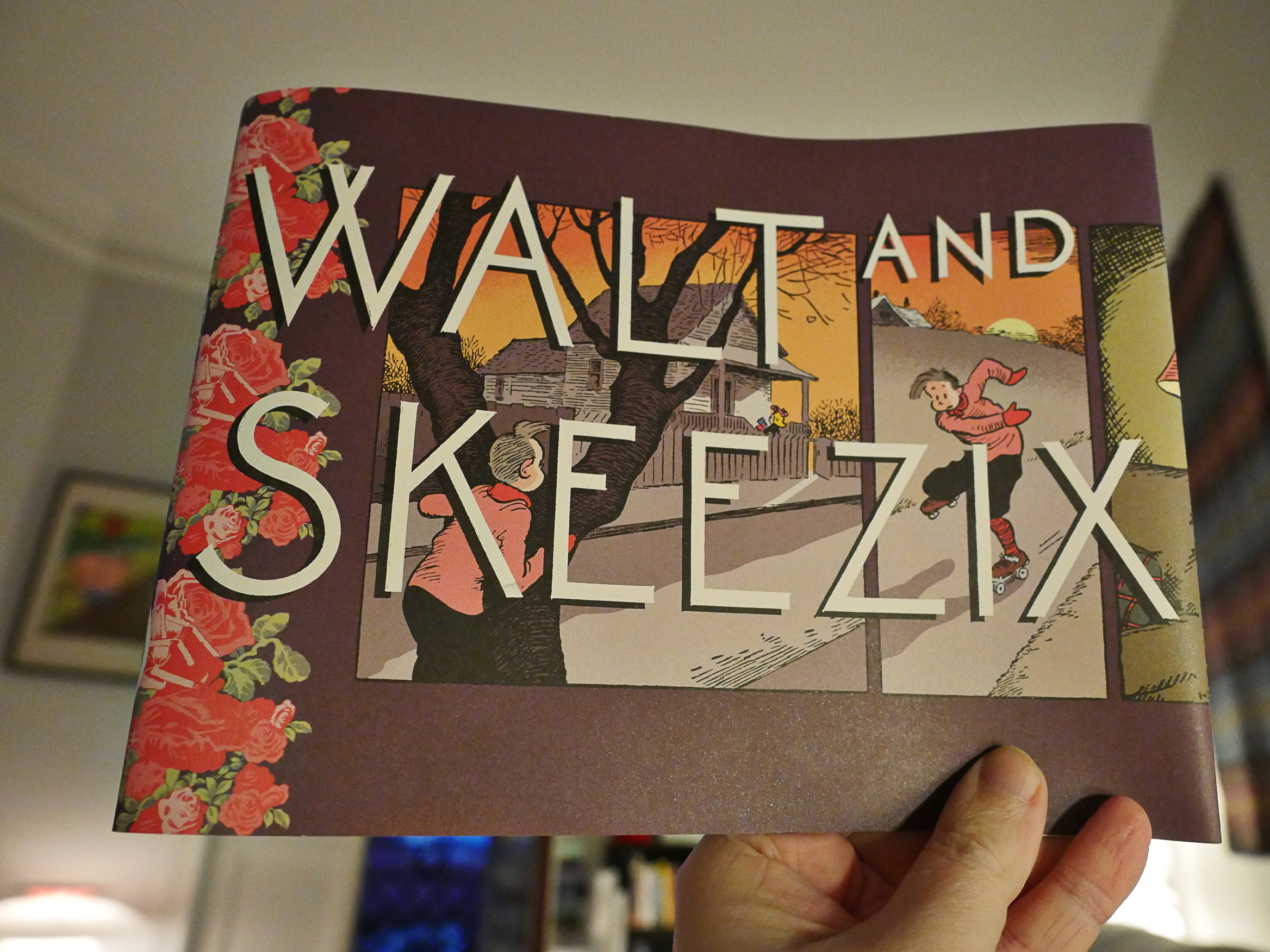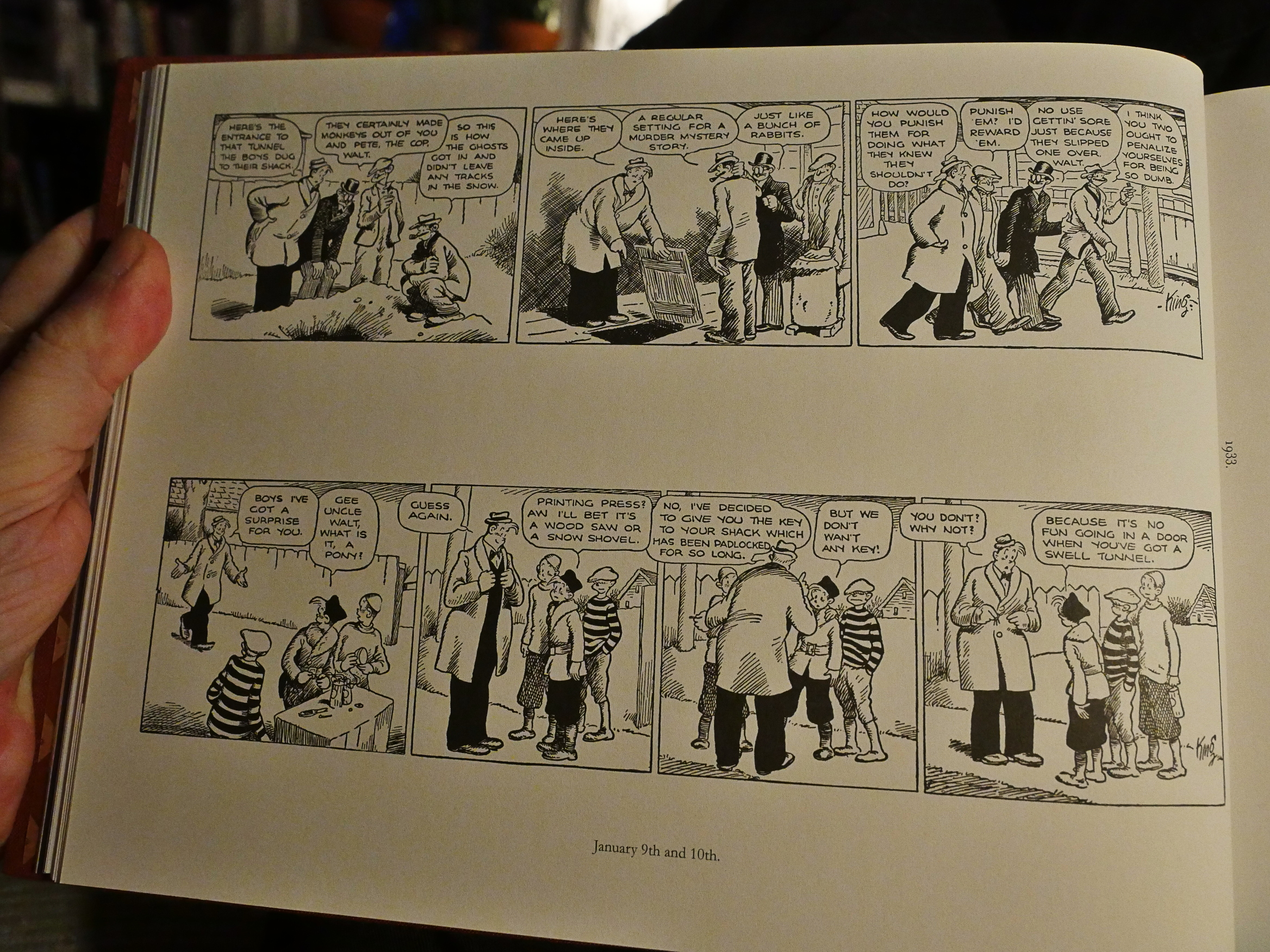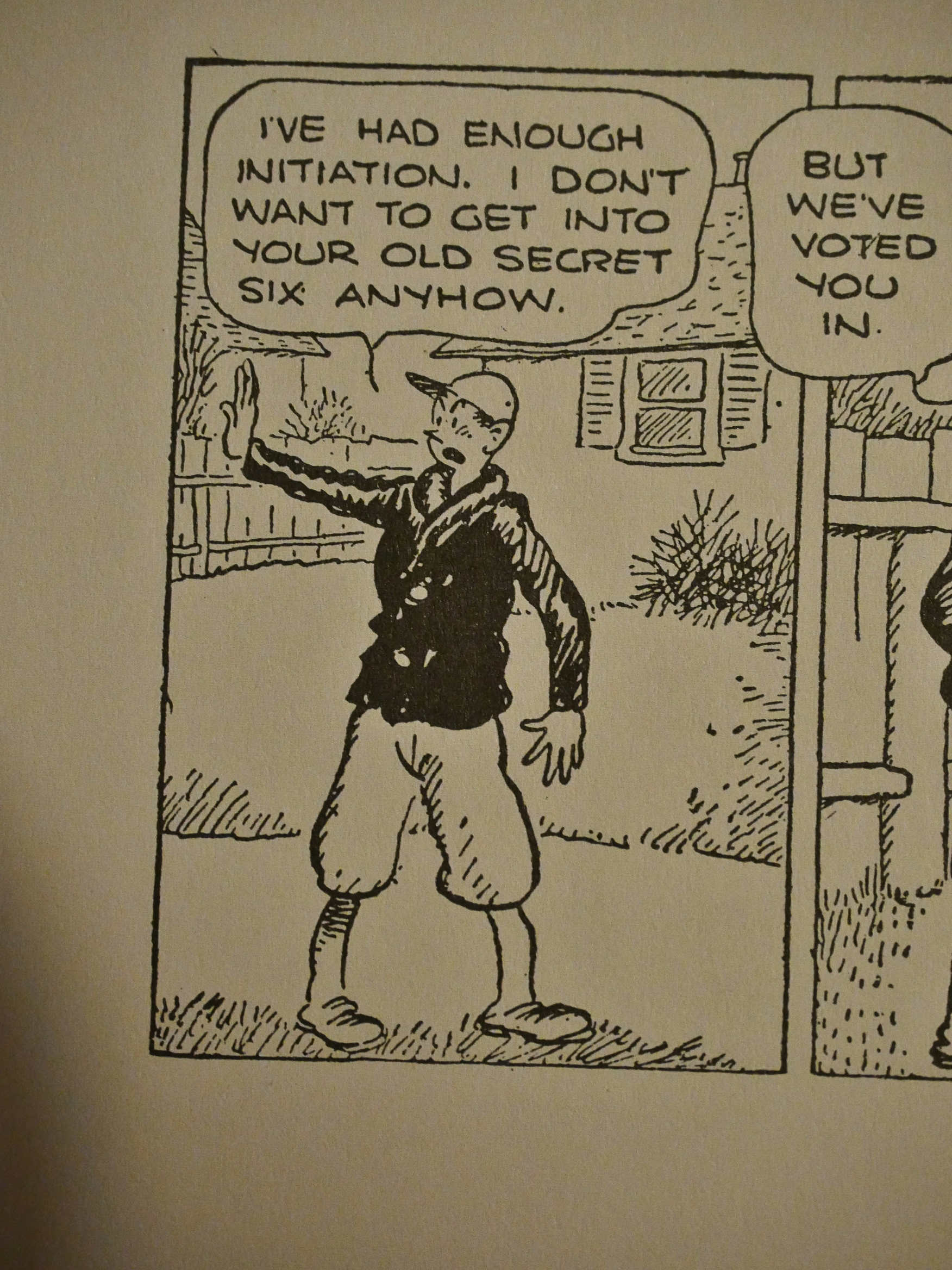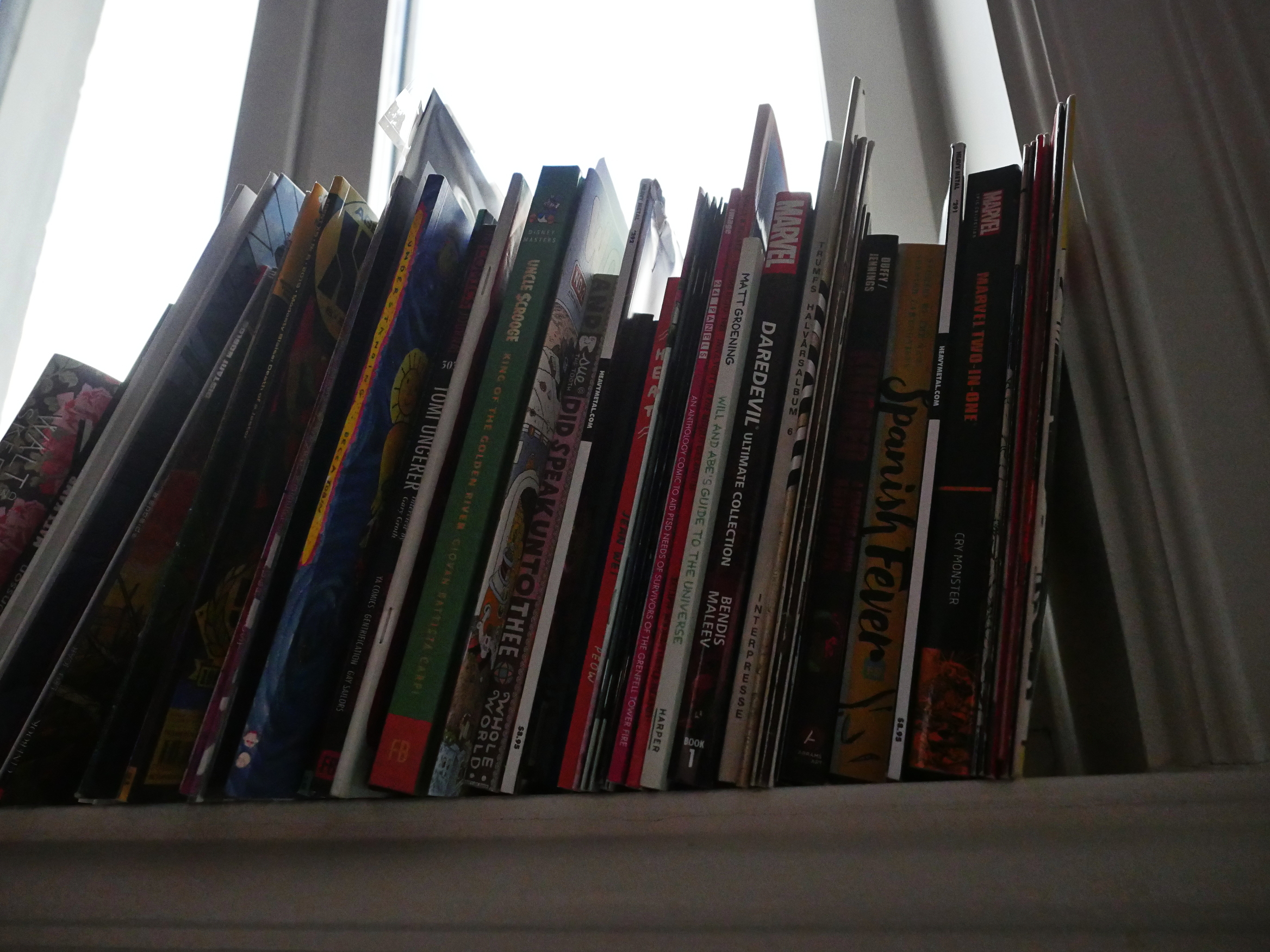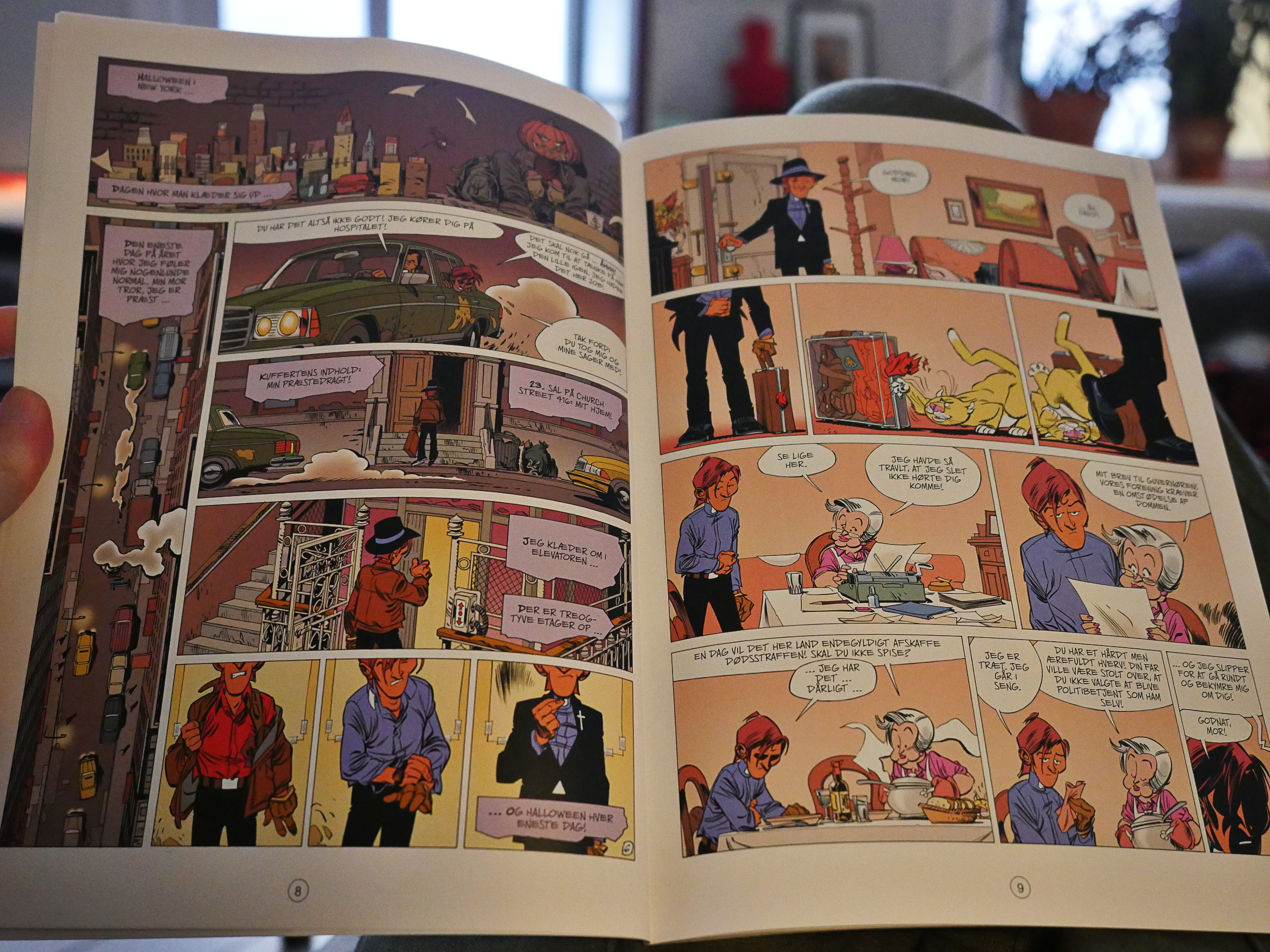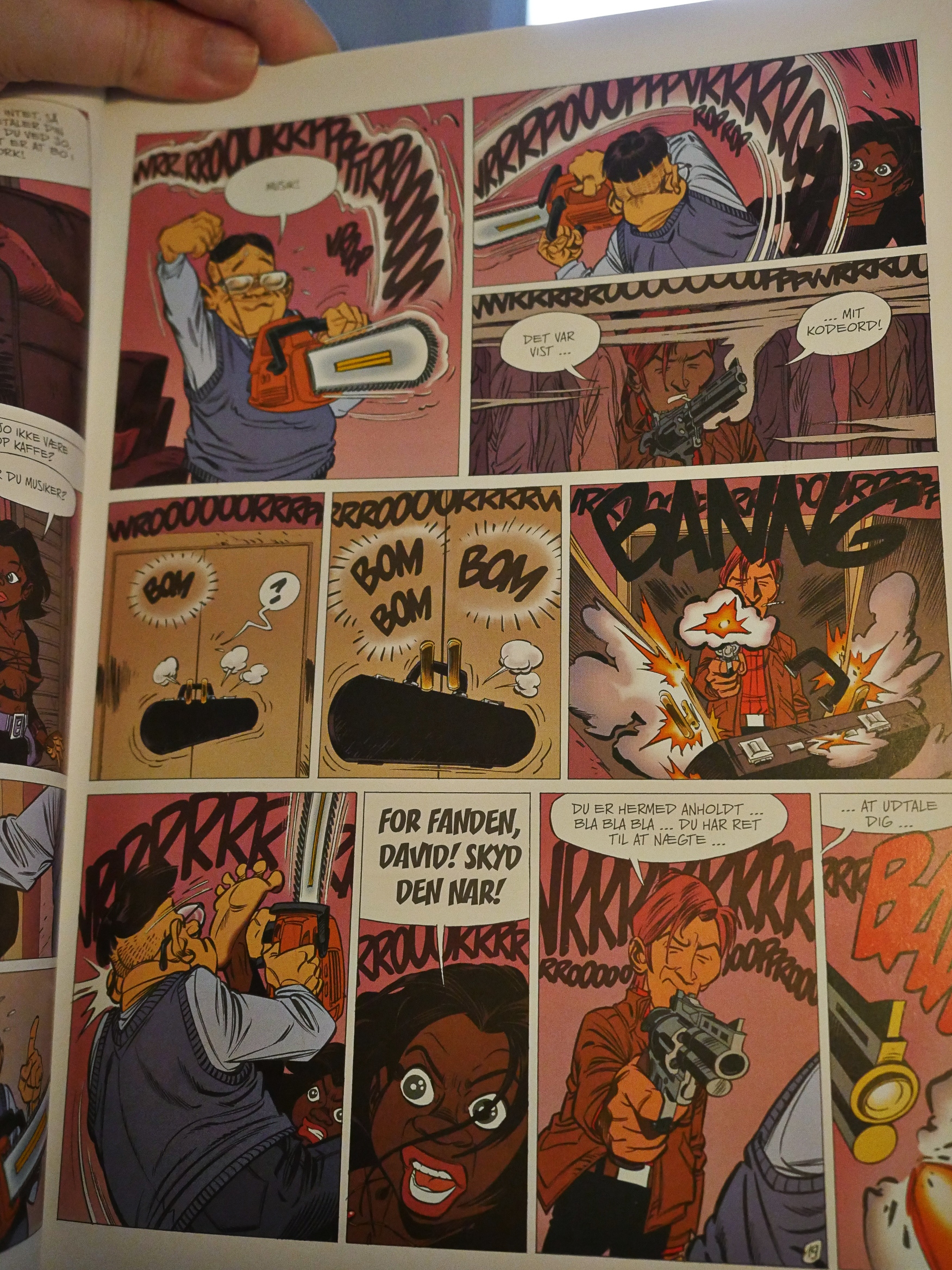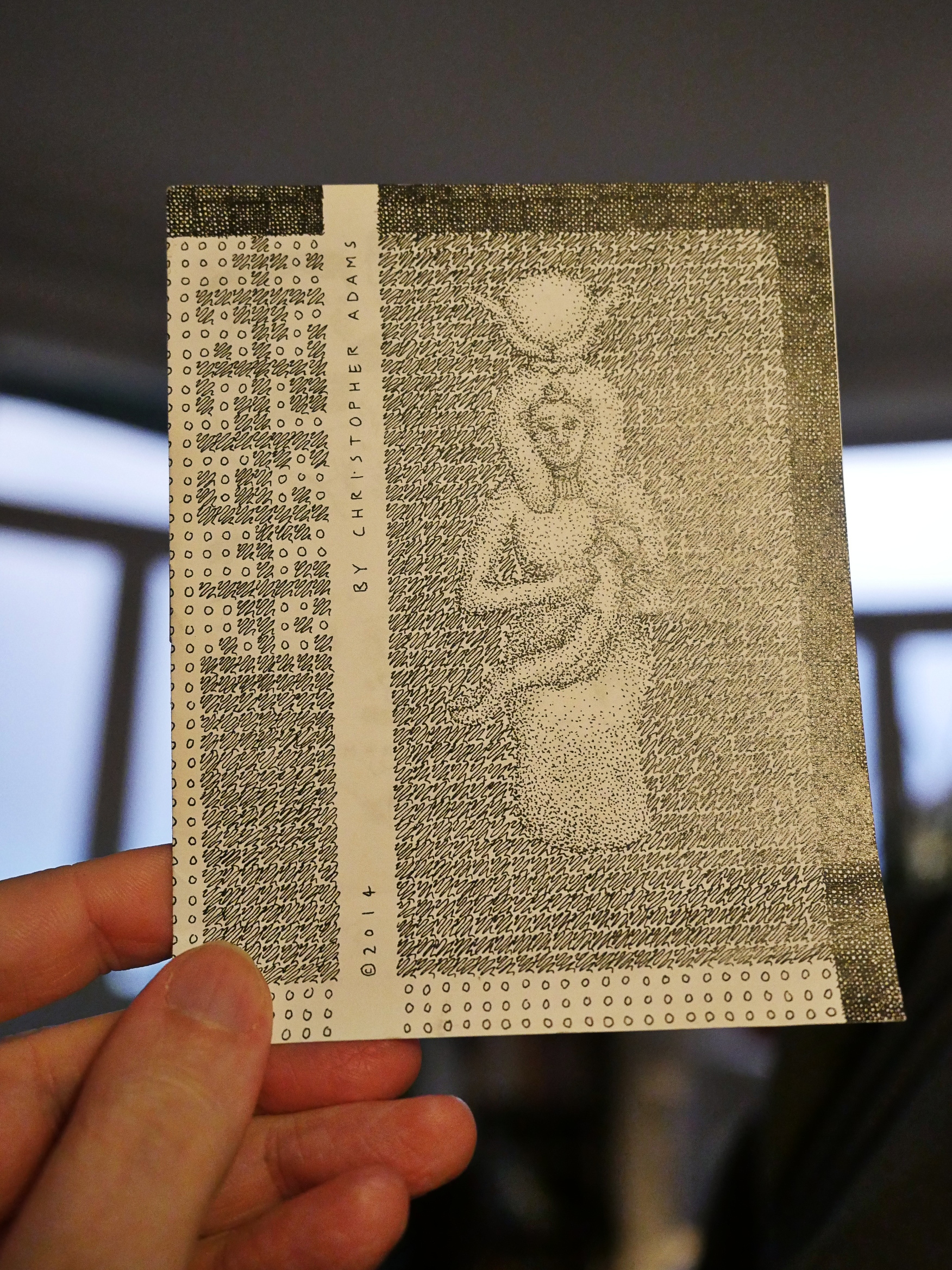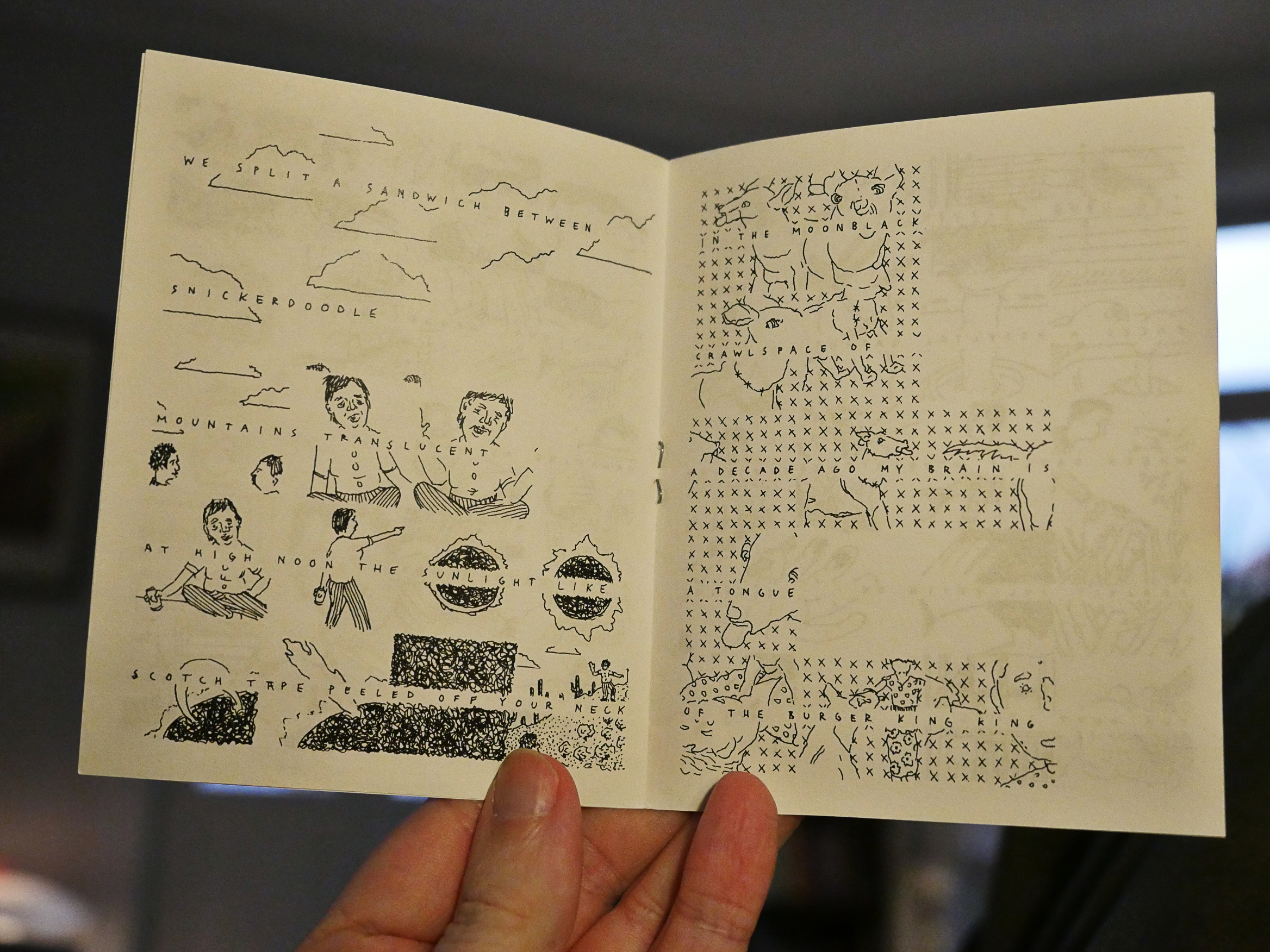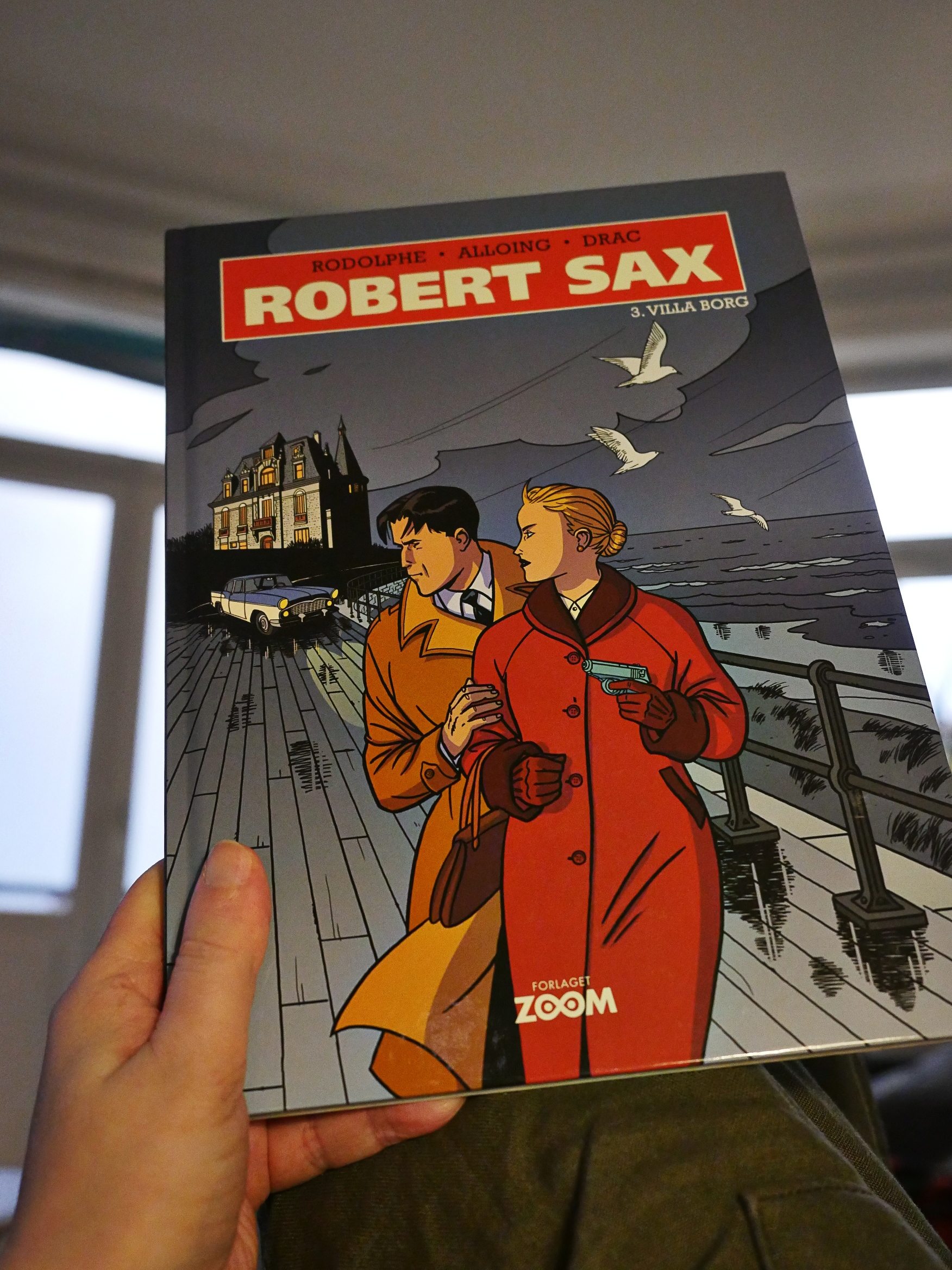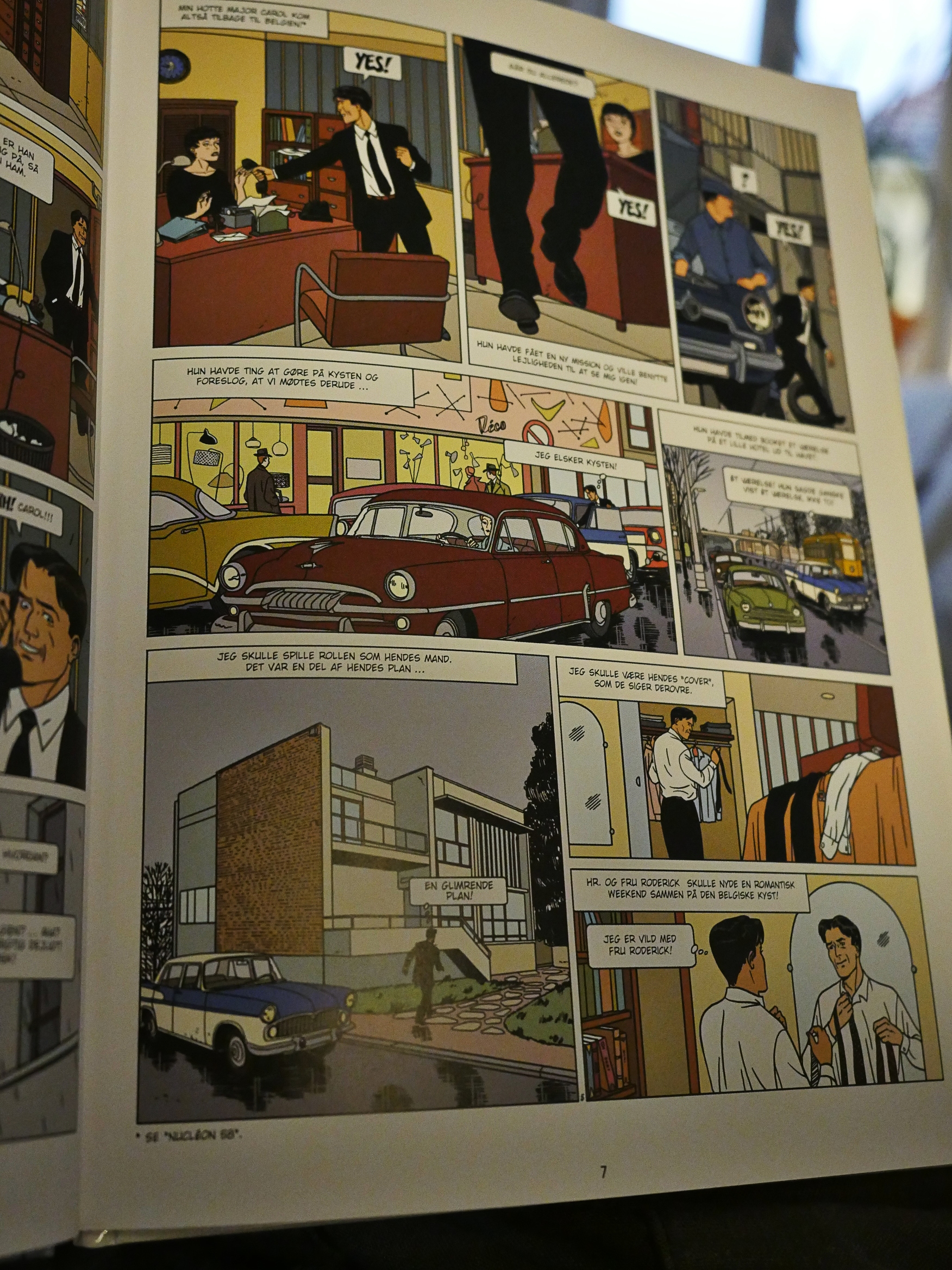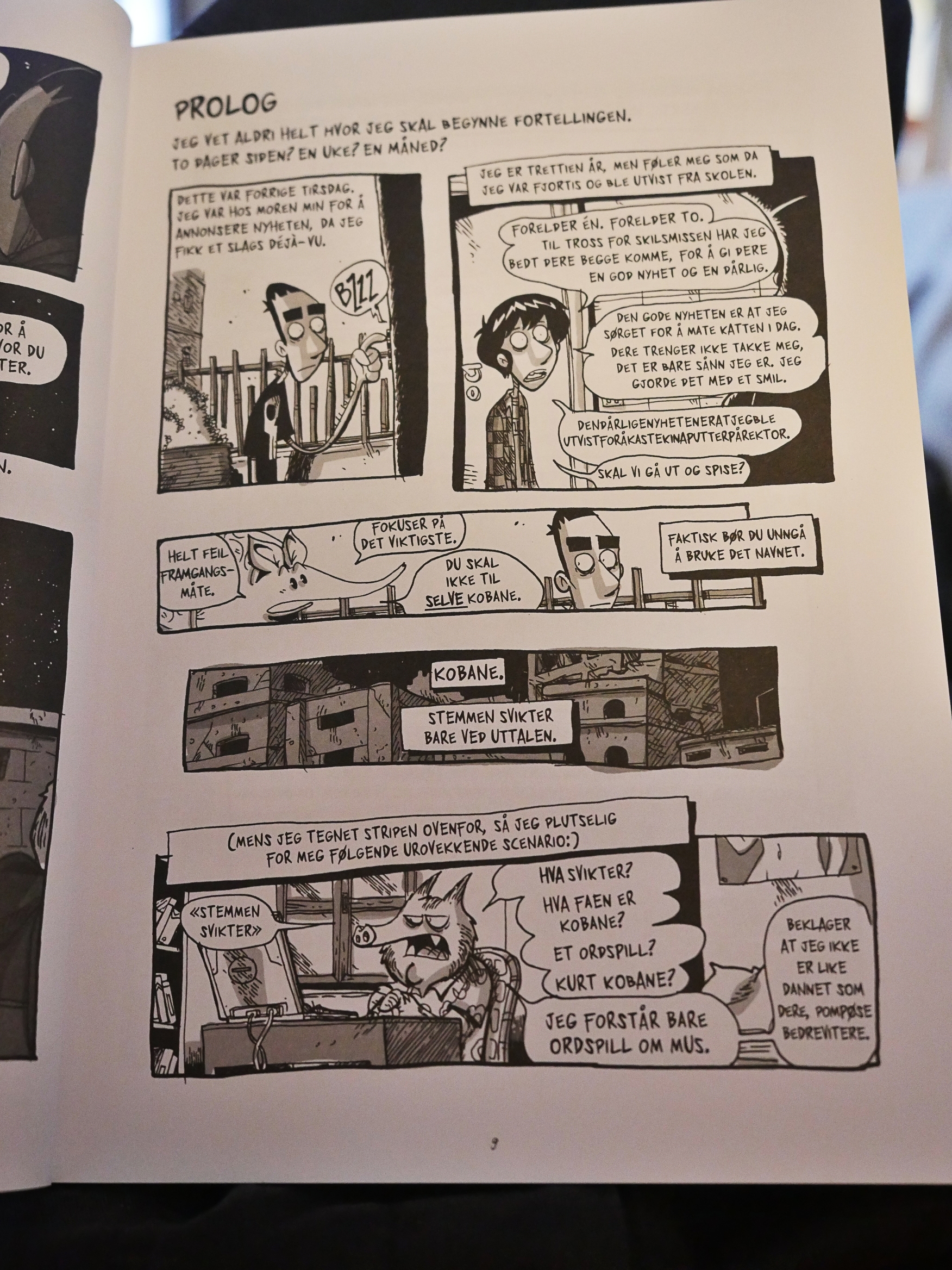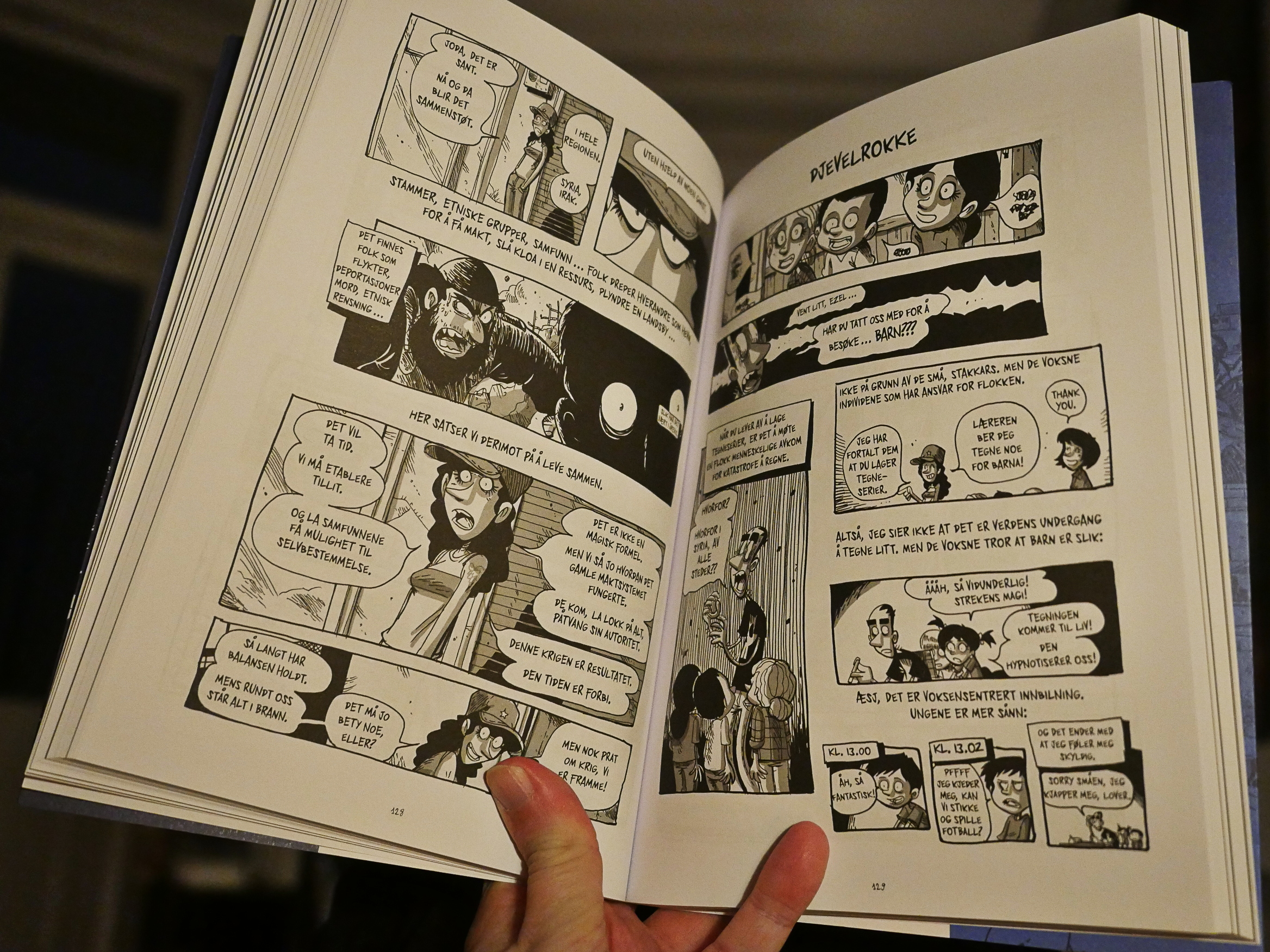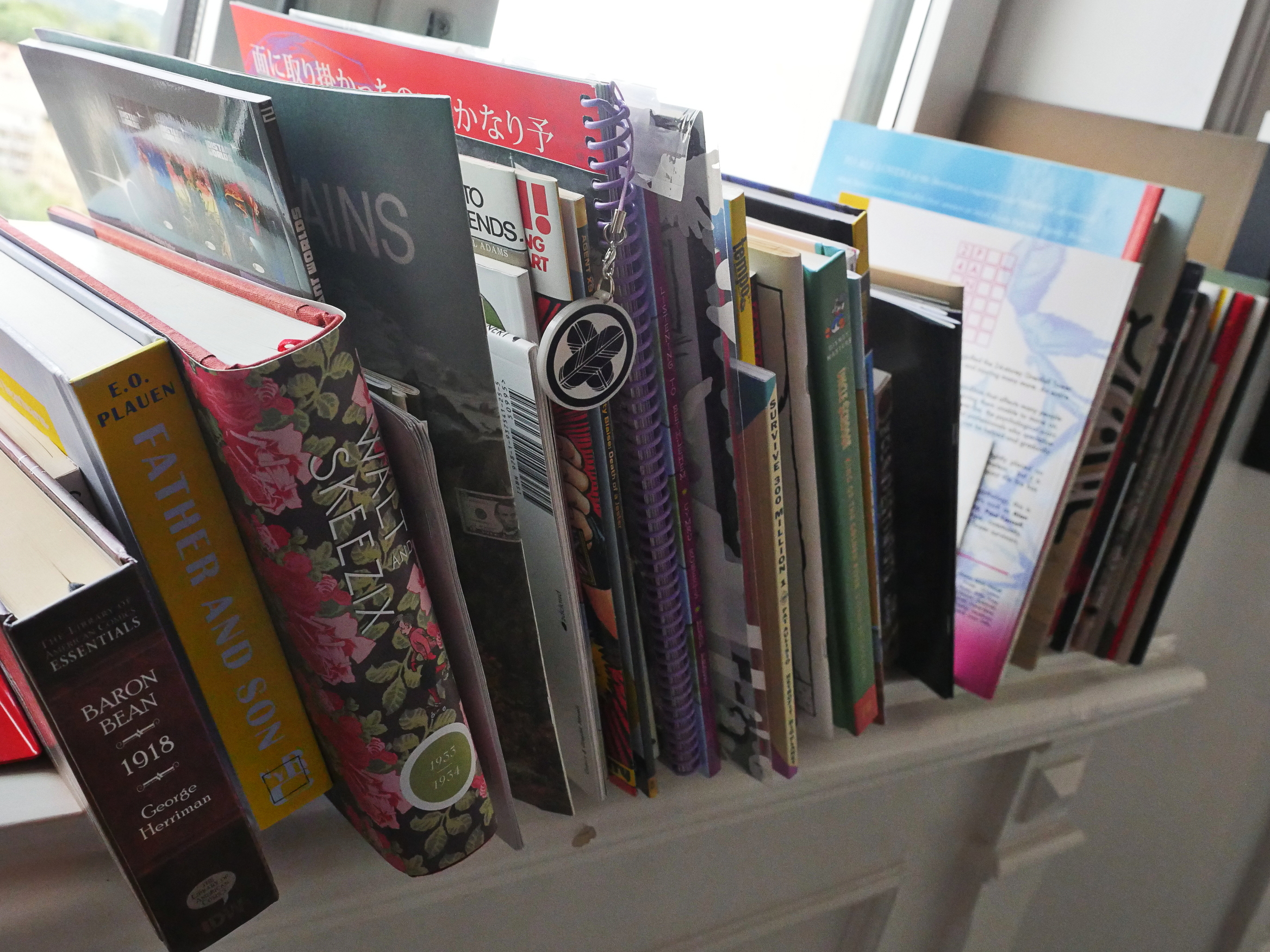
The cache of unread comics has shrunk considerably! So let’s get reading, and as usual: No reviewing.

Fashion Forecasts by Yumi Sakugawa (Retrofit/Big Planet)

So this booklet is based on an Insta thing?

Hey, this is amazing.

Not only is it funny, but the artwork’s so appealing. Love the colours. It would have been nice if it had some kind of progression to it, but it doesn’t really build up to greater fashion fabulousness, but just starts off high and keeps it there…
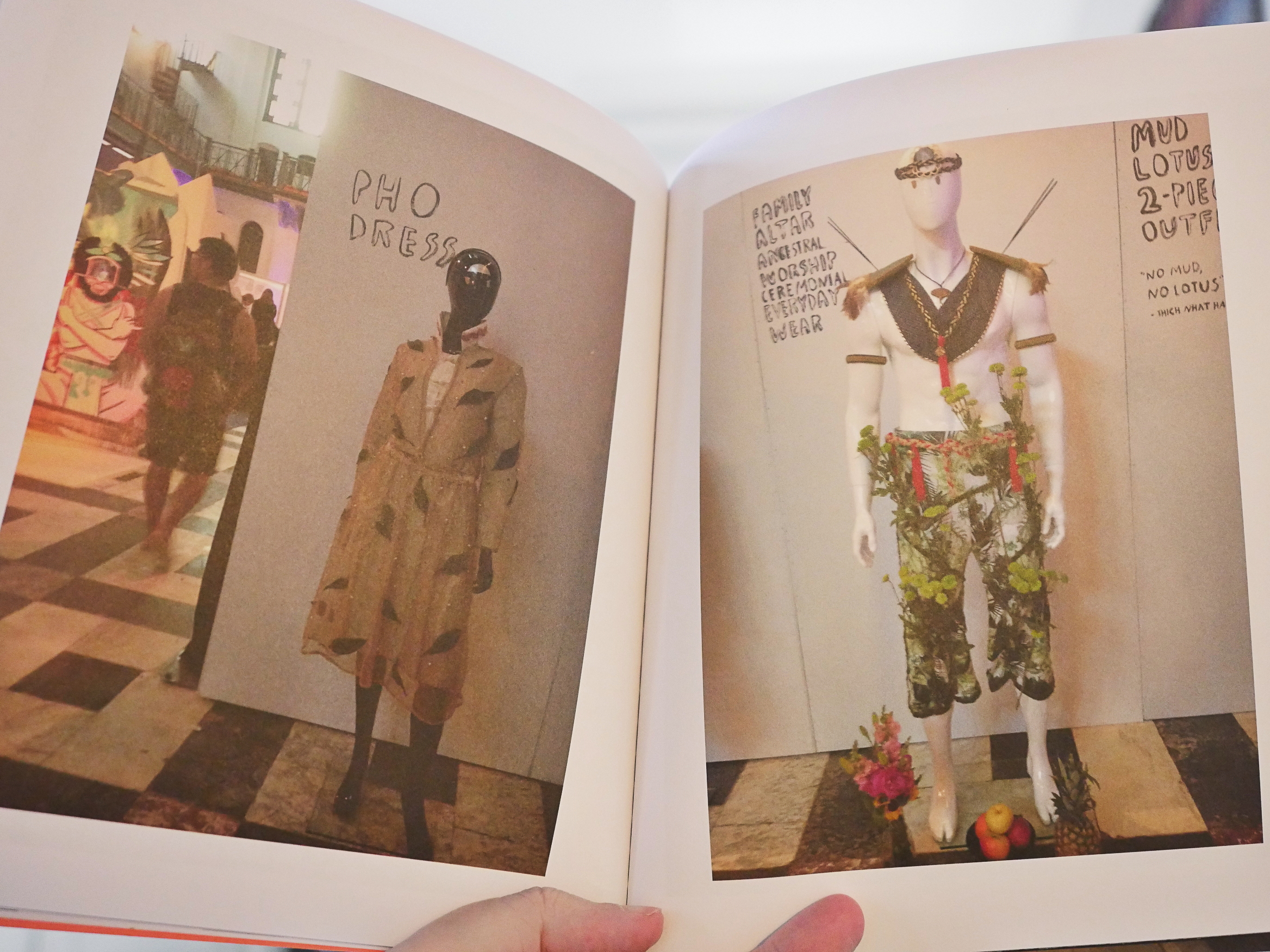
Oh! Somebody made these clothes into reality!?
Wonderful.
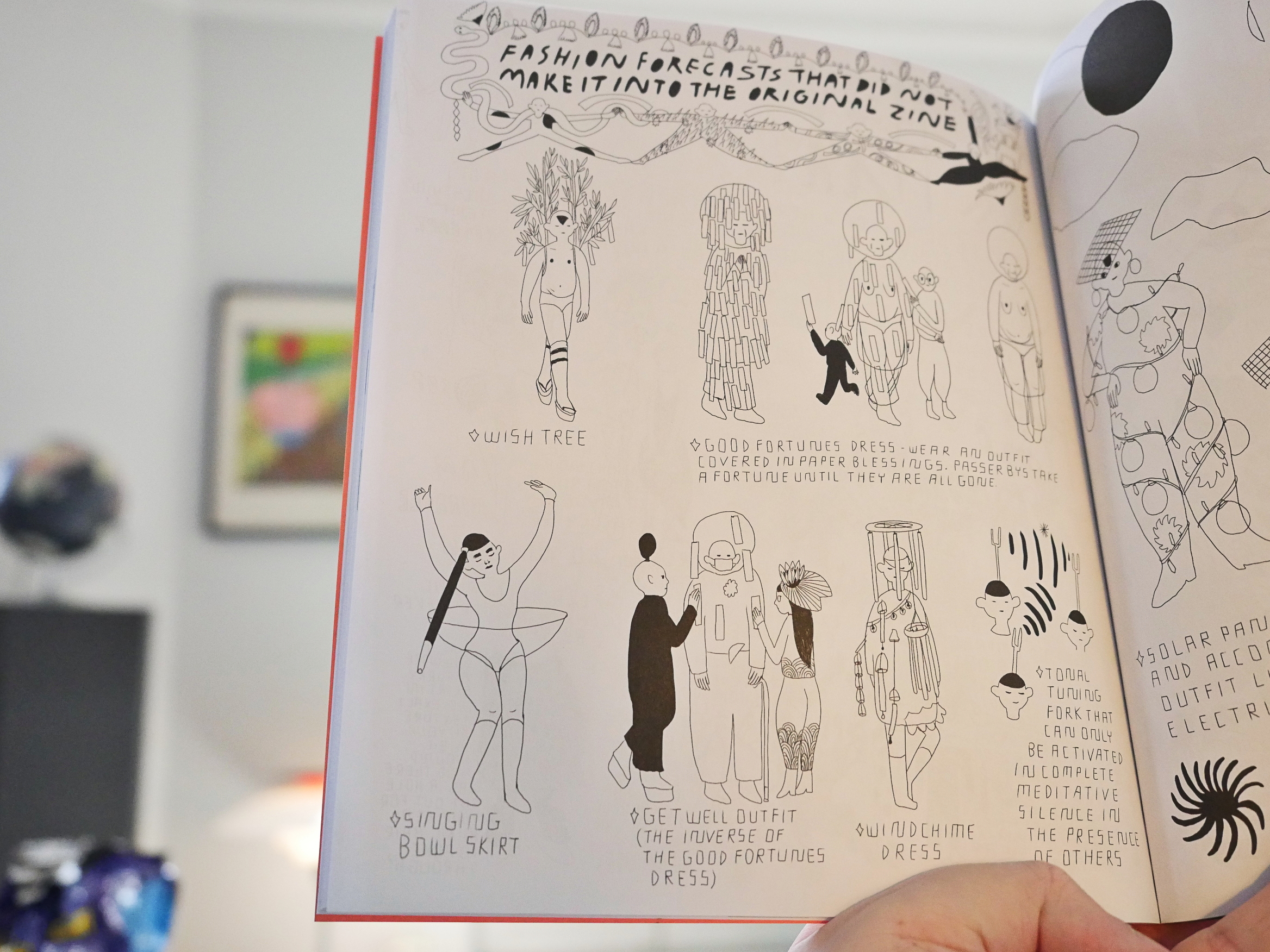
And then there’s other bits and pieces that relate to the concept… This book feels less than a book than a… show catalogue? Perhaps that’s what it is? I’m slightly disappointed by the whole thing, because it started off so strong.

Man-Eaters #9 by all those people above (Image)

Man-Eaters is a very high concept book with a sort-of strange execution. It’s about how girls turn into were-panthers once they begin menstruating, so the gummints response to that is to give them hormones to make them not menstruate. (I think?) It’s a lot of fun!
The strangeness here is that the artwork is super-duper “mainstream” “realism”…
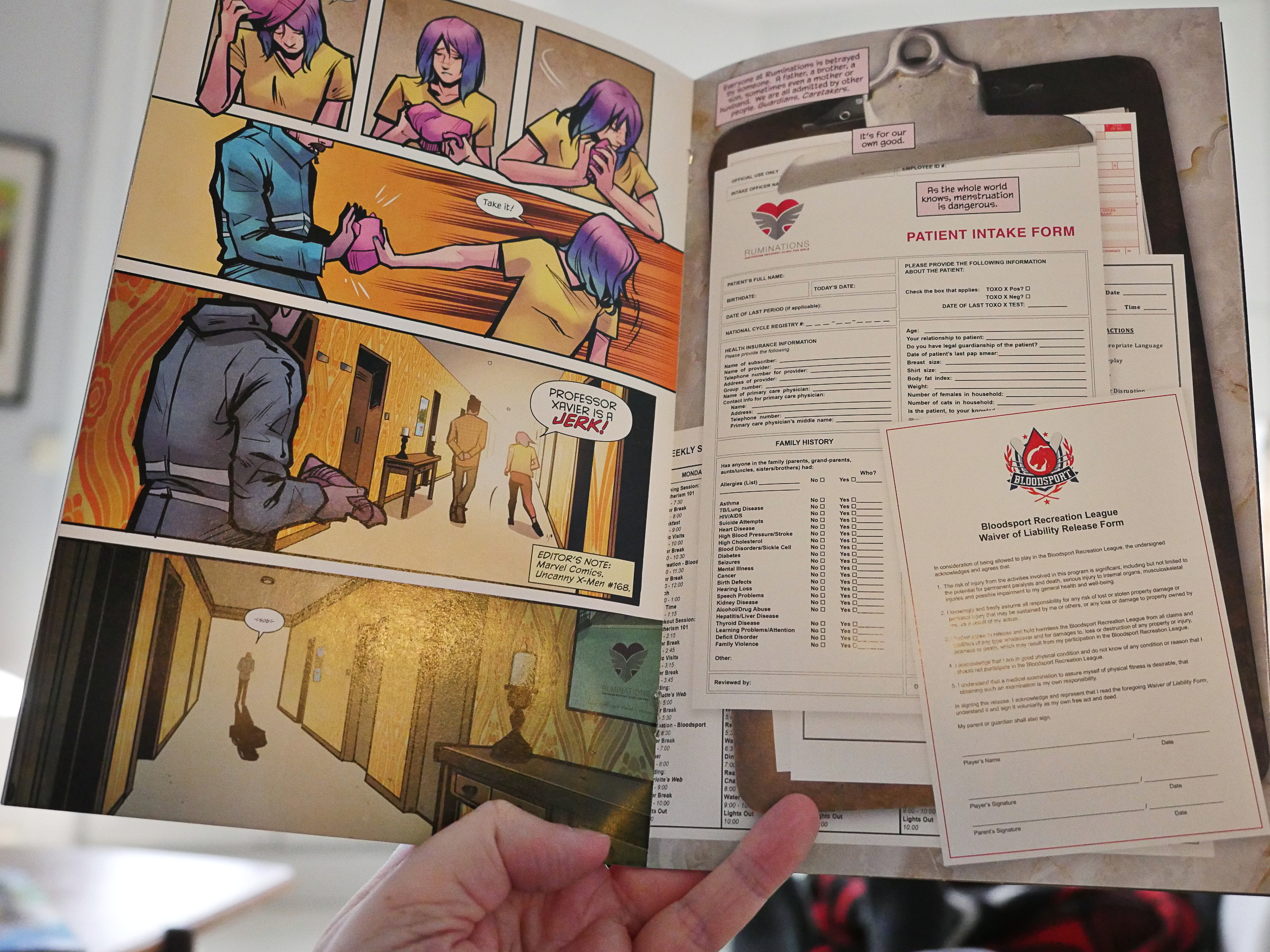
… while being mixed in with a lot of other “found” material (forms, magazines, books, ads), and that doesn’t really quite work for me. Perhaps it’ll read better in the collected edition, because there’s so little happening per issue that it’s difficult to get a grasp on it.

Oh, yeah, this was the issue that broke the twitters. For some reason, some transsexual women felt that a storyline that involved menstruation as the major plot point was exclusionary or something. Somehow Cain didn’t respond with *rolls eyes*, but instead included the tweets in the book…
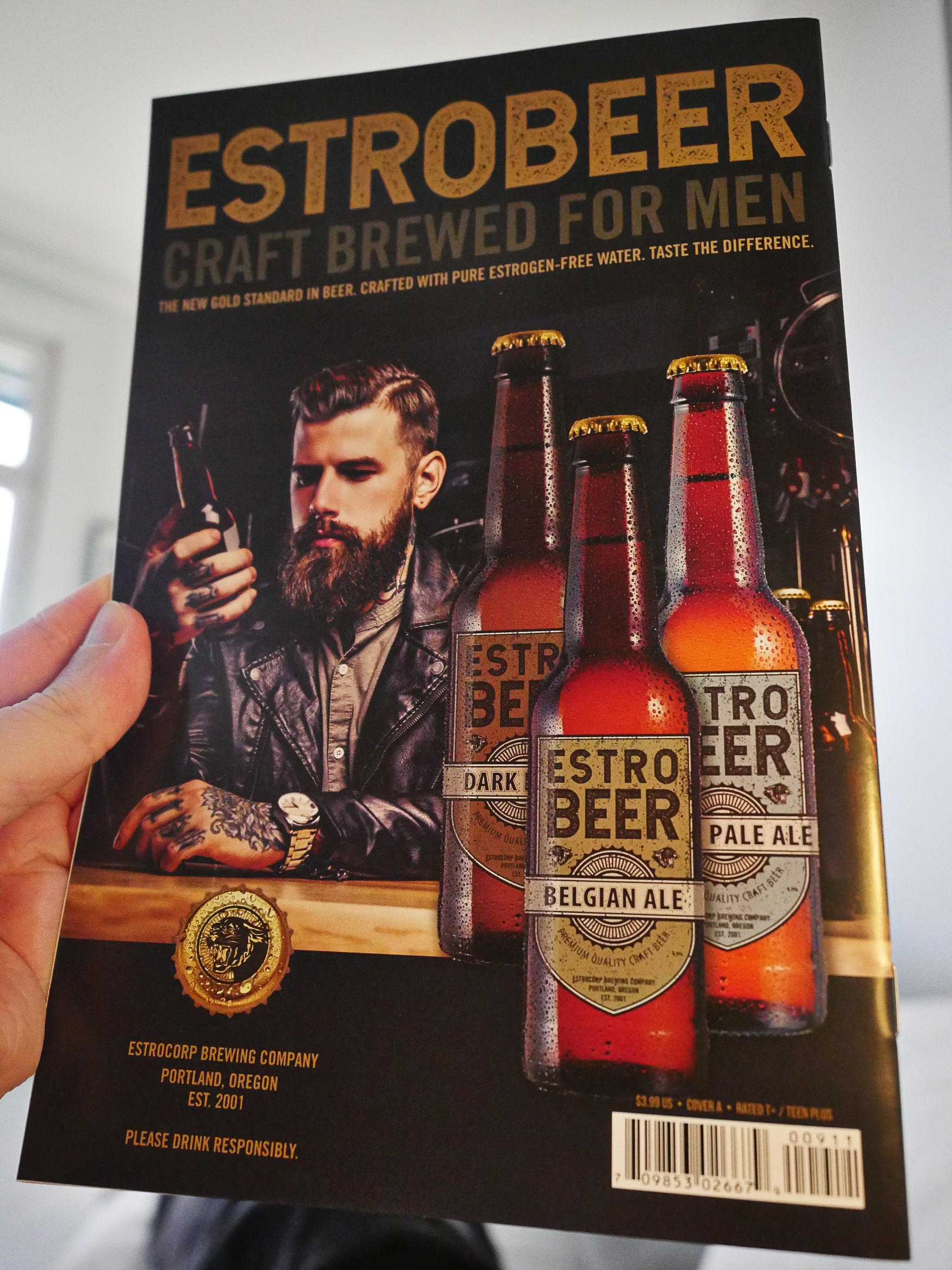
Oh, yeah, one of the things that’s been confusing me throughout this book is why all the estrogen-free drinks are called something with “estro”. Isn’t that just bad branding?

The Unbeatable Squirrel Girl #45 by Ryan North, Derek Charm and other people (Marvel)

Up until now, Squirrel Girl has been immune from Marvel cross-overs (which has previously knocked the wind out of any other Marvel comic that I’ve been reading (like Howard the Duck)), but North seems to be able to muddle through. True, these are the worst Squirrel Girl issues ever, but they’re still pretty entertaining.

2001 by Blaise Larmee (2d cloud)
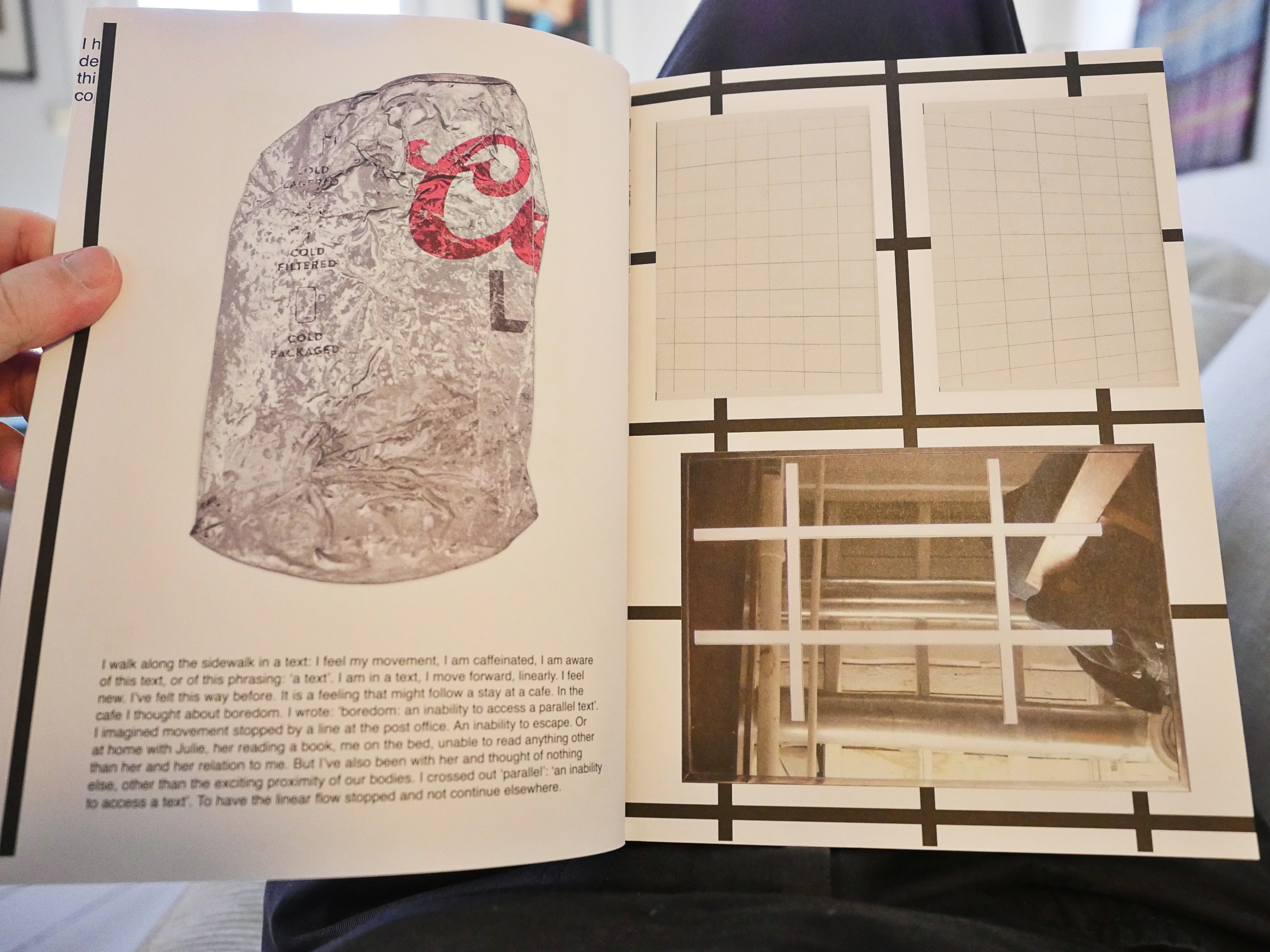
So I was wondering whatever happened to Larmee after all that drama last year… and the news item on The Beat has gone missing, leaving only a stub from the Tumblr mirror. He’s even gone from Wikipedia. Did he ever exist? This 2011 interview is still up, so perhaps… not?
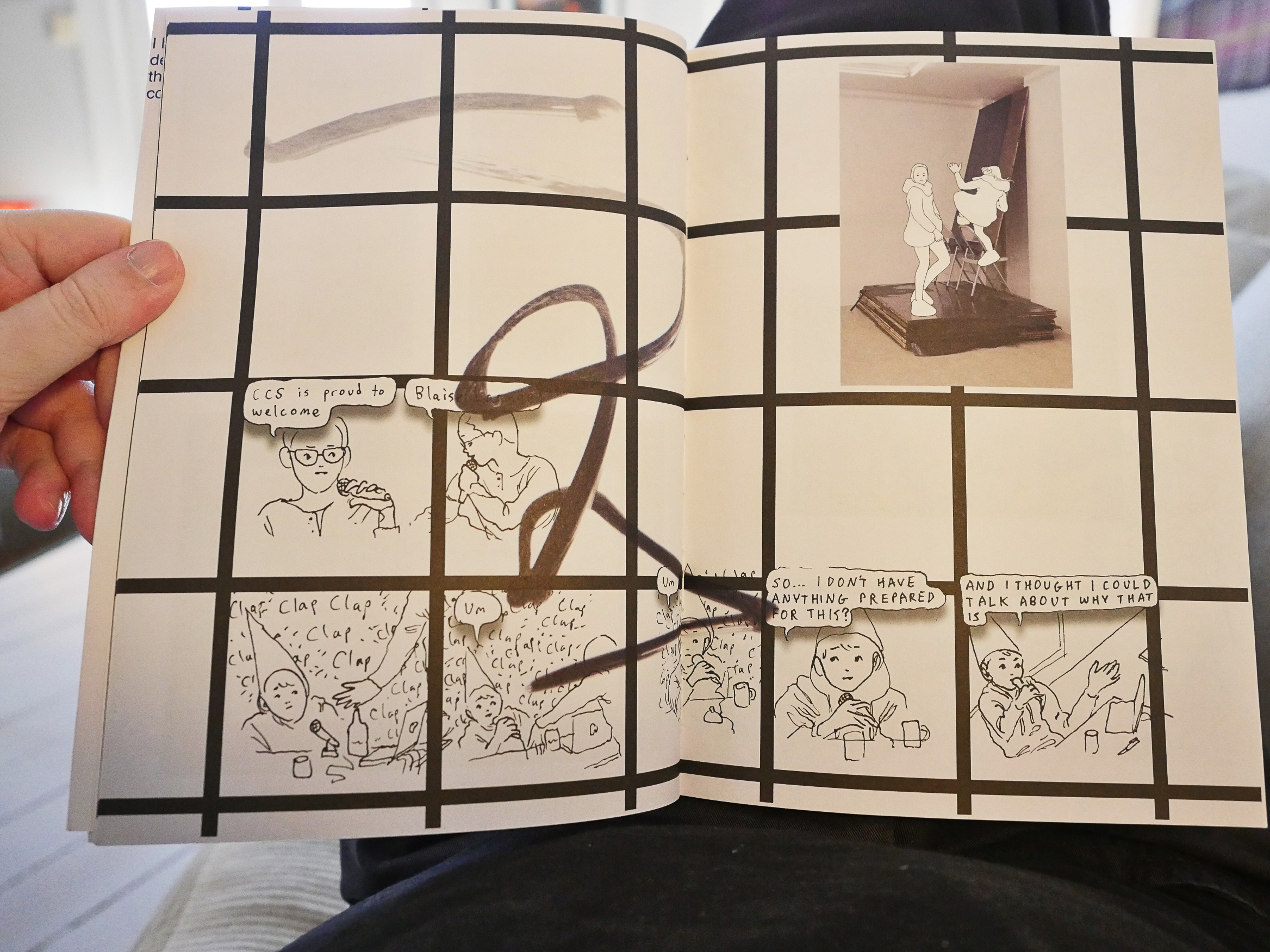
Anyway, this book is great. The play with the grid is captivating.
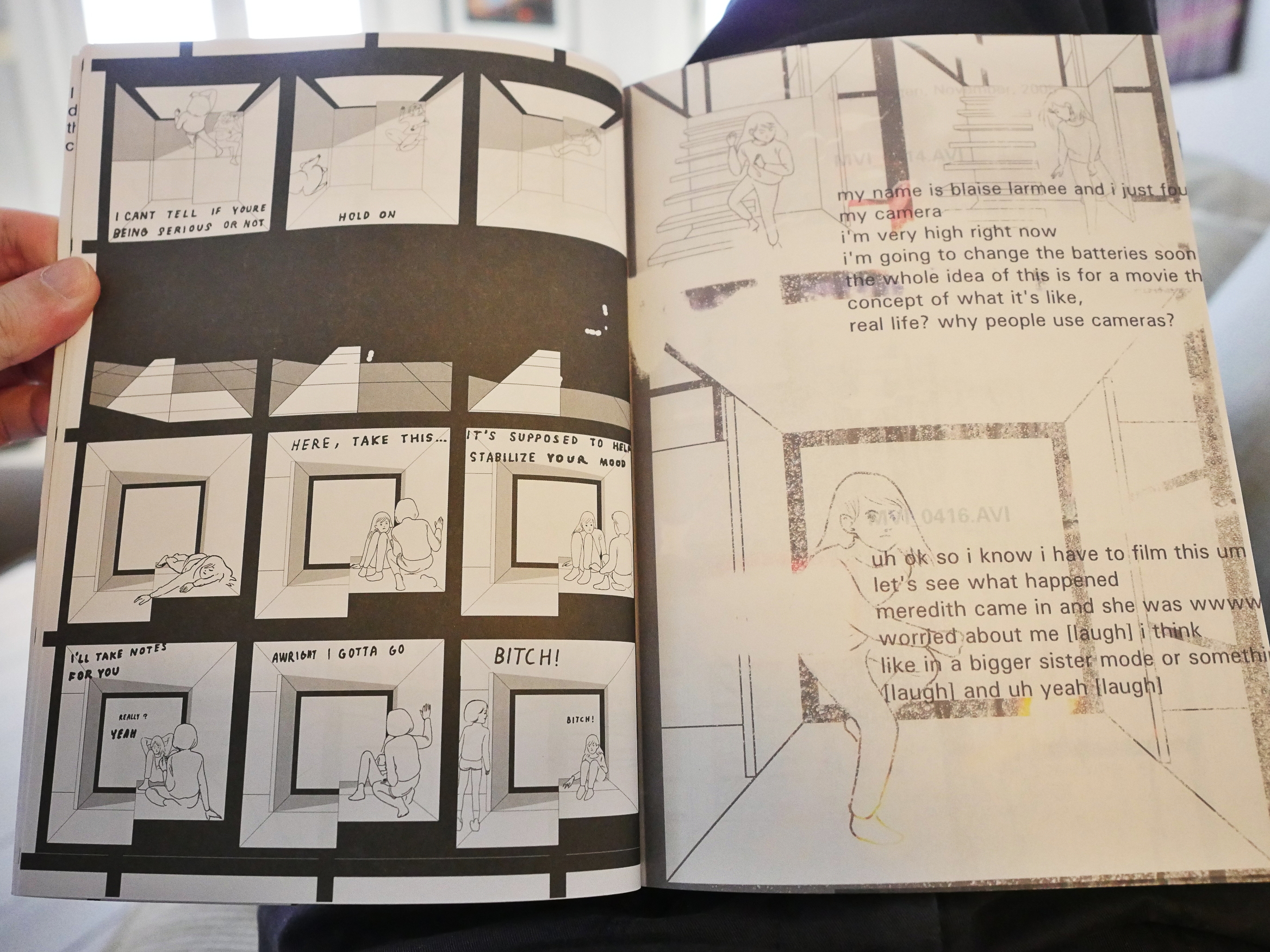
*gasp*

Flabbergasting. Well, he’s probably off somewhere doing art that pays better, I’m guessing…

Marécage (Lagon)
This is a physically beautiful object. It’s oversized, and about half the pages are riso and half are very glossy offset printing.

And it’s half in French and half in English, so there’s this booklet with translations included… which isn’t ideal…
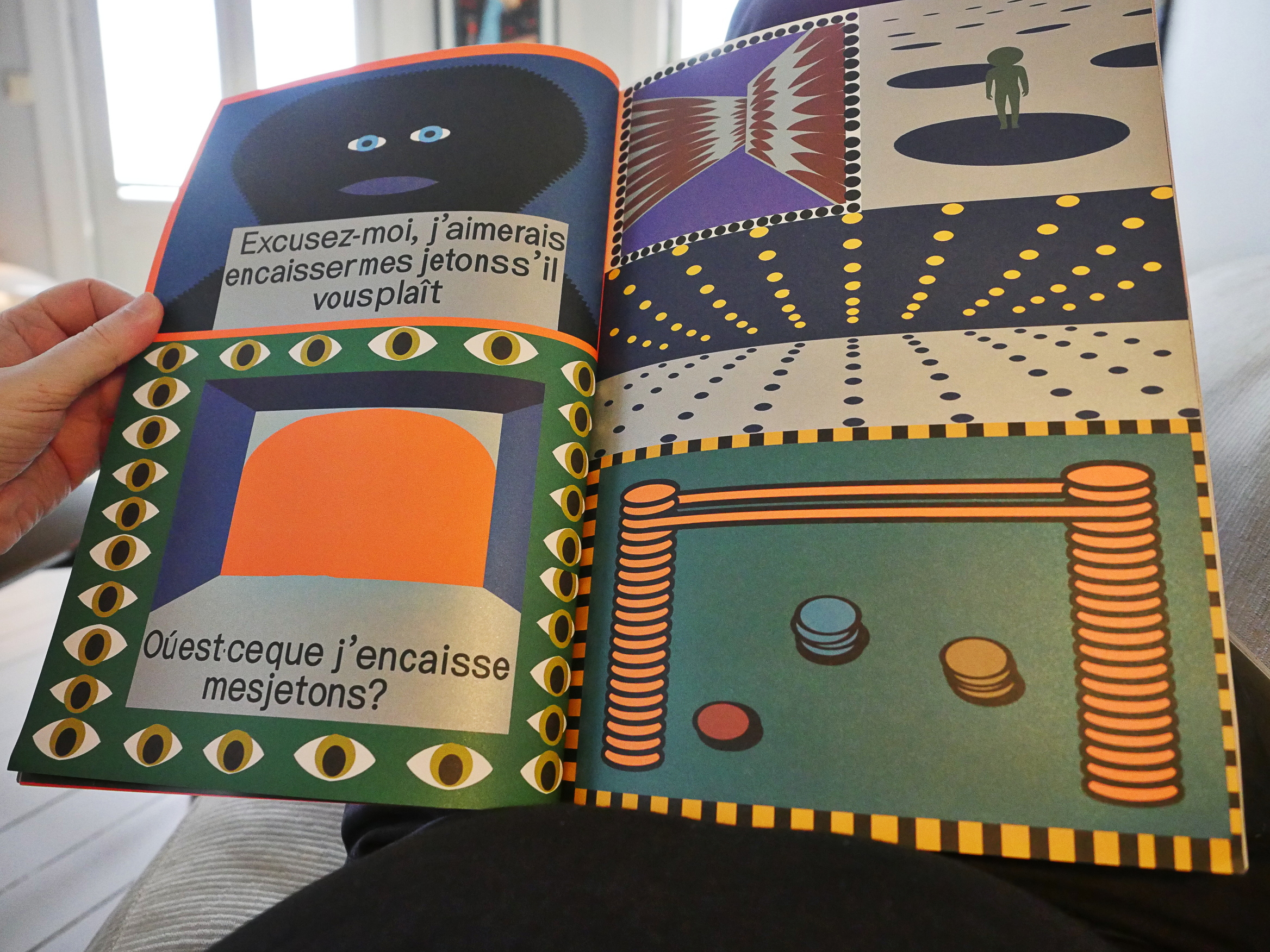
This book reminds me quite a bit of Mould Map? It’s got the same forward-looking aesthetic.
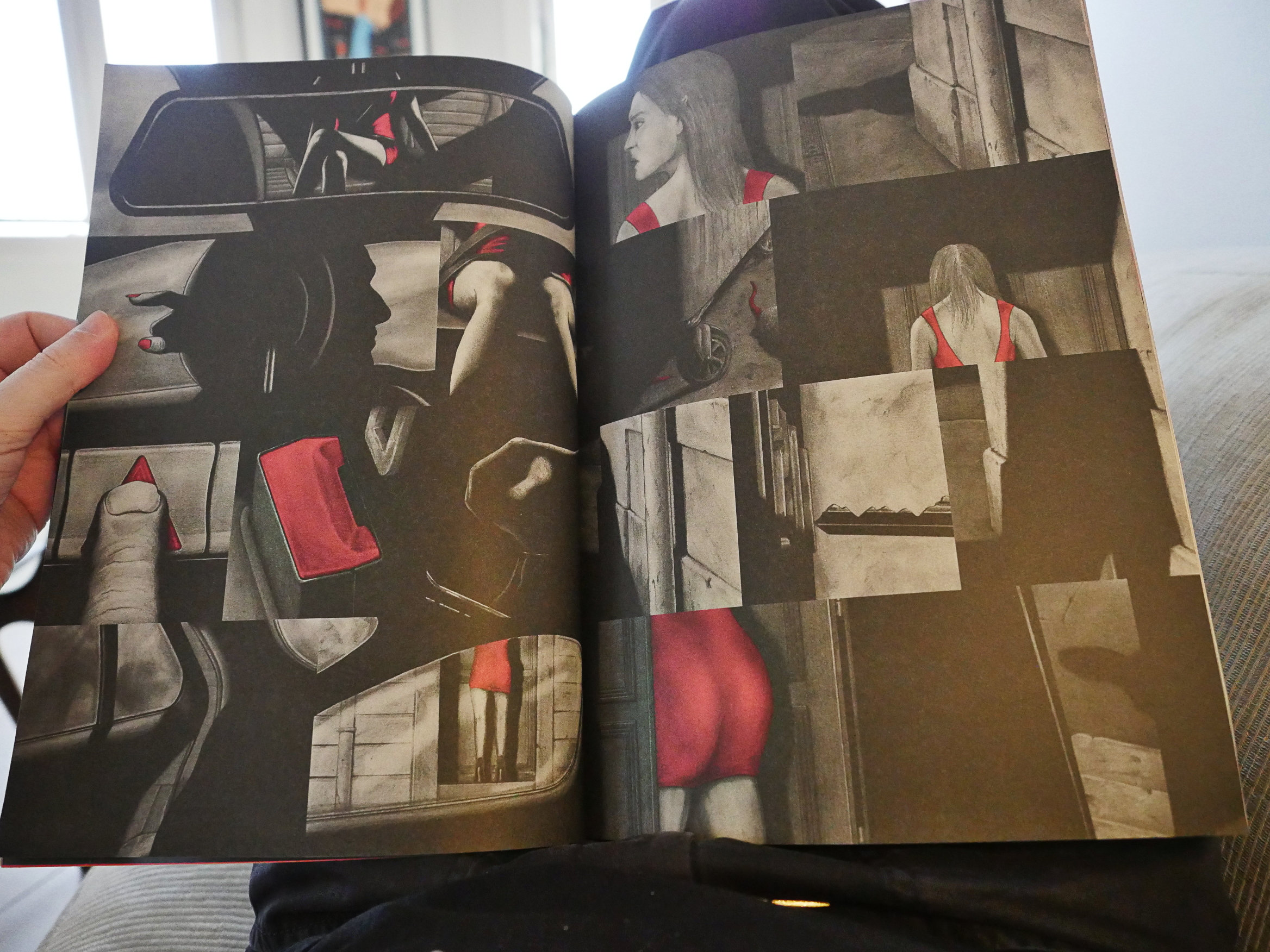
But it’s very French.
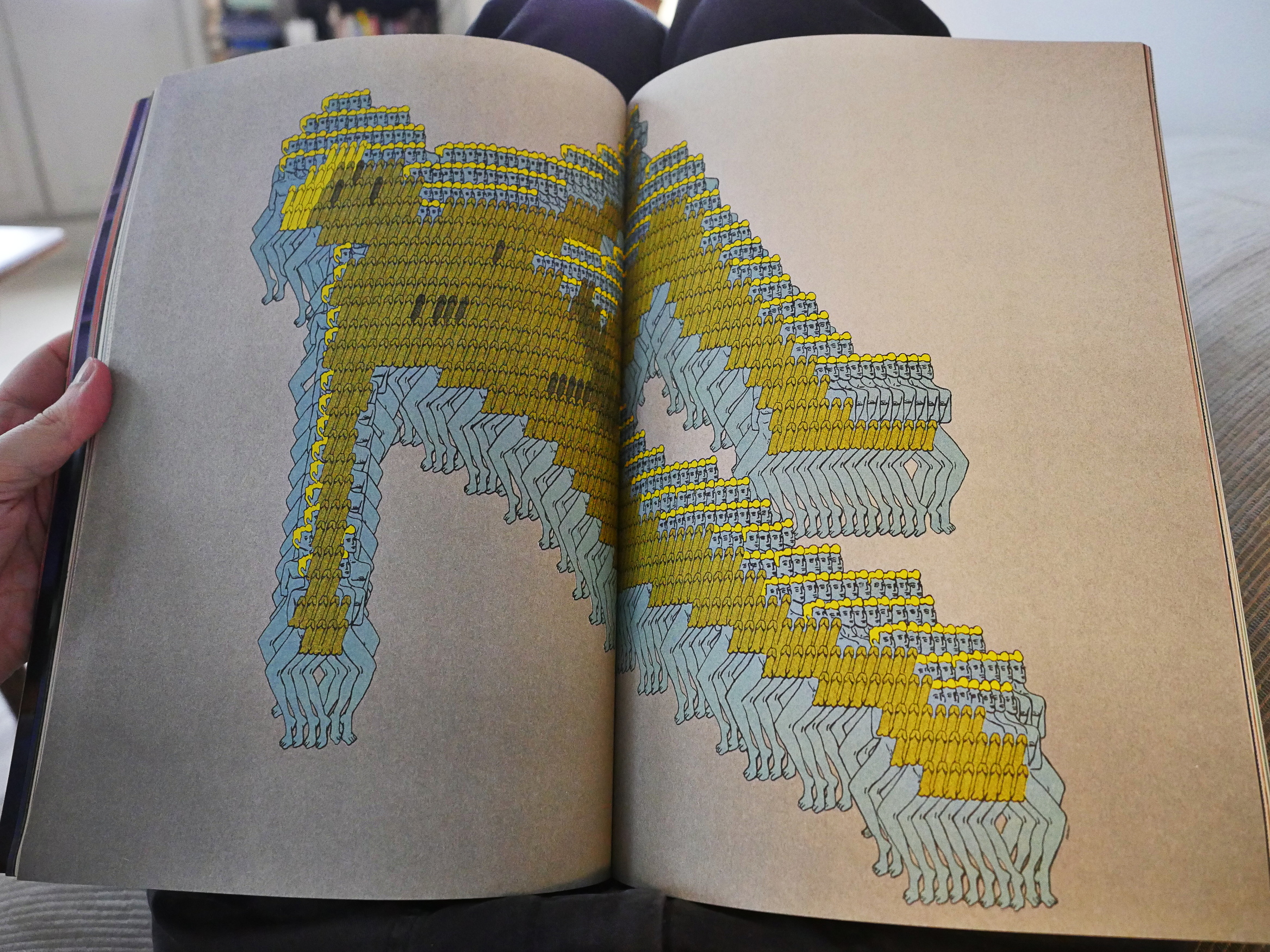
About half the pieces are non-narrative…
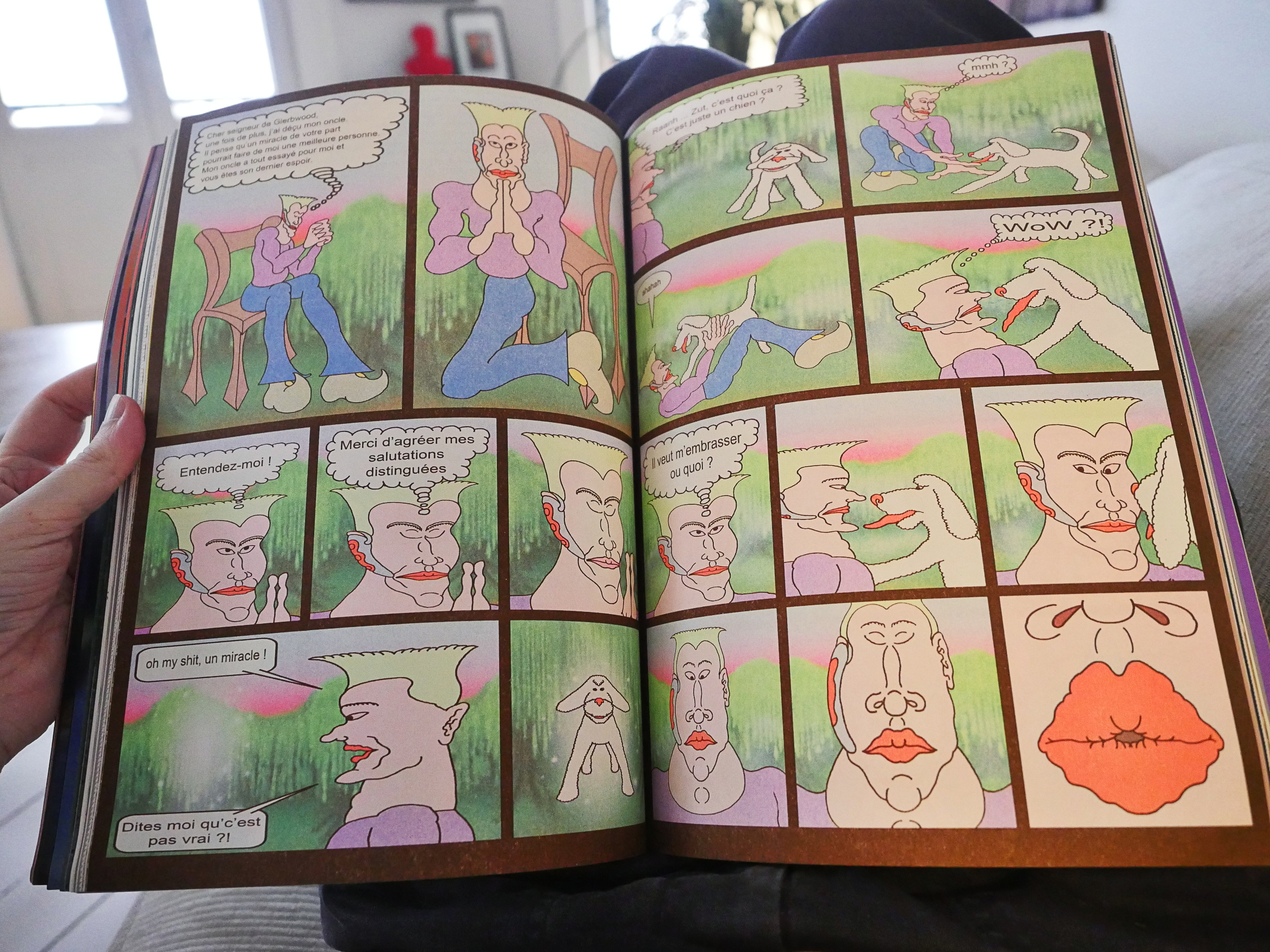
… but the ones that are aren’t… very?
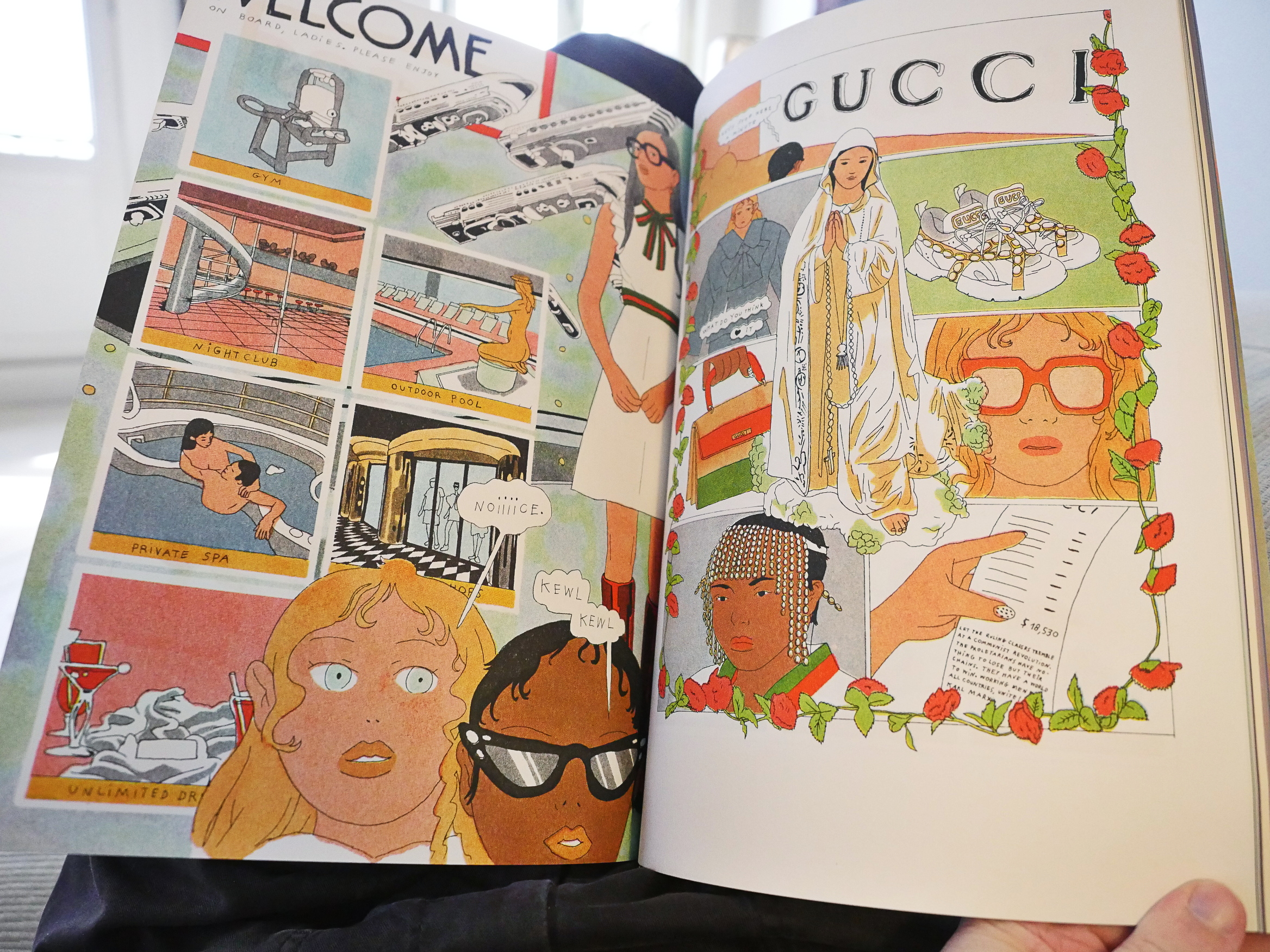
It’s amazing how varied the approaches are while still being a coherent reading experience.

Ooo! Jaakko Pallasvuo! And he provides the funniest piece.
It’s a pretty amazing publication.
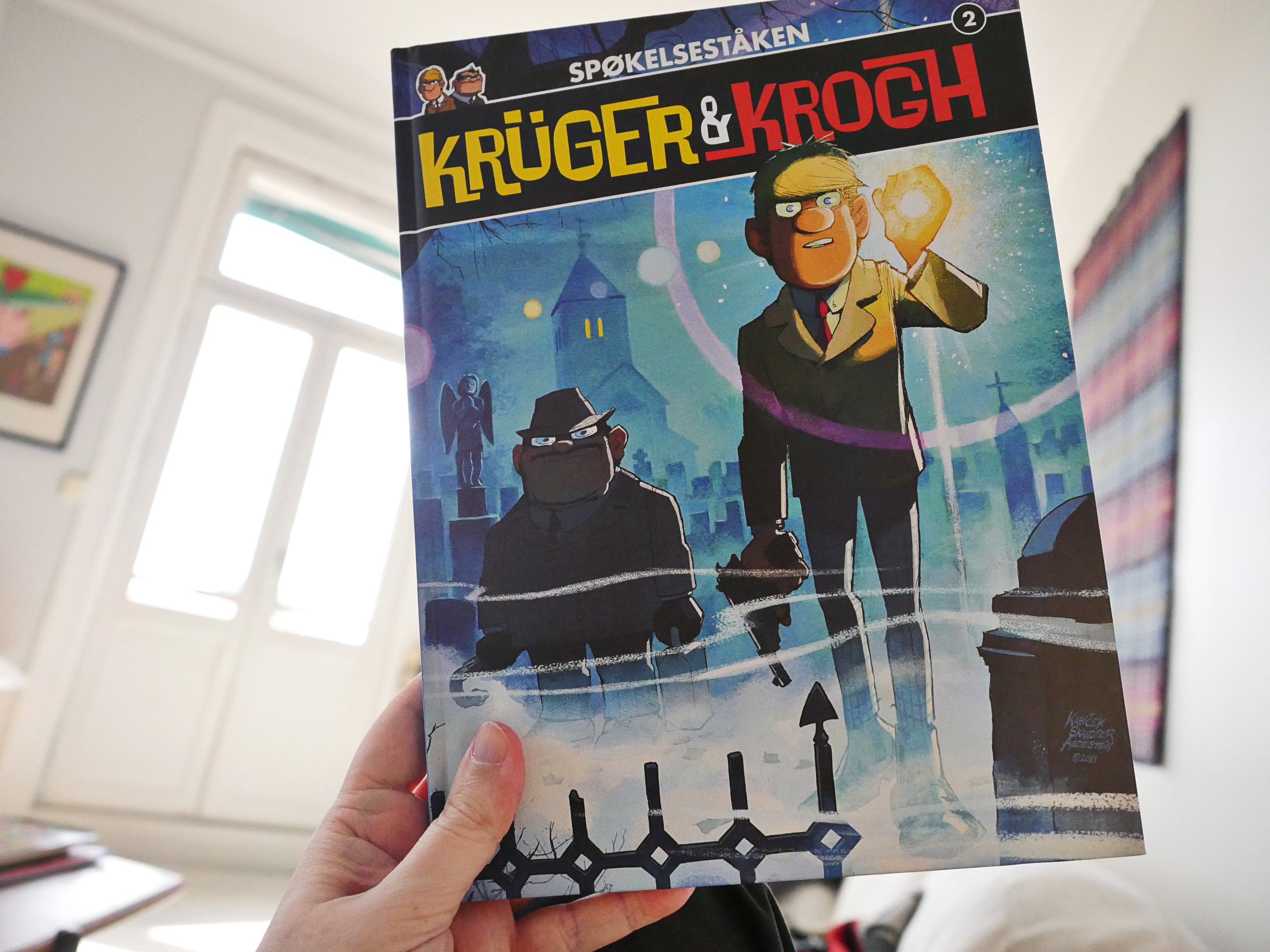
Krüger & Krogh 2 (Egmont) by these people:

This is a Norwegian comic, and the selling point is that it’s a traditional Franco/Belgian adventure comic.

But set in Oslo in the … 60s?… so it’s a double whammy nostalgic venture, I guess?
It’s not very exciting. The plot is pretty muddled for something so simple. Think Yoko Tsuno, but with Men in Black, and you’re there.
The artwork’s particularly uninspiring.
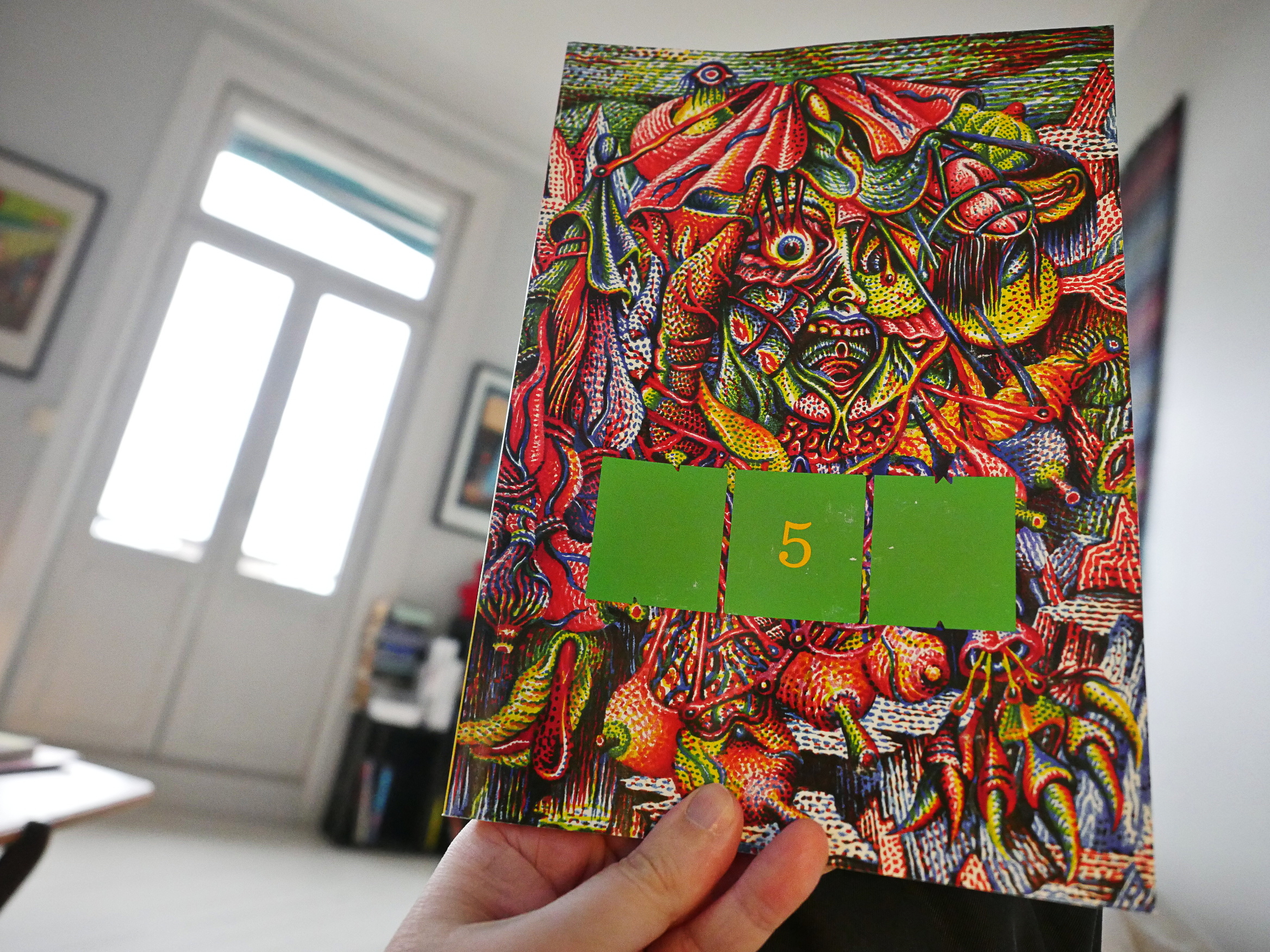
Now 5 edited by Eric Reynolds (Fantagraphics)
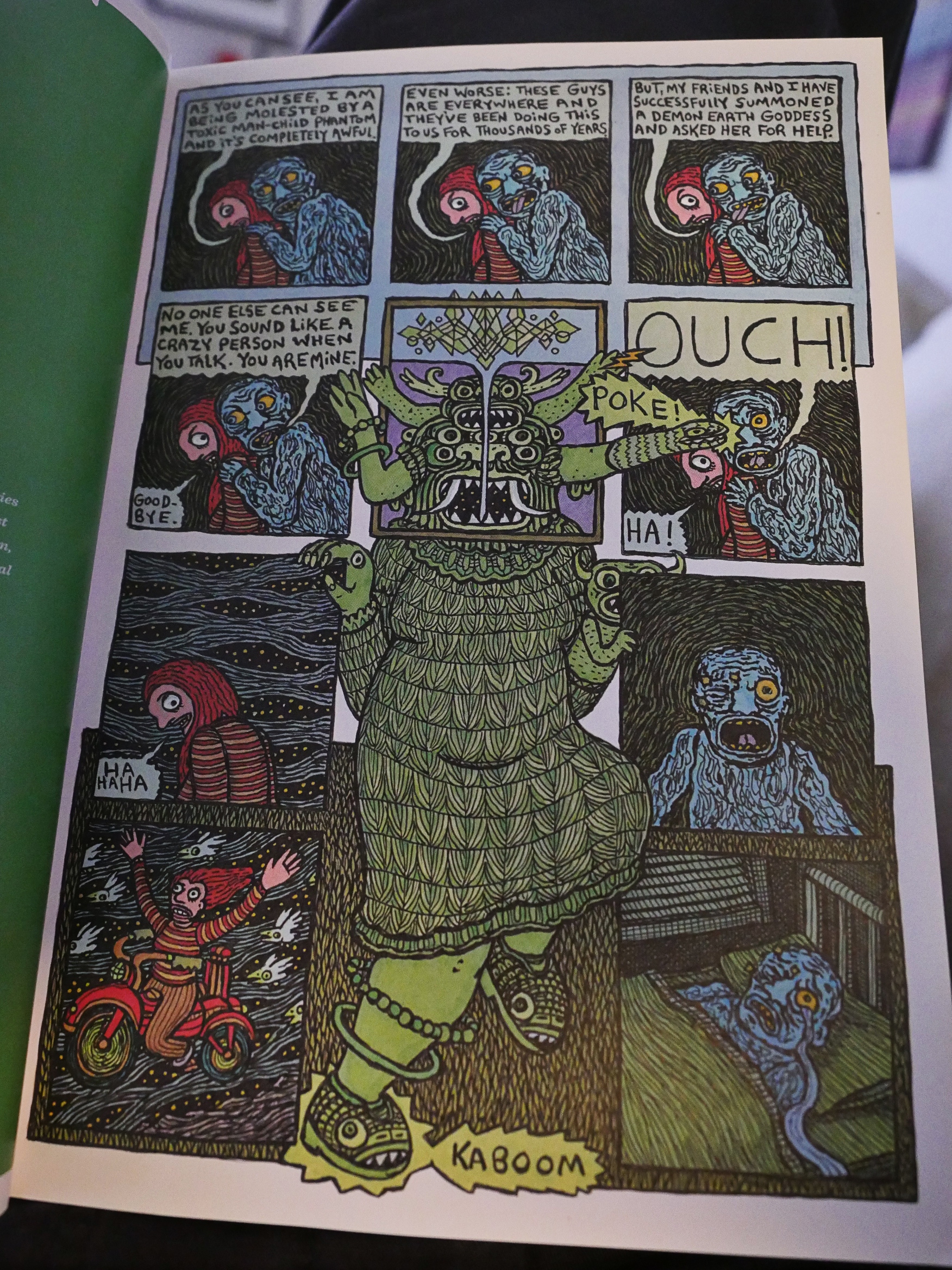
Now goes from strength to strength. This issue is particularly abject, which makes the opening page seem vary apposite.
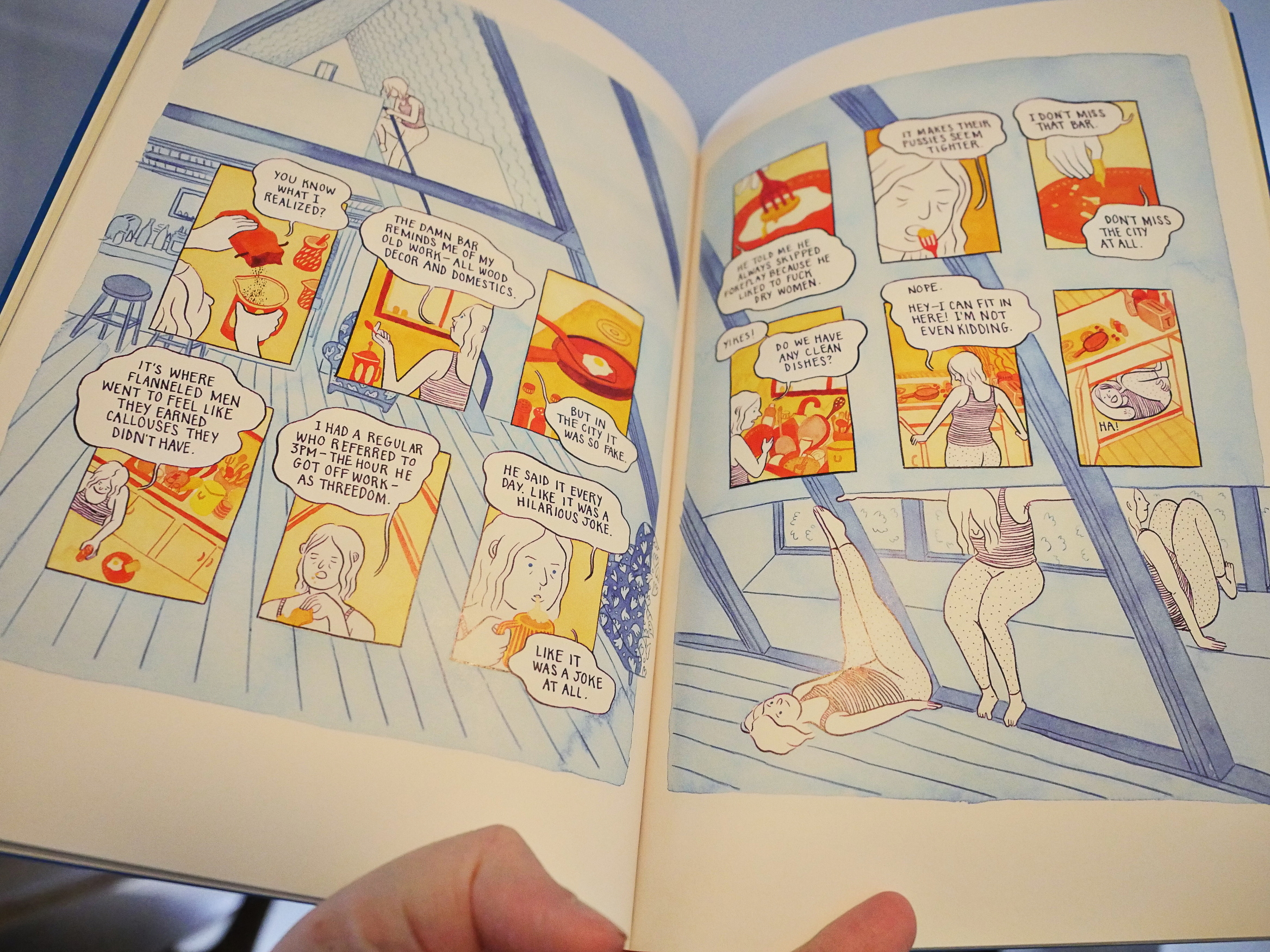
I mean…
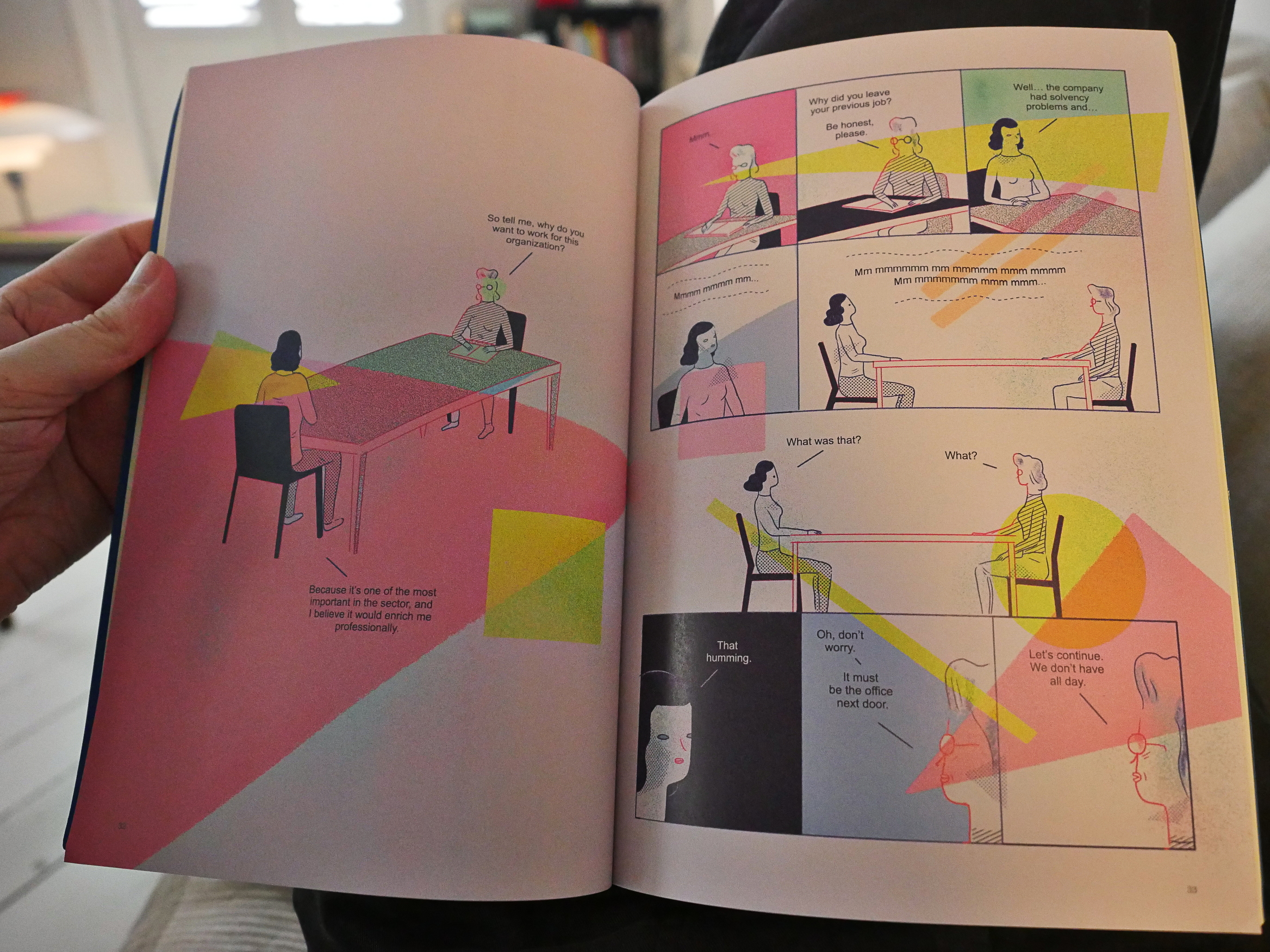
I don’t think there’s a weak piece in here, but it’s a bit emotionally draining on the whole…
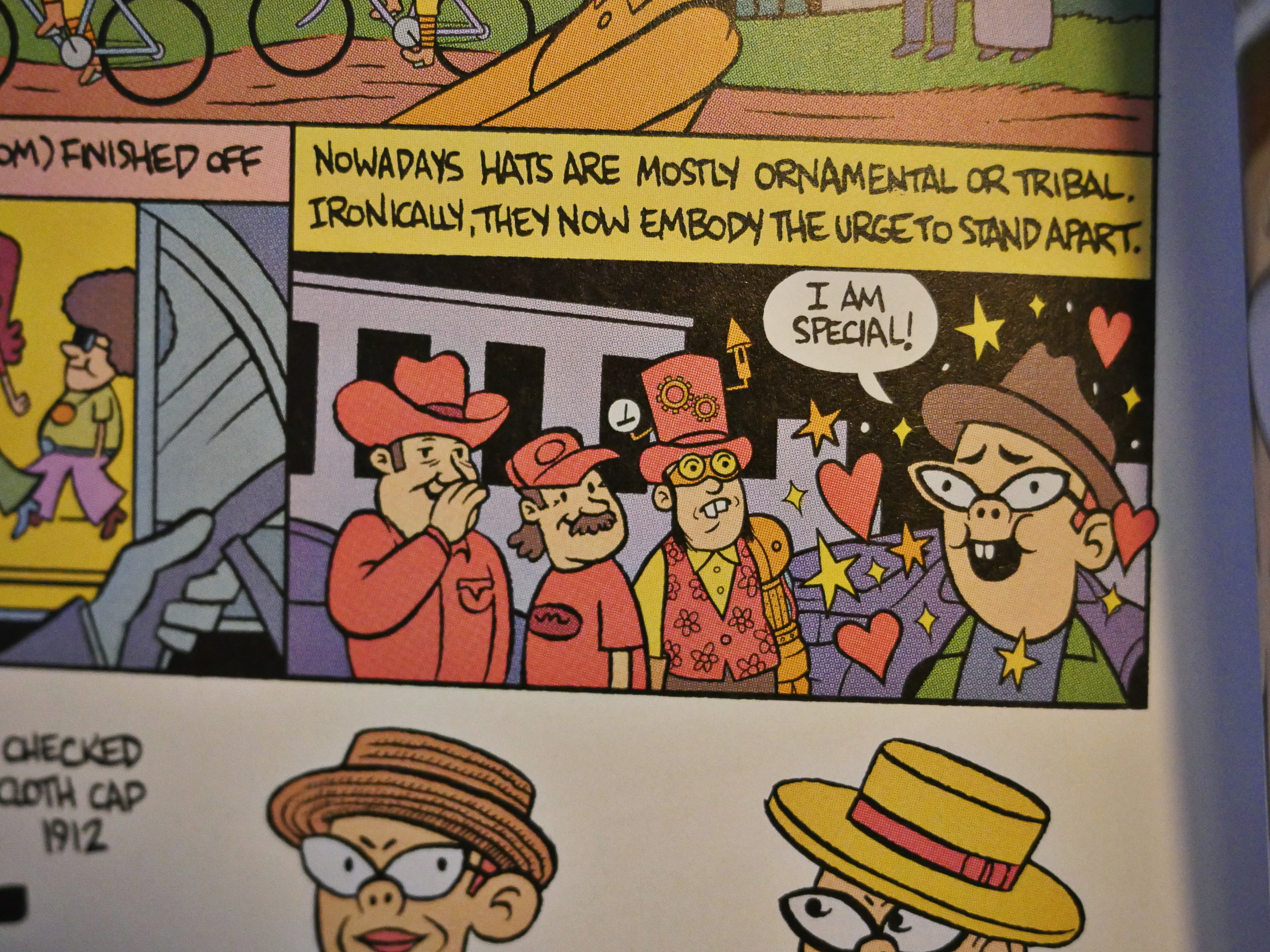
No, they embody the message “I am bald”.

The Prince by Liam Cobb (Retrofit/Big Planet)

Well, this certainly has an interesting look.
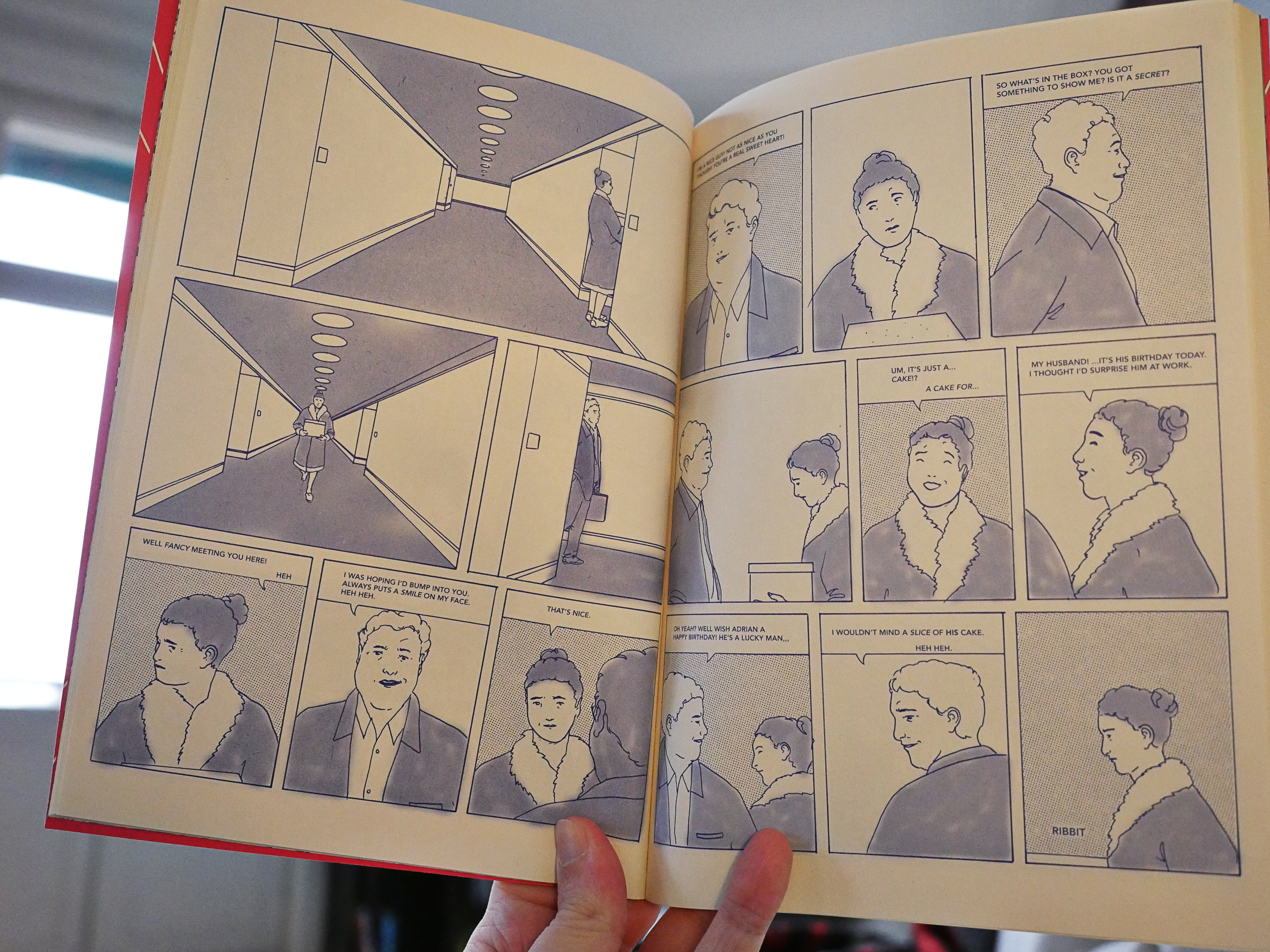
But with the fake riso aesthetic, there’s a fake Japanese horror comic plot to go. Every dialogue feels fake and the attempt at being increasingly unnerving falls flat.
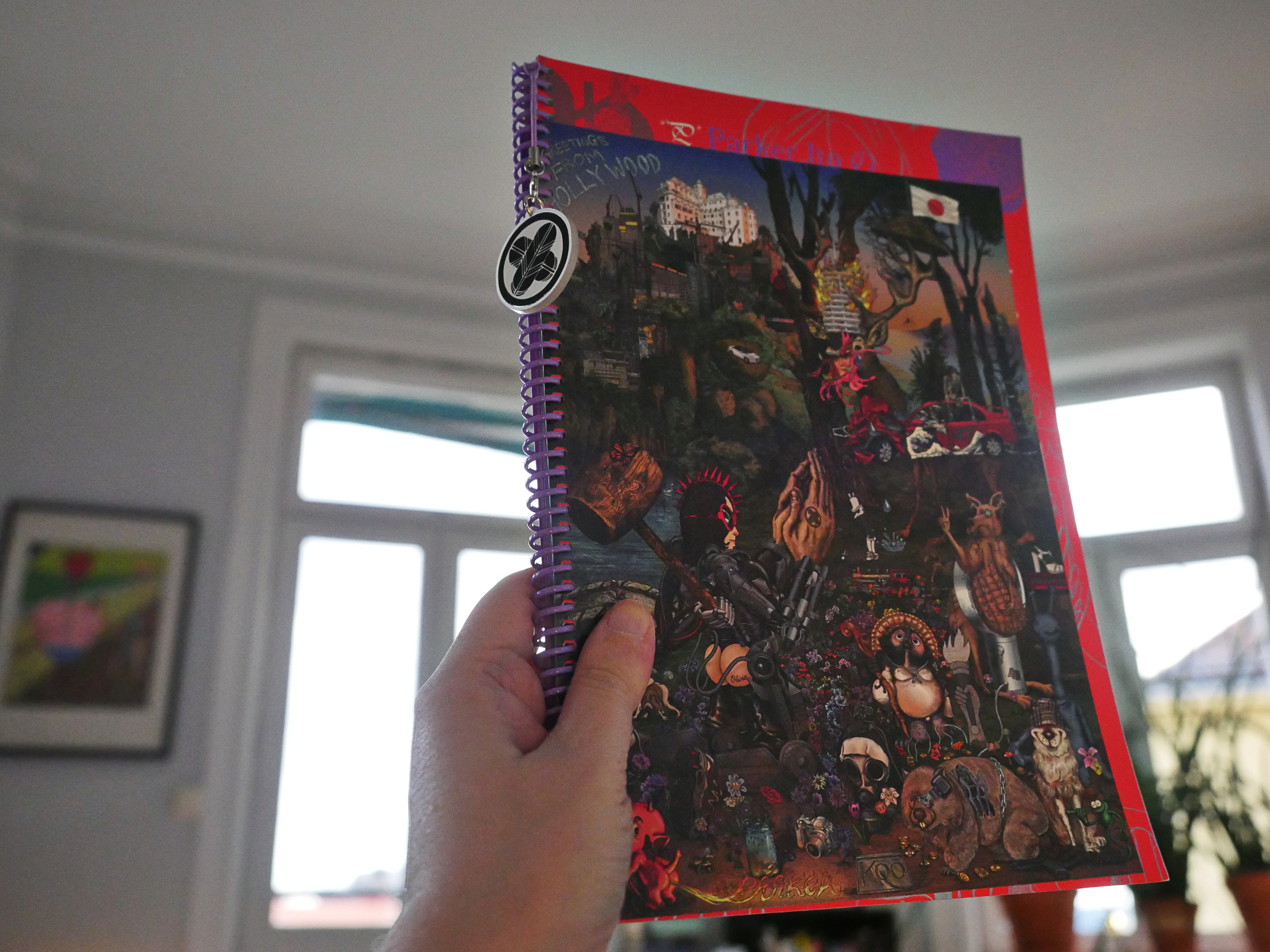
Uhm…. Parker Ito? (Landfill)
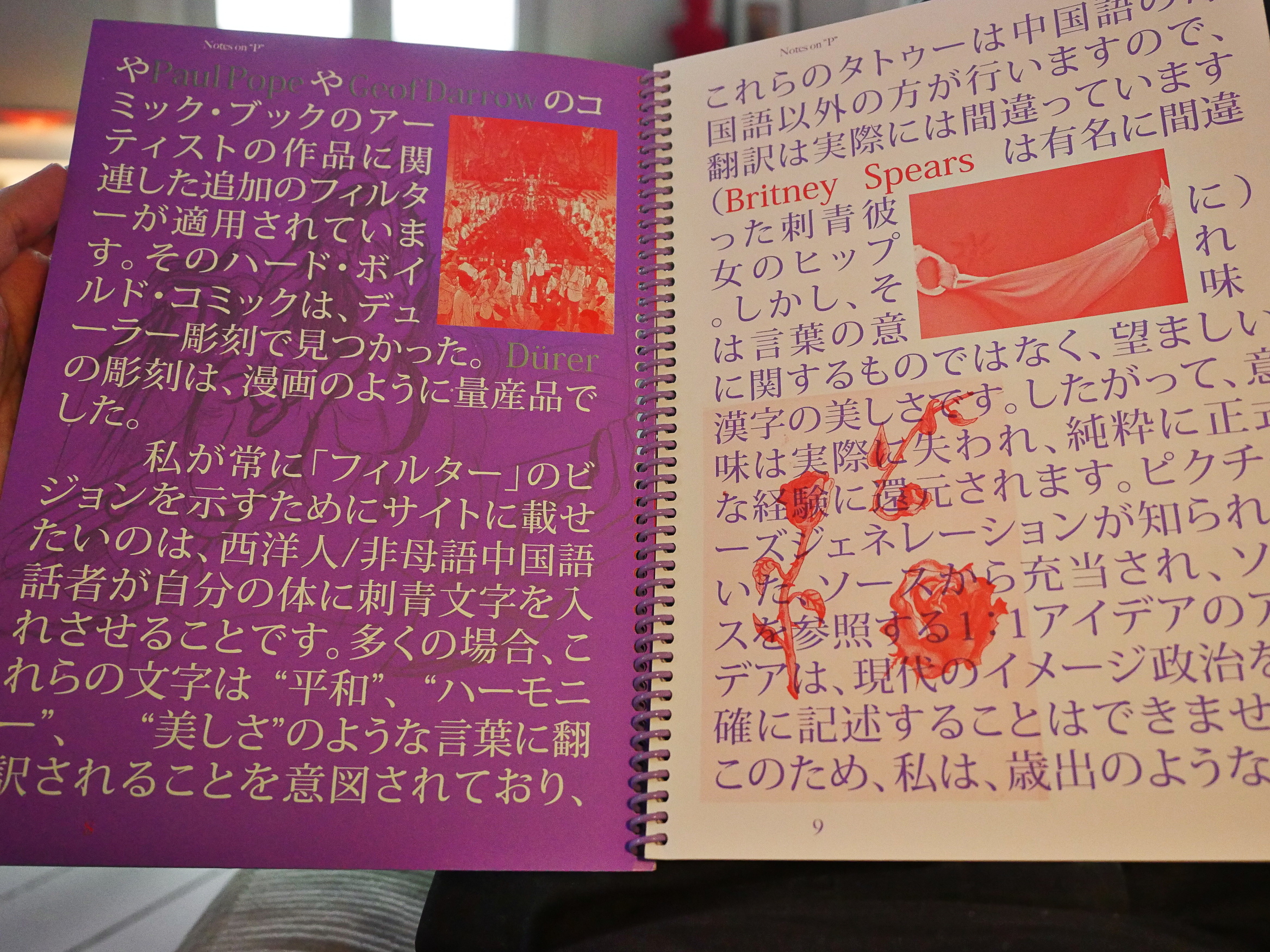
Actually, I don’t know what this spiral-bound thing (with attached plastic medallion is called). Most of the pages are in Japanese and … appears to be an essay about something?
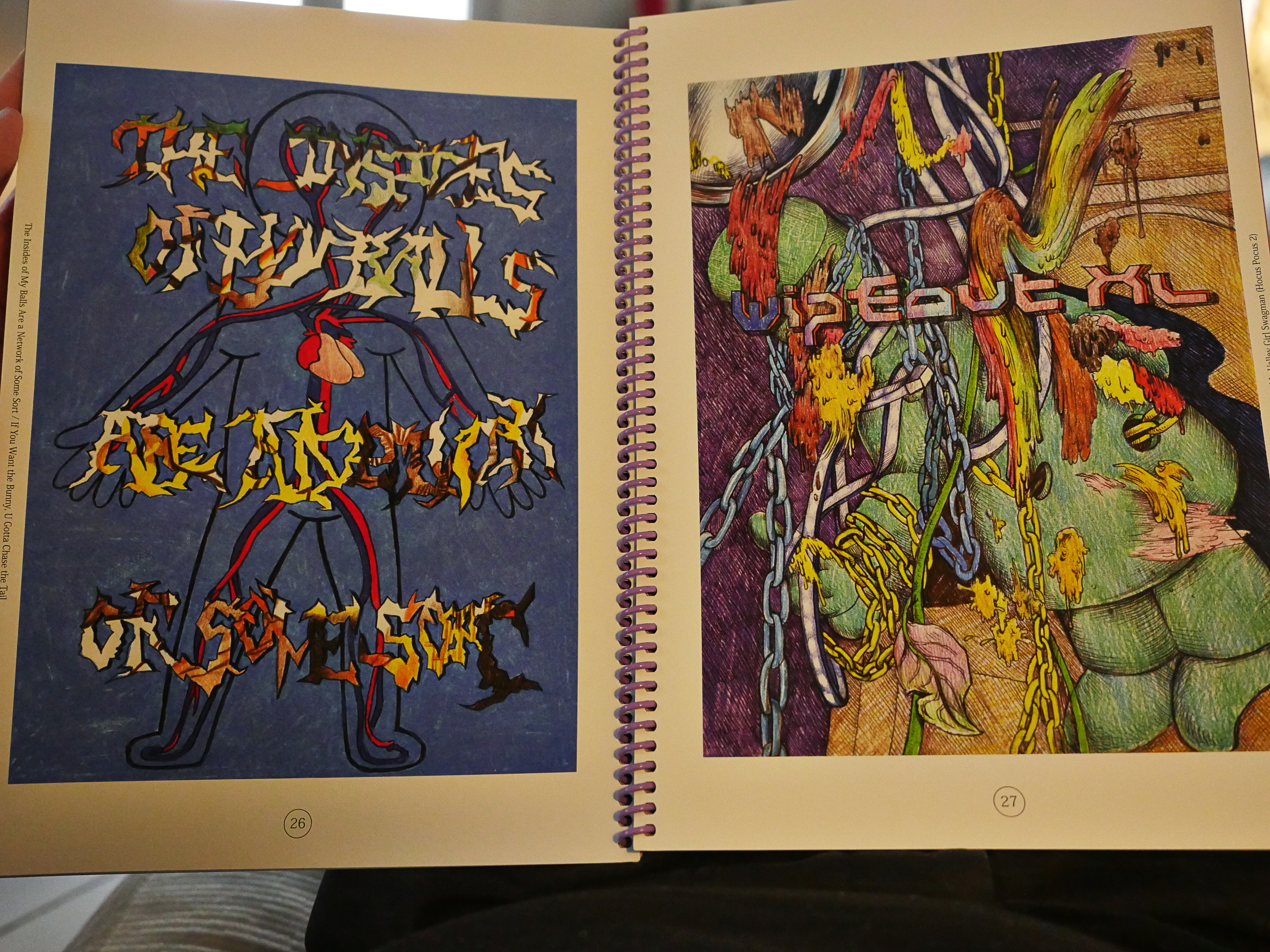
Then there’s a bunch of single page illustrations by various people.

And a text in English. Most confusing.
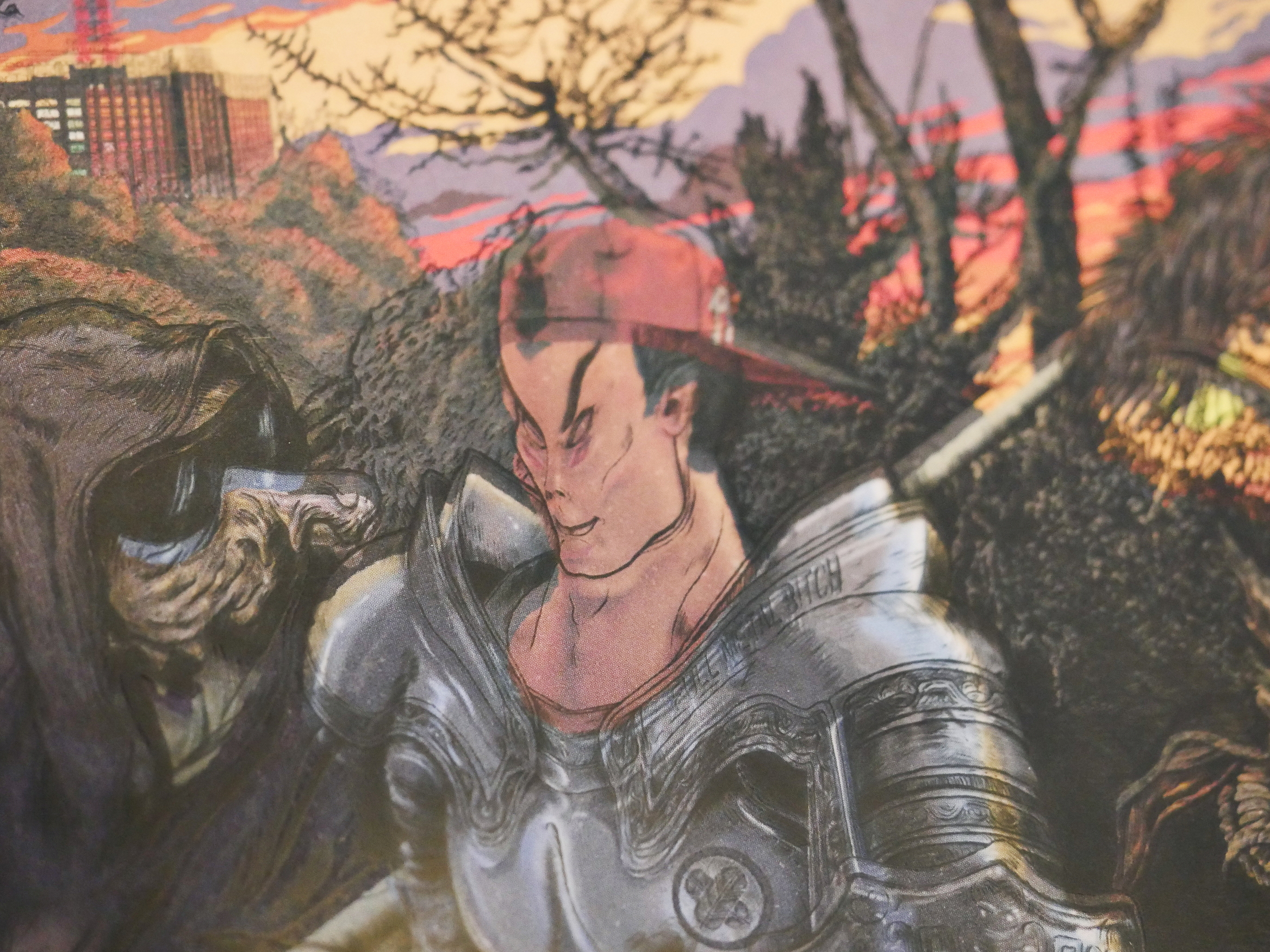
The funnest section in the book is a series of pages with acetate overlays. So you have that with the overlay…
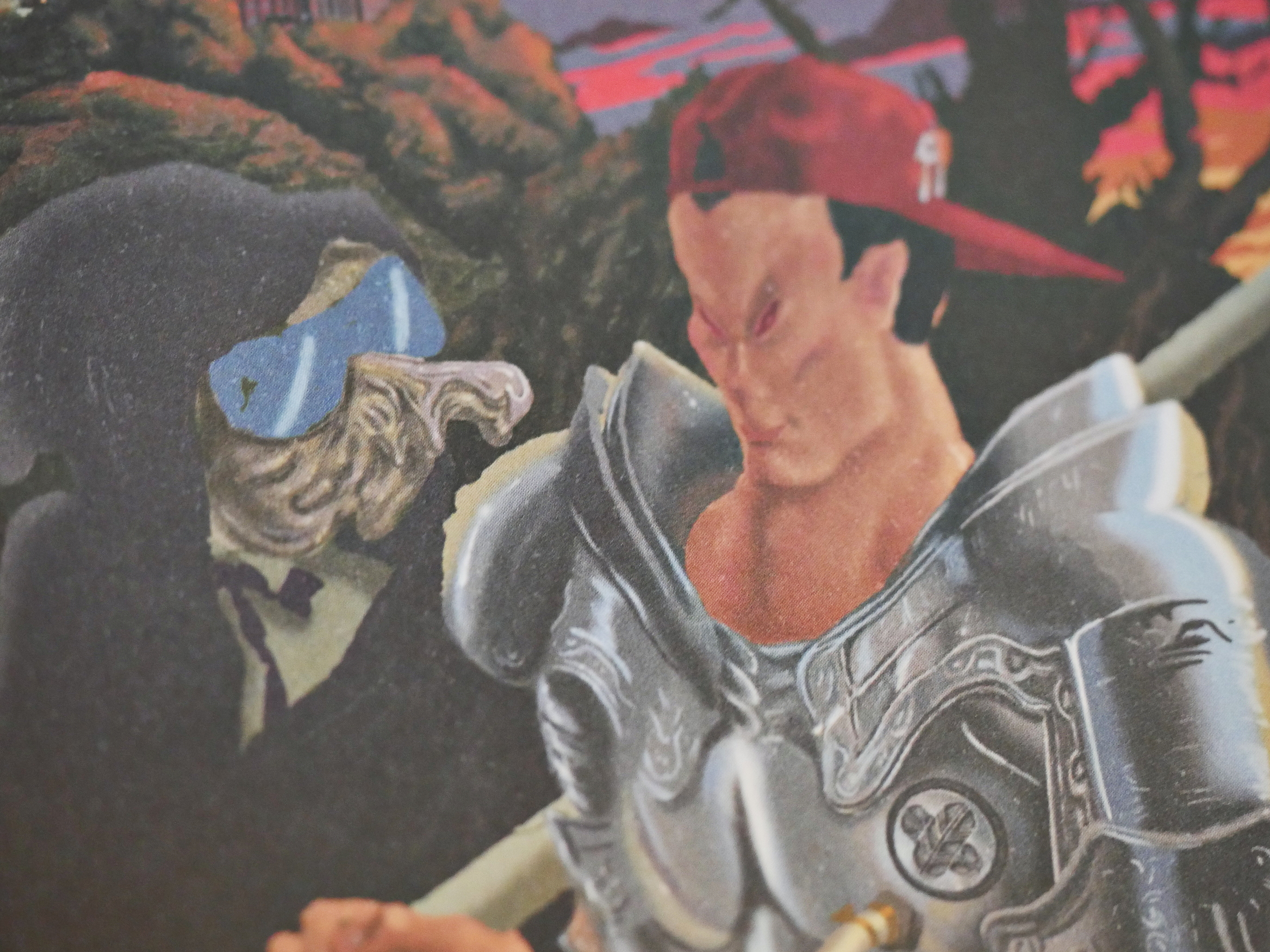
… and this scary thing without the overlay.

Oh! It’s a catalogue from an exhibition. Or something. That makes more sense.
It’s a very cool-looking item.
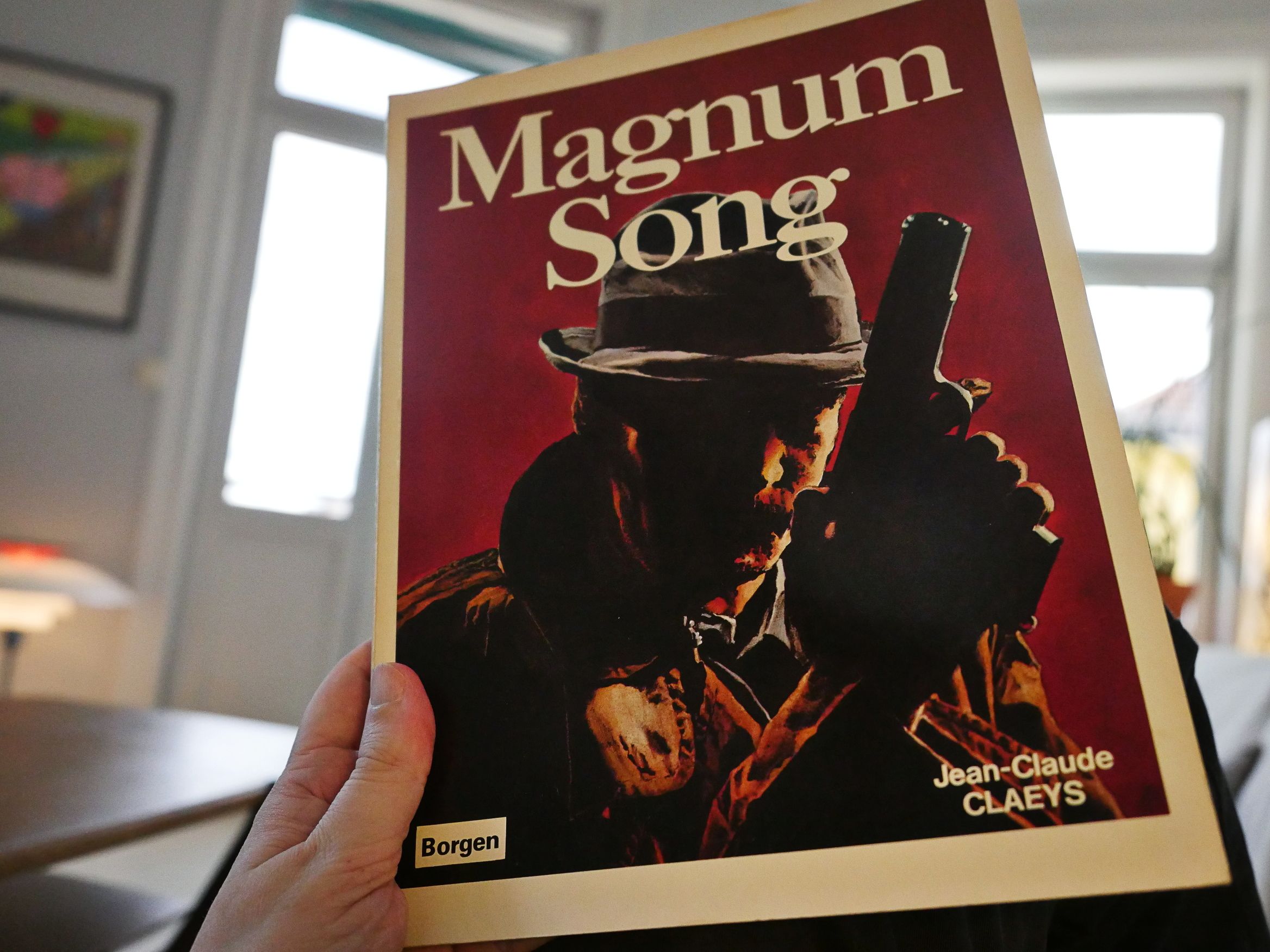
Magnum Song by Jean-Claude Claeys (Borgen)
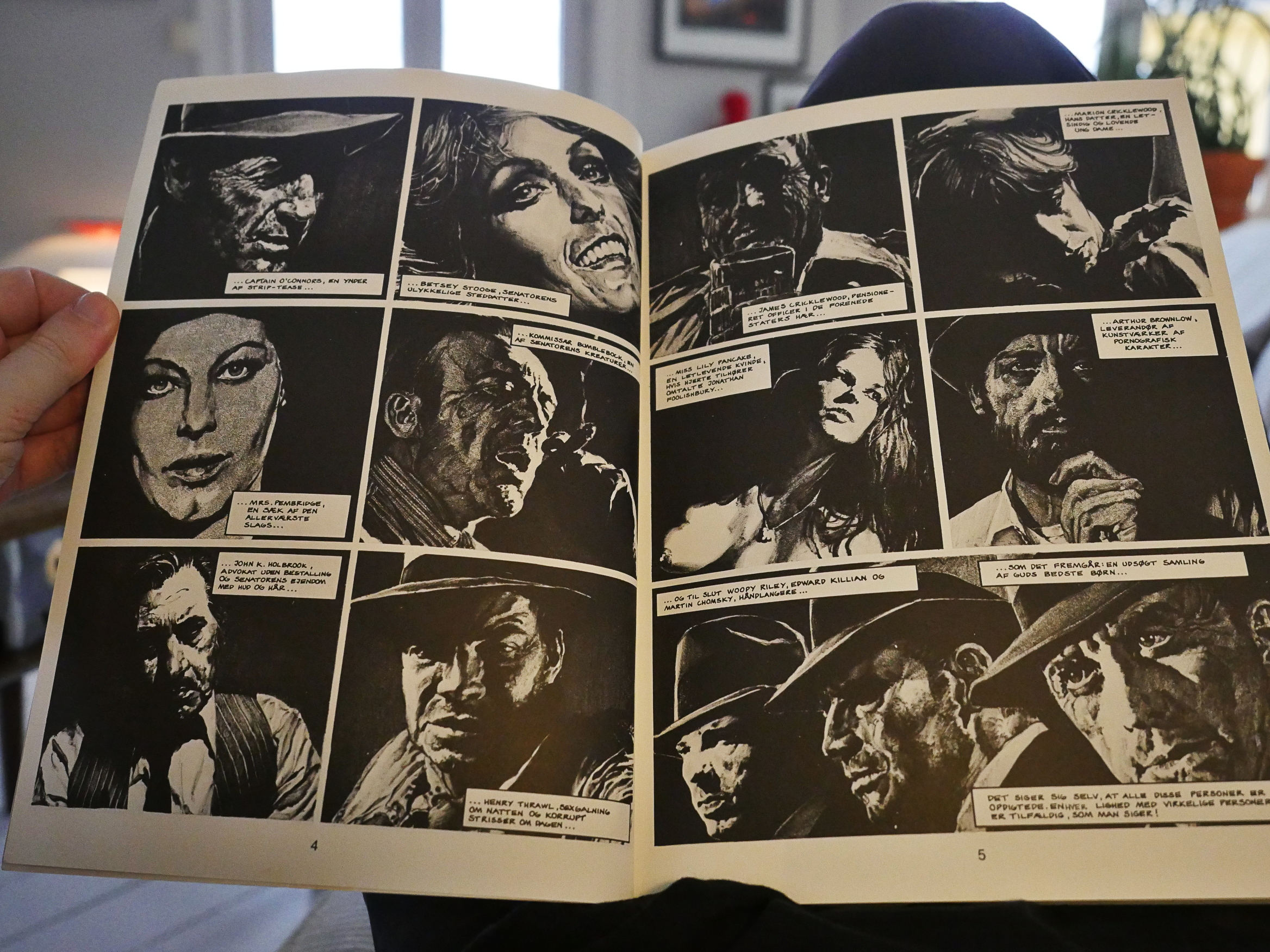
This is a weird genre exercise. It’s basically a bunch of old movie stills that the artist has traced or… xeroxed? Transferred, anyway, to the pages.
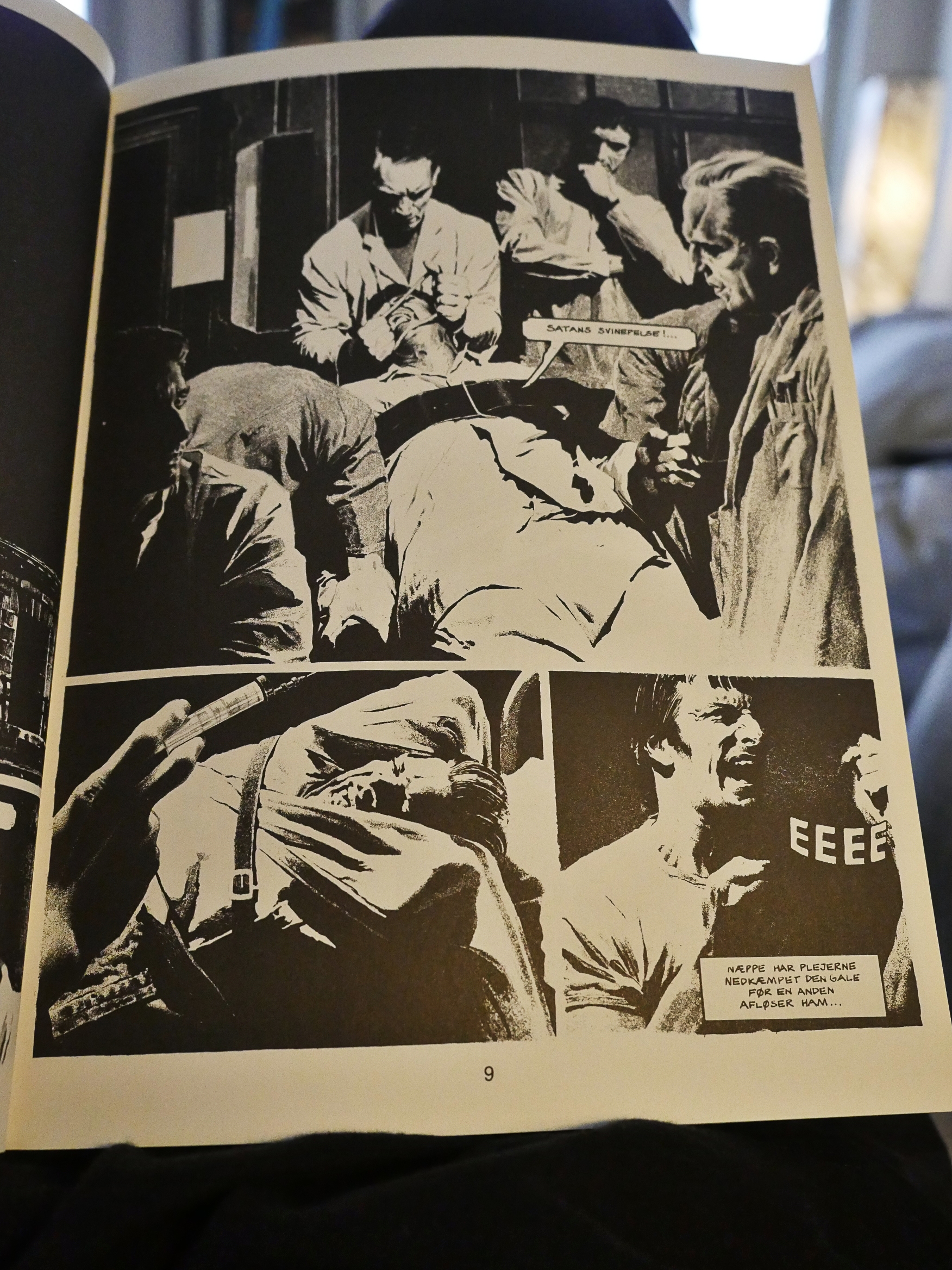
So it’s a Fumetti/comics crossover thing, and it looks stilted as hell.
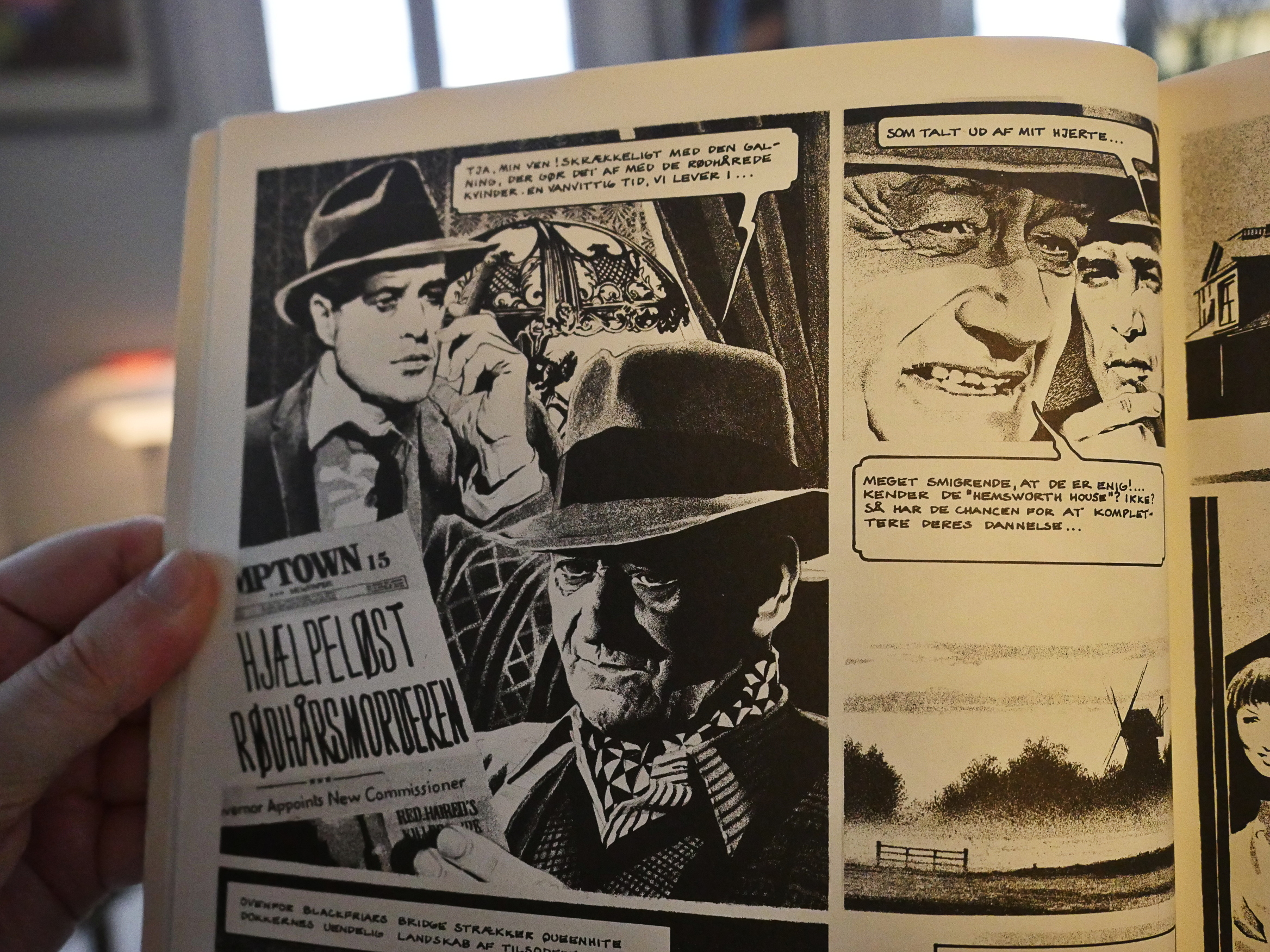
And it’s just lacking in all kinds of storytelling ability. Brando’s to the left of Wayne and then suddenly he’s to the right, probably based on what stills the artist had at his disposal?
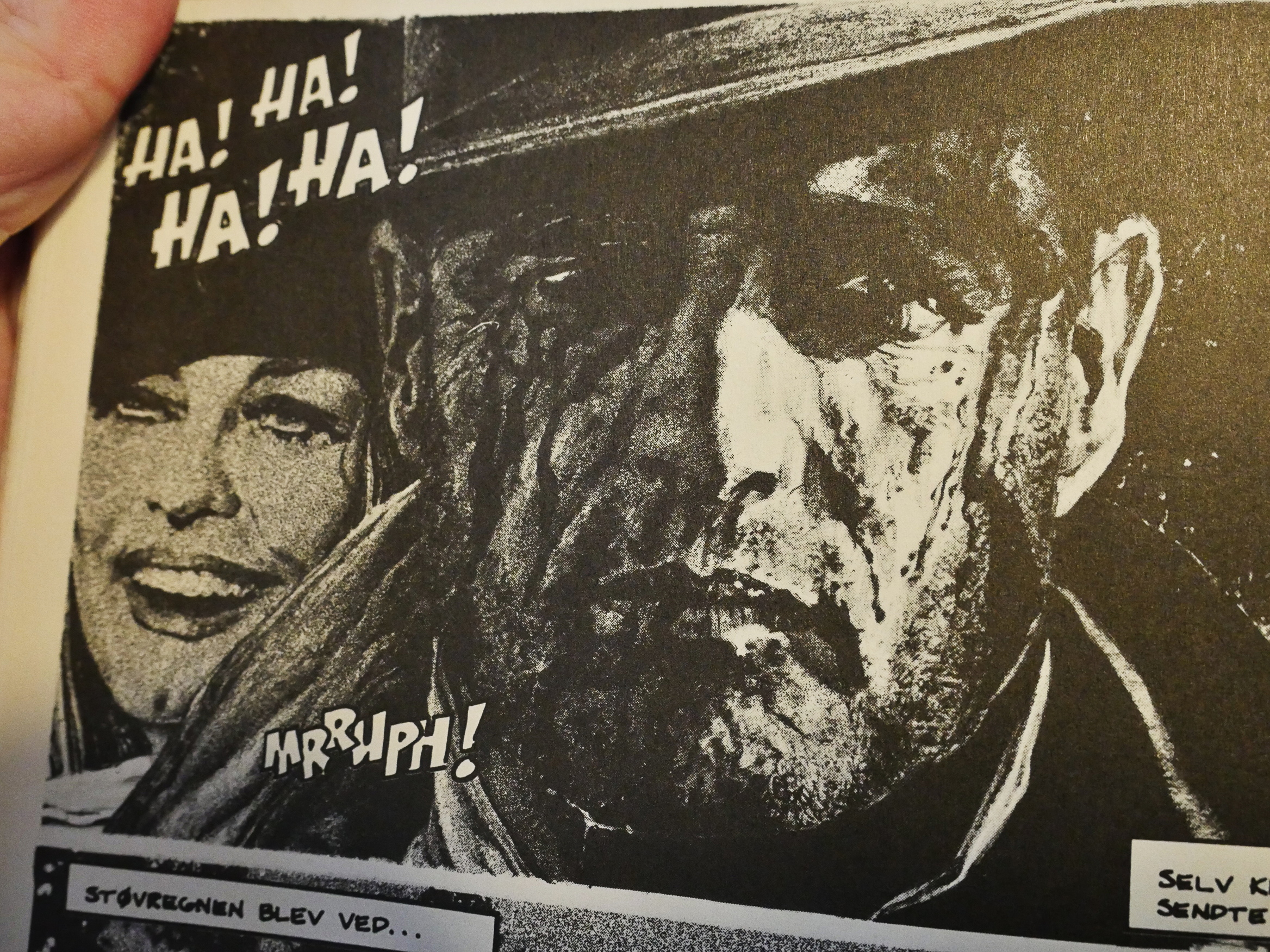
He sometimes actually kinda draws, but it’s strictly limited to making his guys look beat up and bloated.
Oh, the story is some kind of noir non-sense.
FOR 120 PAGES!
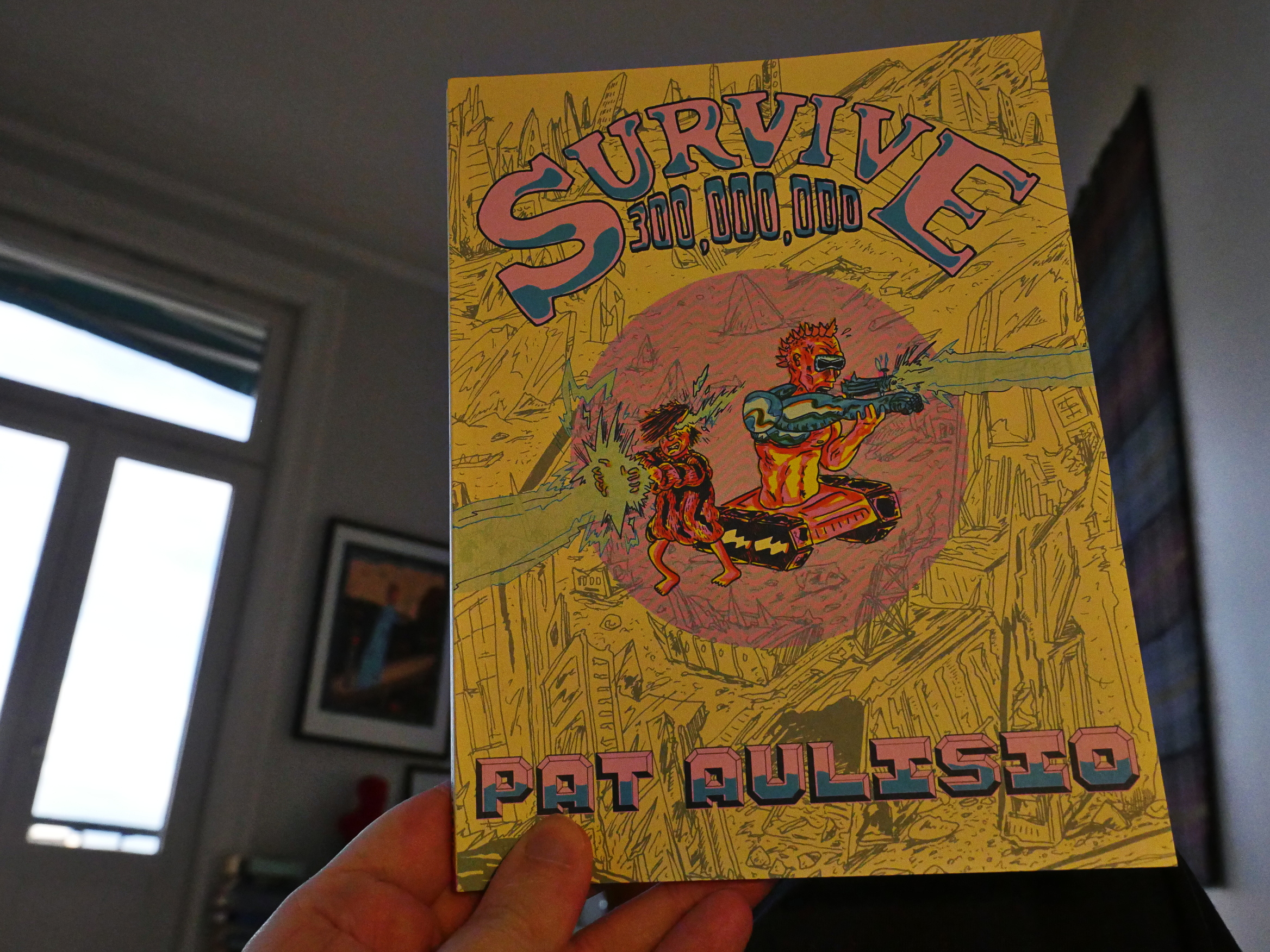
Survive 300,000,000 by Pat Aulisio (Retrofit/Big Planet)
Huh. Sure is a lot of Retrofit books today… I have no recollection of buying these… perhaps I did some kickstarters or something?
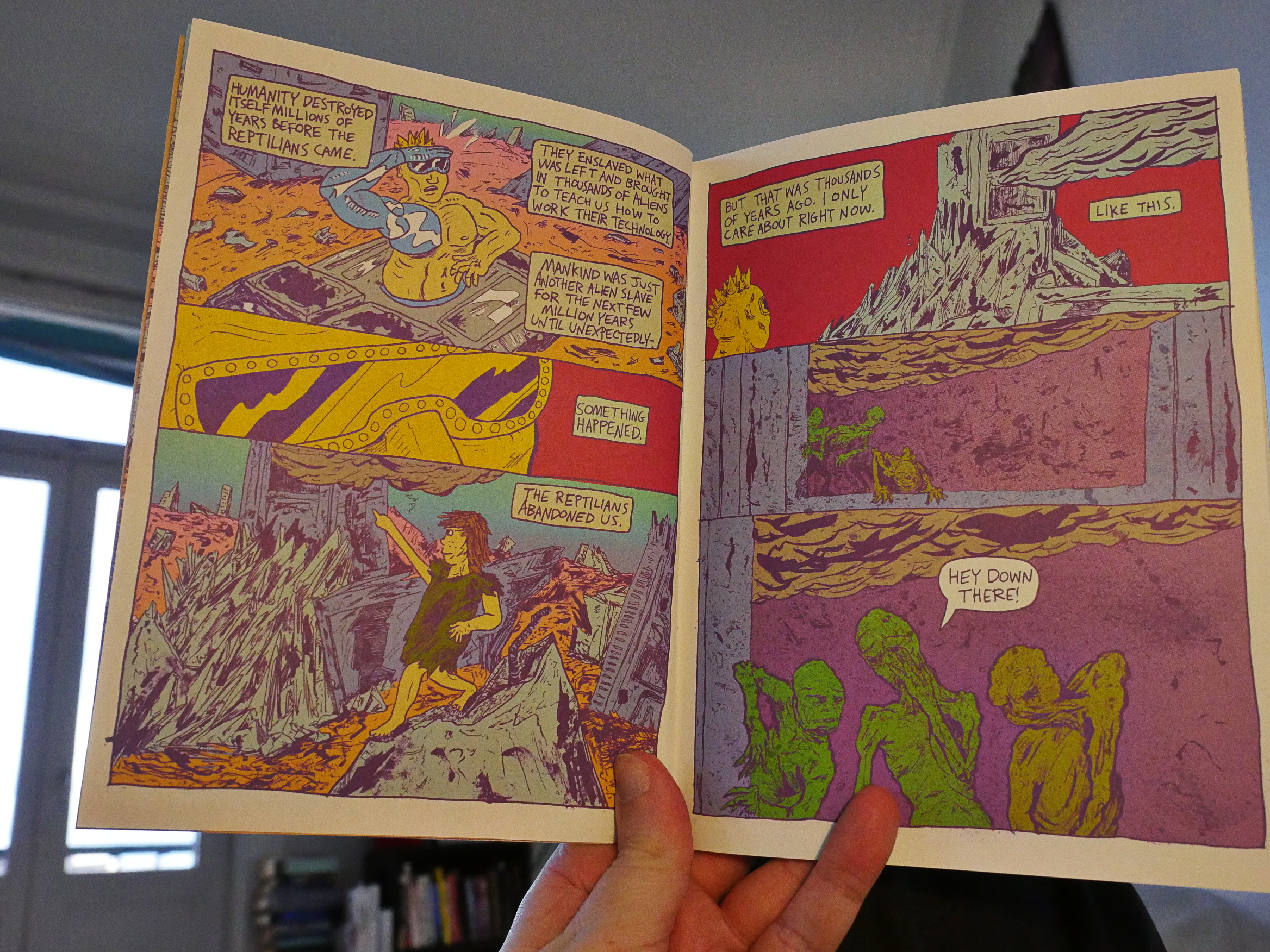
I was all “oh noes, not another post-apocalyptic waste land thing”…
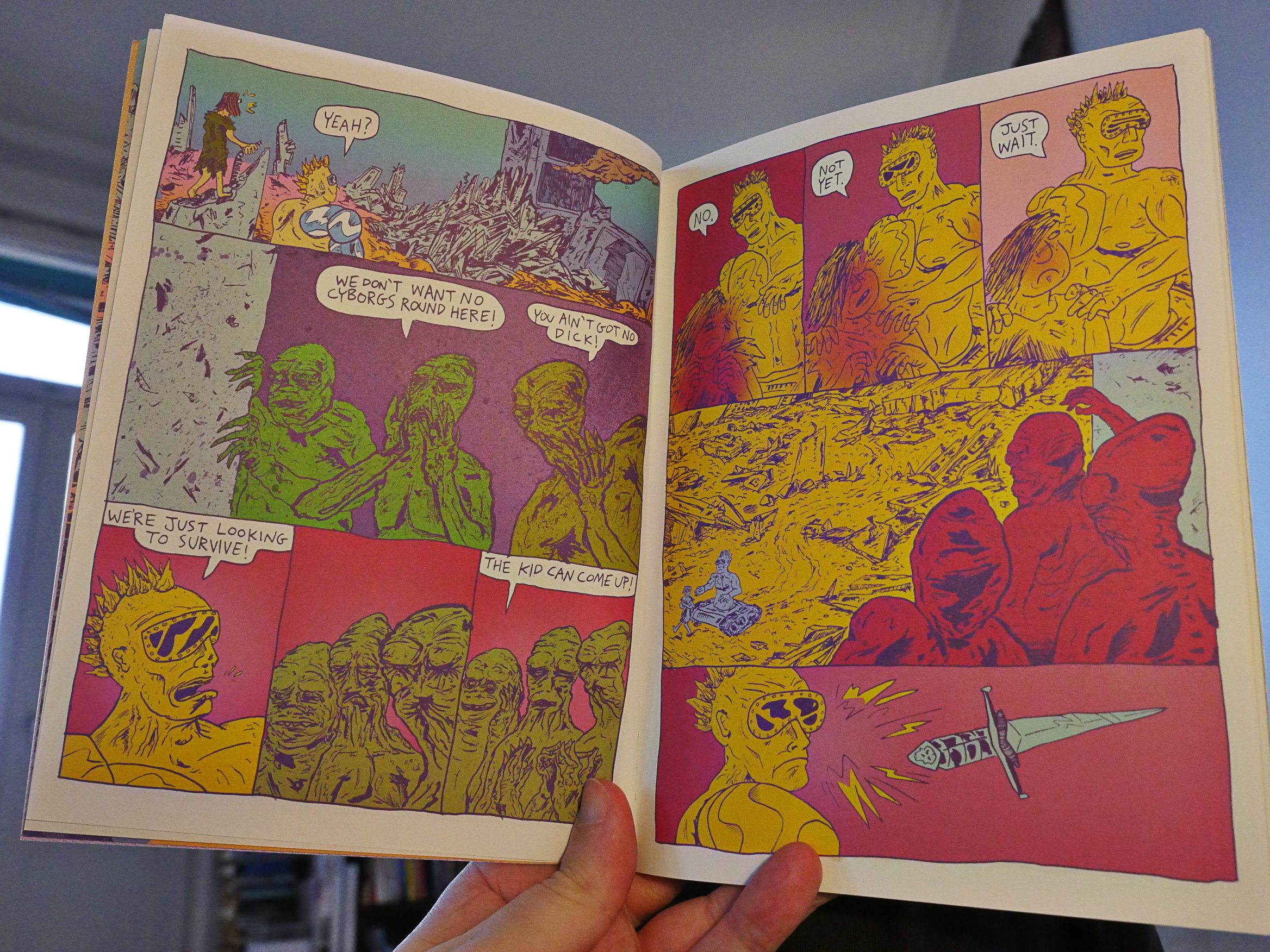
… but this is very lively. I like the ratty drawing and crazy digital colours. It’s not like anything very exceptional happens in this story, but it moves fast, is kinda funny and has a good vibe.
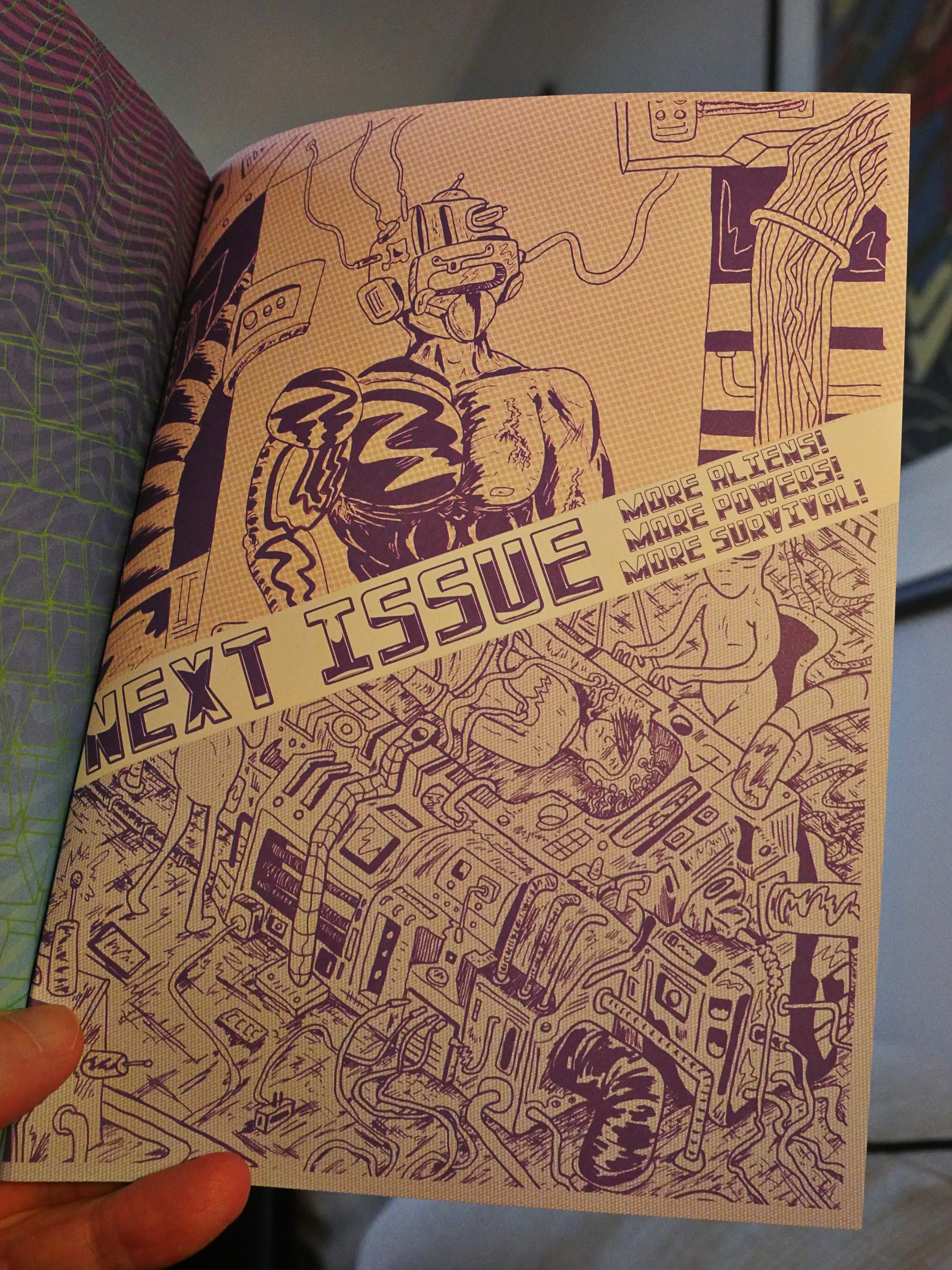
I was thinking towards the end “but surely there should be more of this”, and there will be! I’m there.
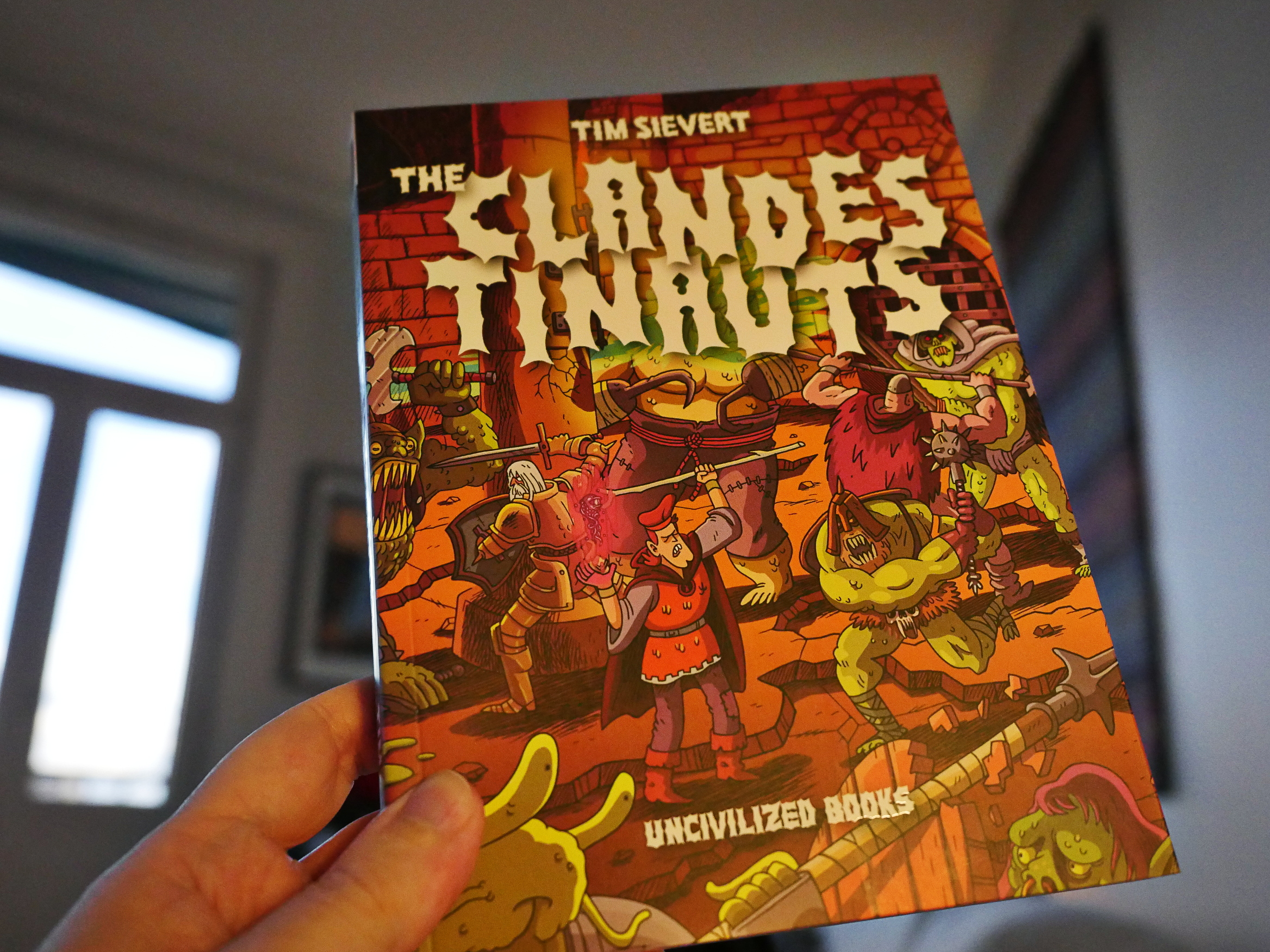
The Clandestinauts by Tim Sievert (Uncivilized)
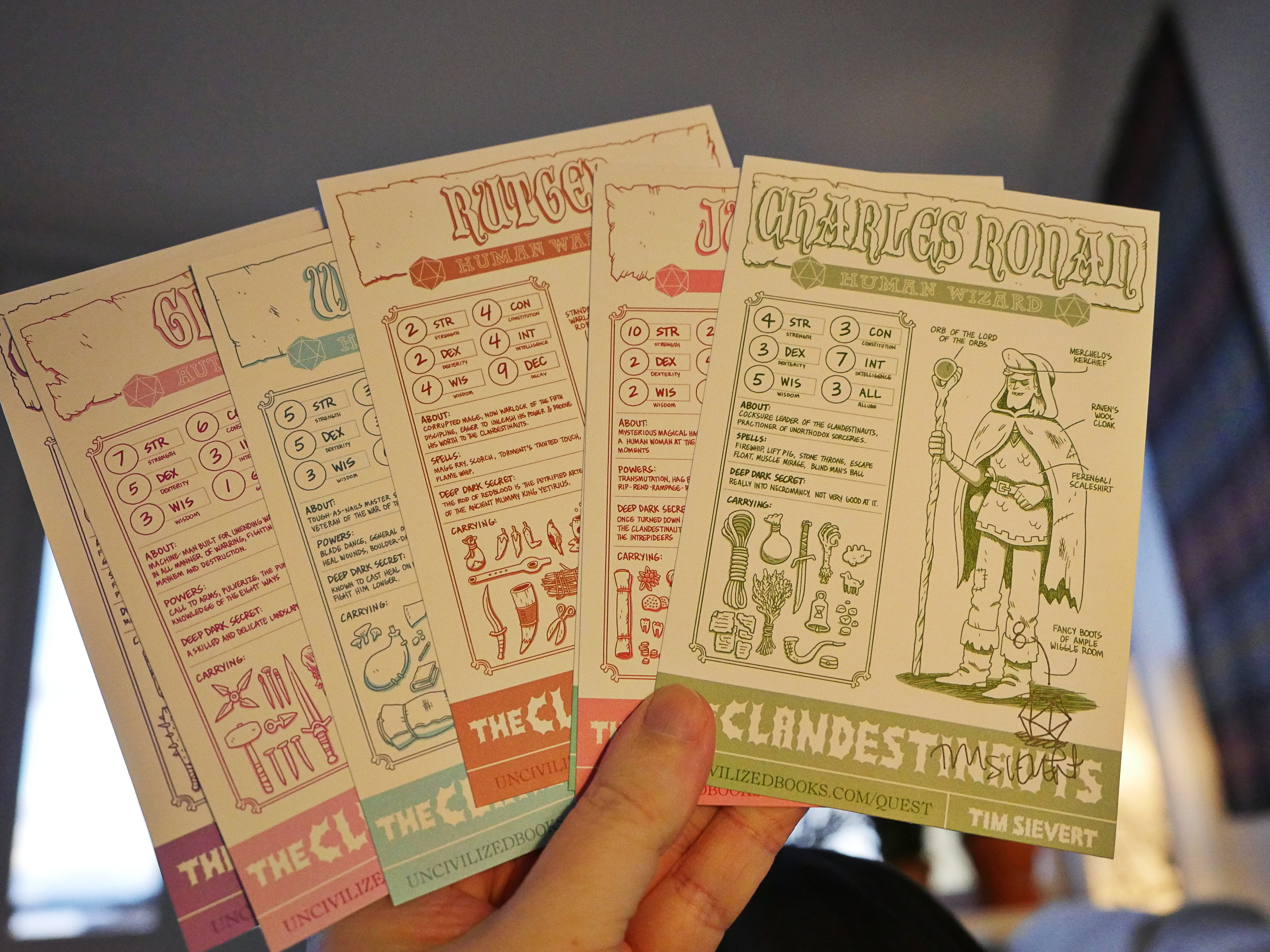
Oops. PLEASE LET THIS NOT BE A ROLE PLAYING GAME INSPIRED COMIC!

AAAAAURGH! It is.
If there’s one thing I hate almost as much as video game inspired comics, it’s role playing game inspired comics.
But, c’mon, this is Uncivilized… Surely it’s not just … that… Uncivilized used to be cool; I bought absolutely everything they published for years, although I lost a bit track of them last year (as I did with everything else, really). Did they stop being cool?

It’s just page after page after page of this.
OK, then.
I bailed on page 20. Perhaps the remaining 200 pages are great; I’ll never know.
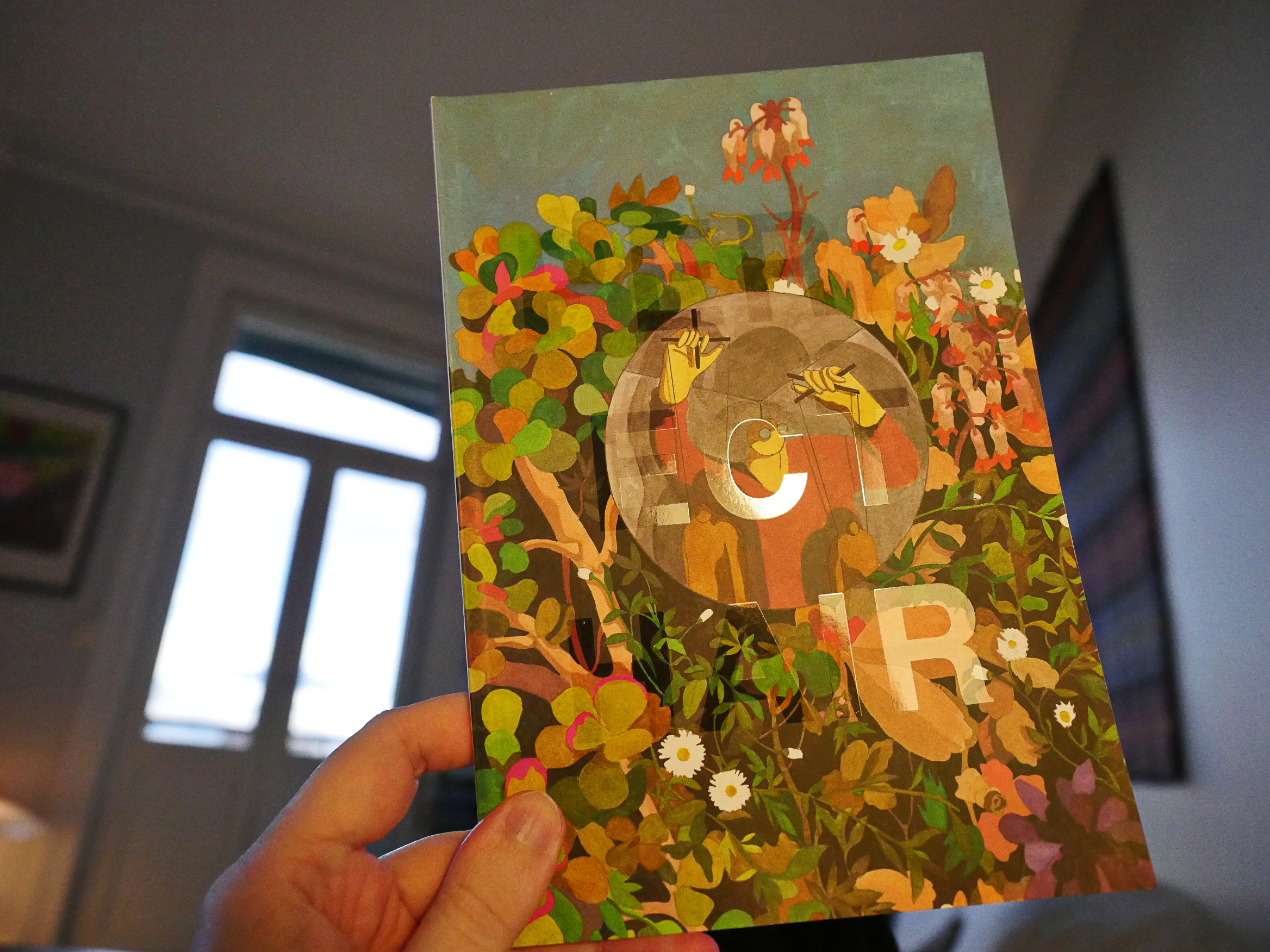
Perfect Hair by Tommi Parrish (2d cloud)
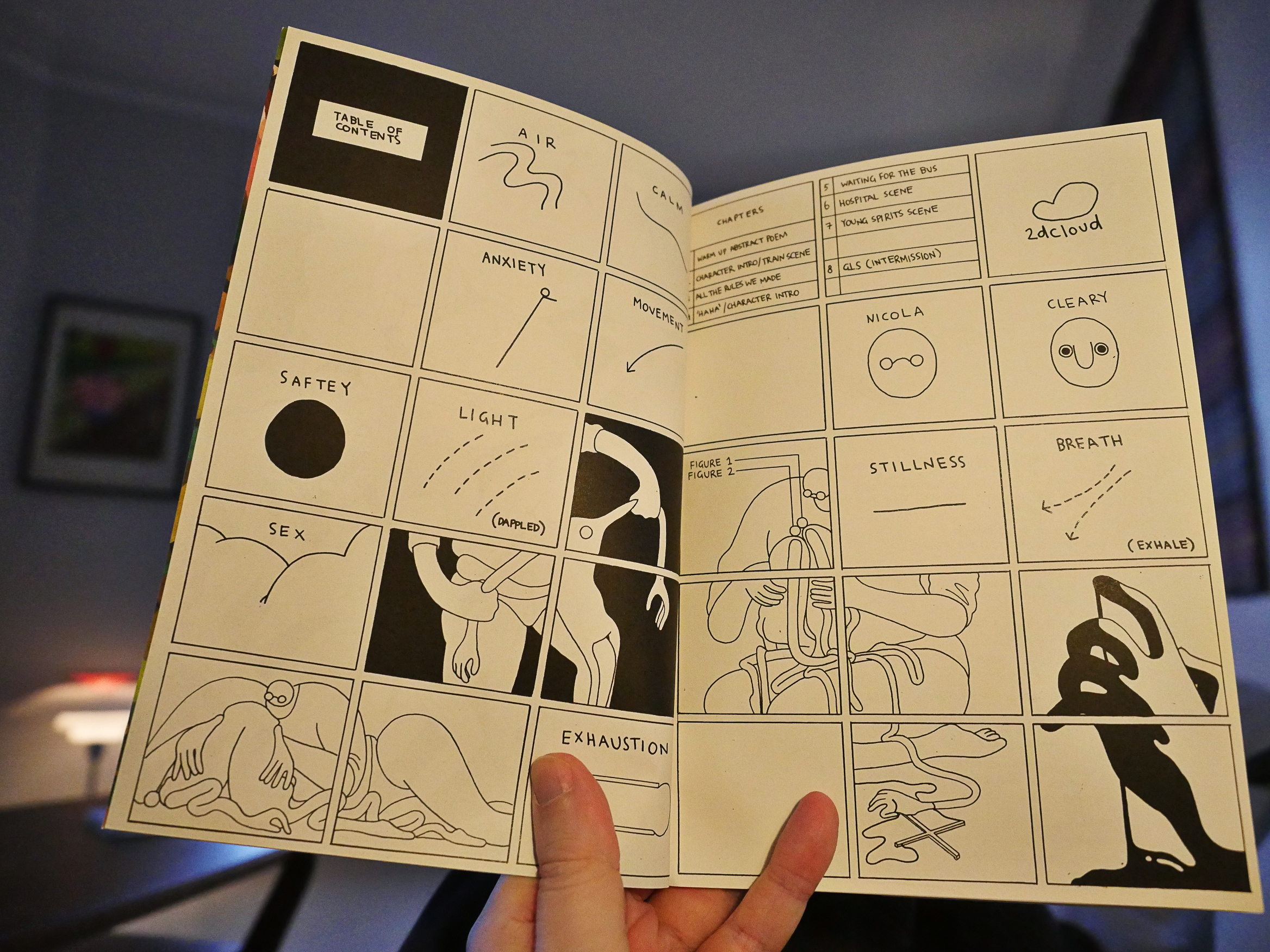
Hey, that’s a nice table of contents…
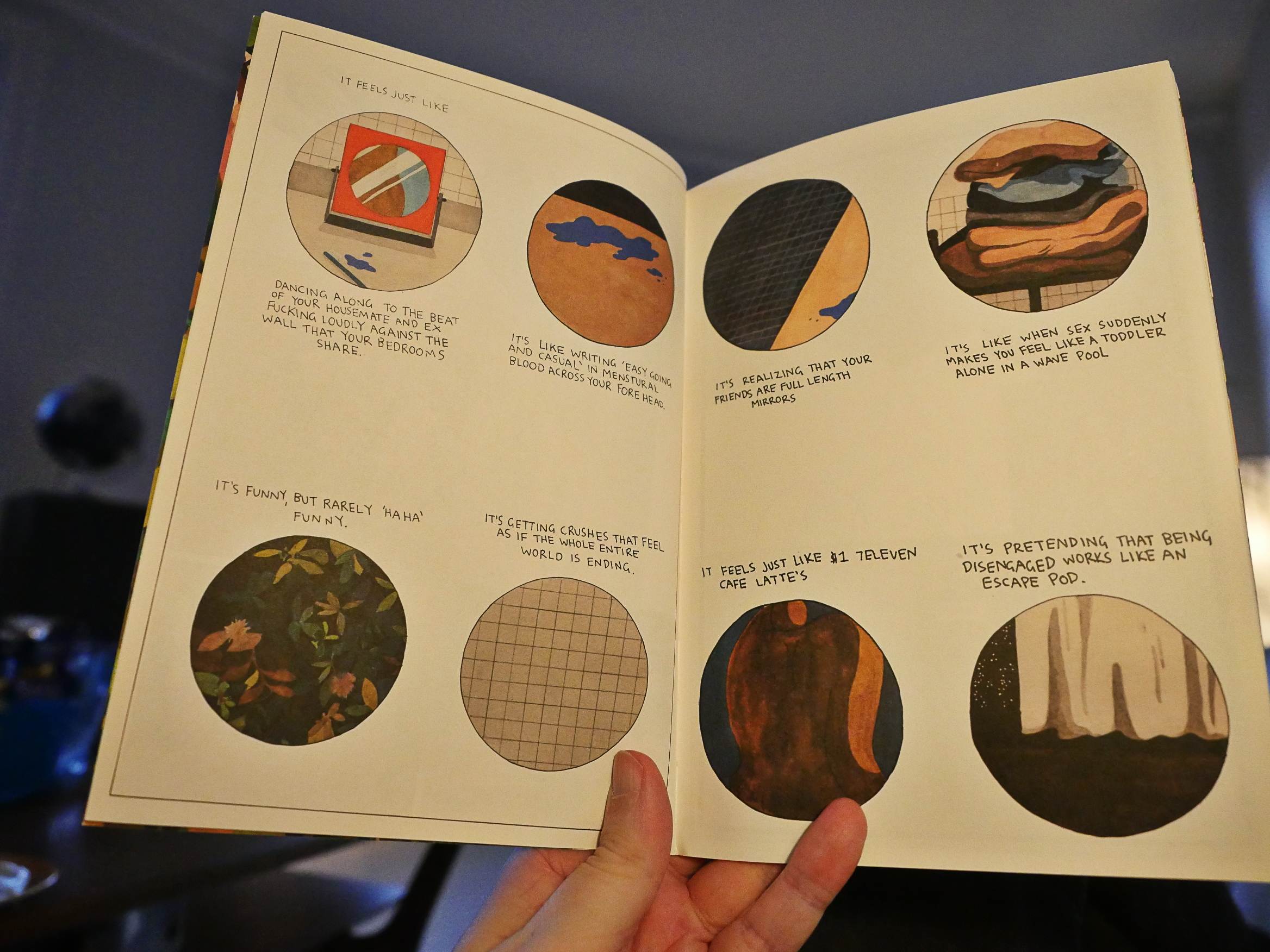
That’s just what it feels like!
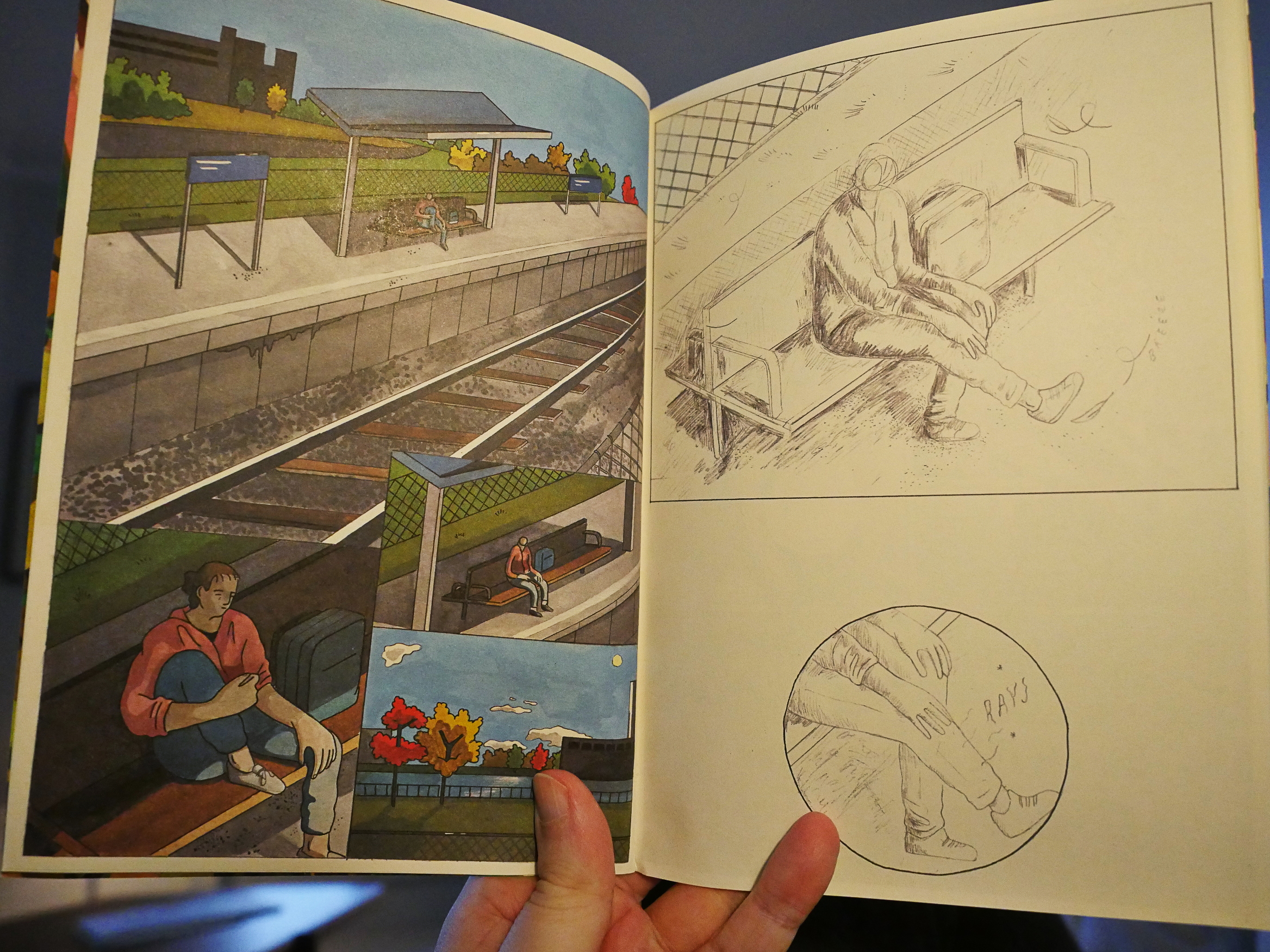
But joking aside, this is a powerful little book. I absolutely adore Parrish’s sense of colour and space. And it’s not all sex and abject behaviour.
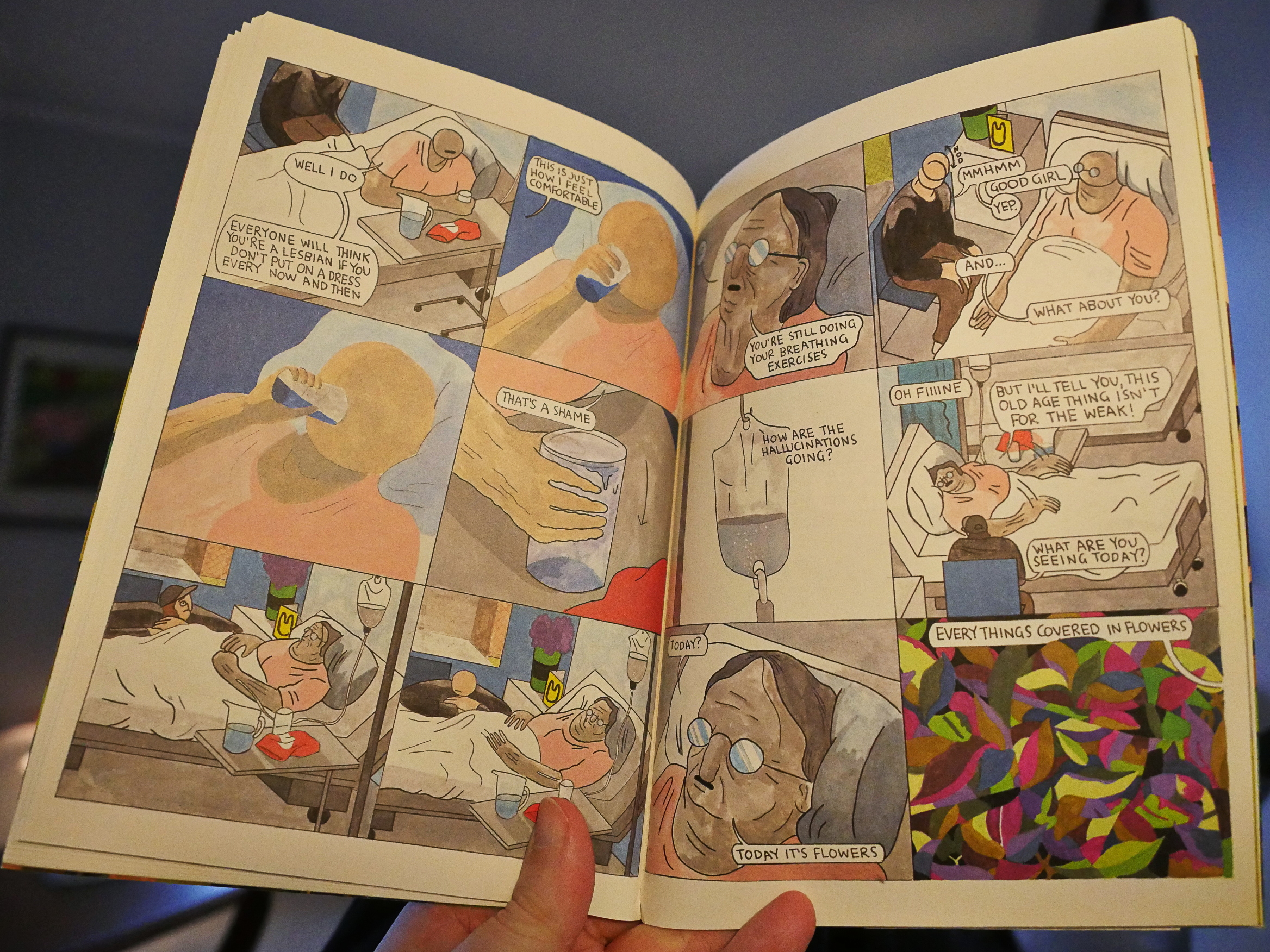
There’s also sweet things.
Sort of.

Sprawling Heart by Sab Meynert (2d cloud)
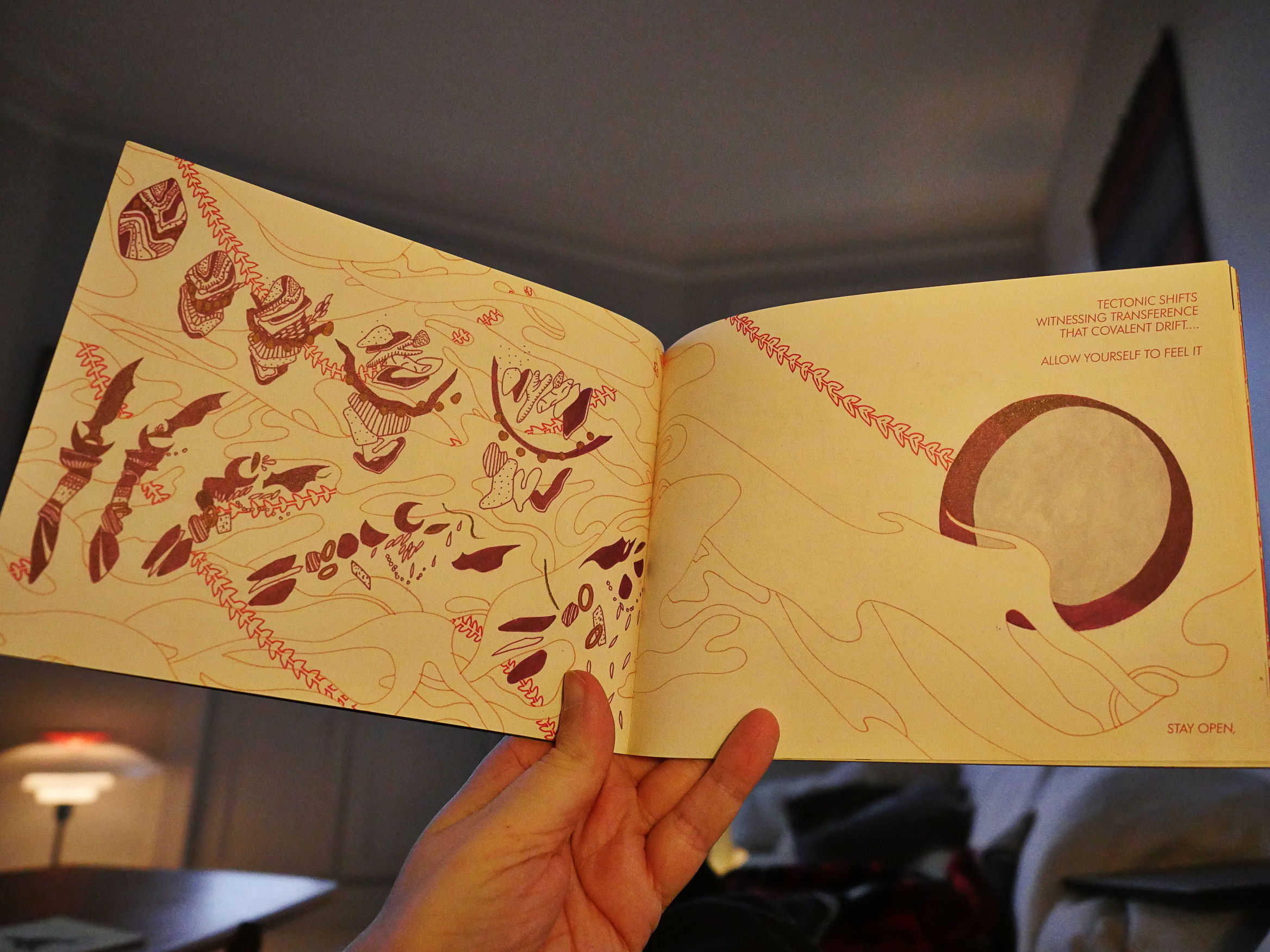
This is a very pretty booklet, but I didn’t really connect much with it. The texts seem to have a self-help vibe, which isn’t my thing.
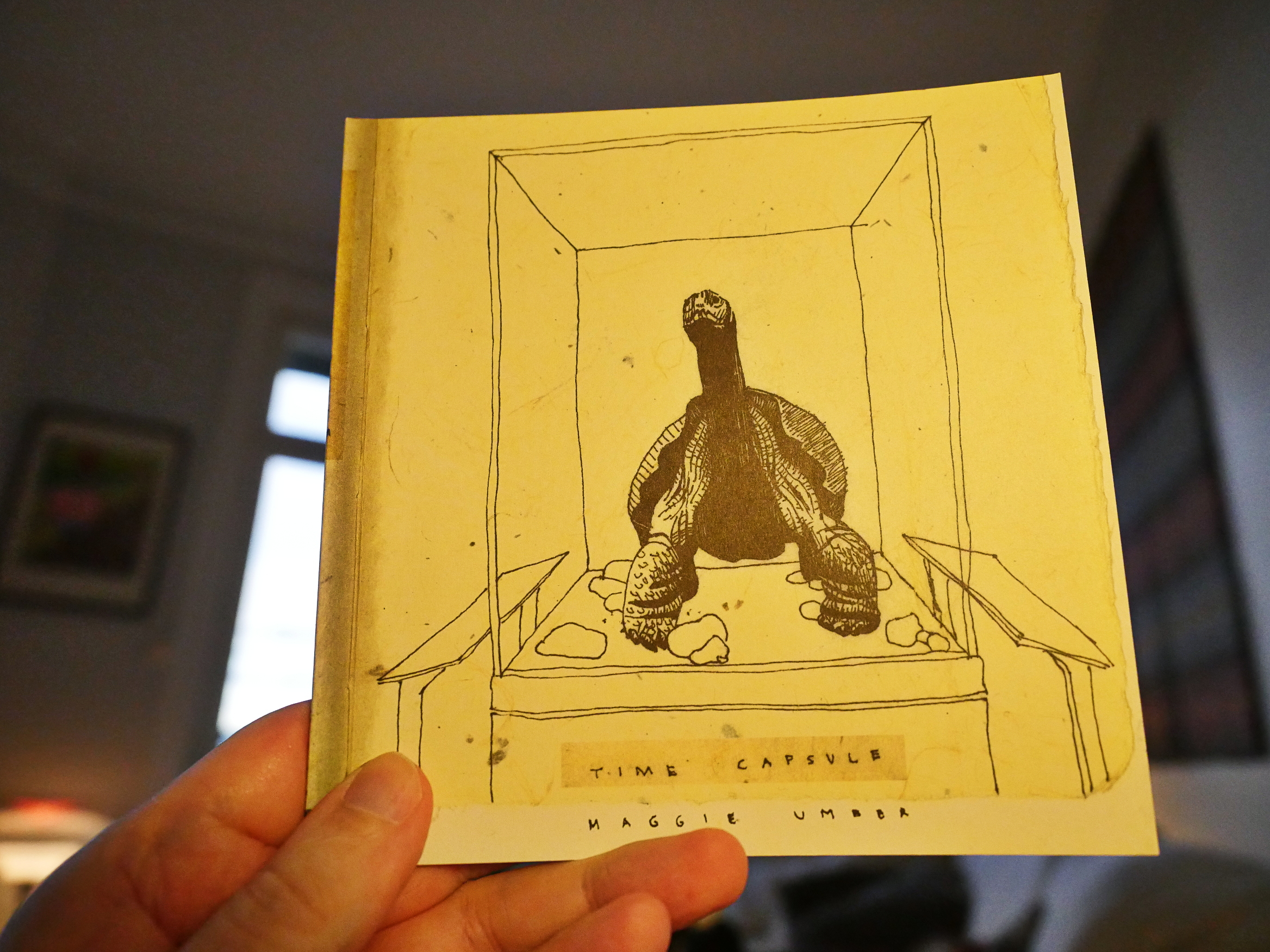
Time Capsule by Maggie Umber (2d cloud)
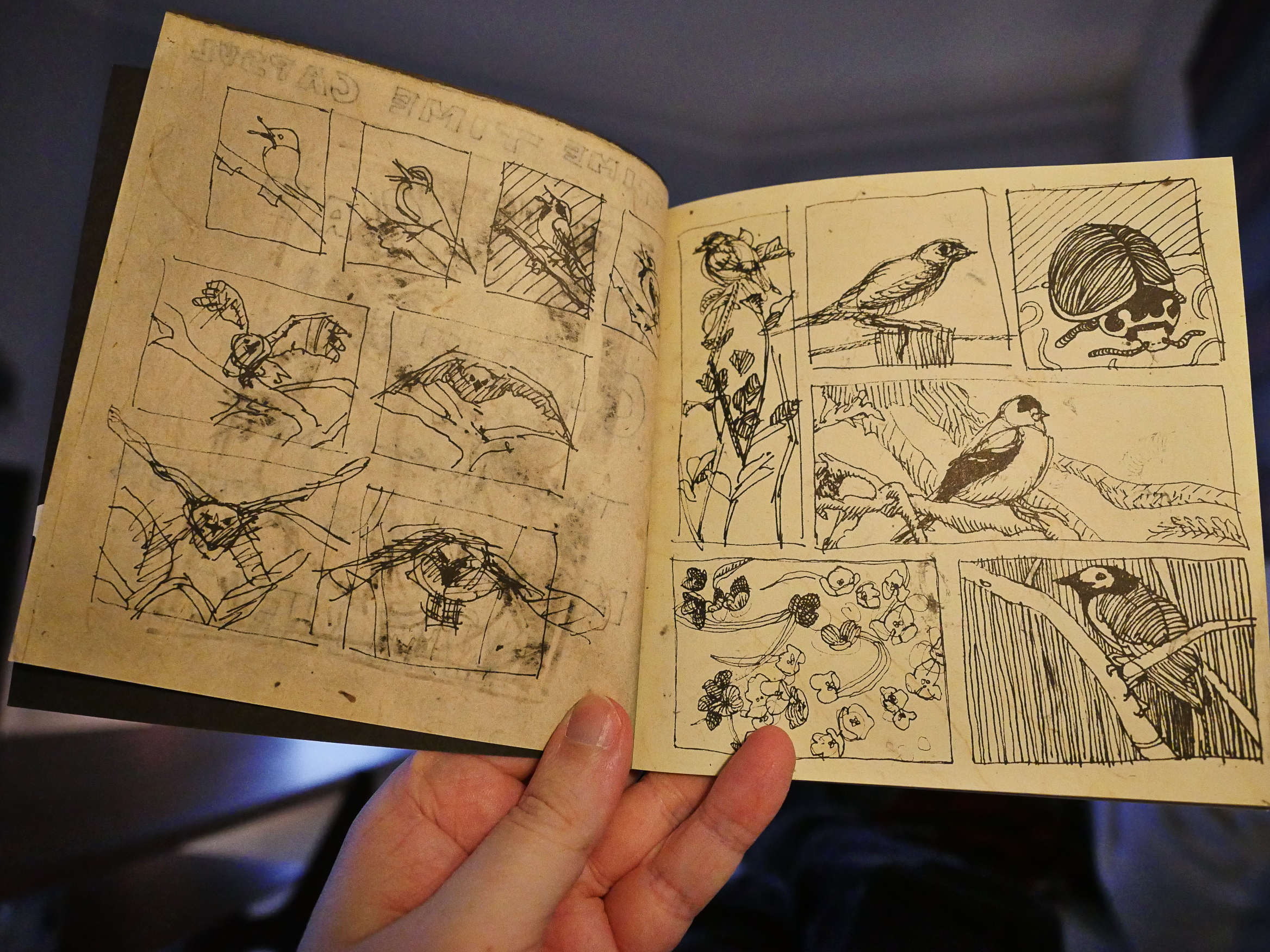
I was absolutely captivated by Umber’s grey/blue book about owls… what was it called… something with snow? Anyway, that was amazing.
This one’s a smaller work, and it’s got an ending I didn’t see coming at all.
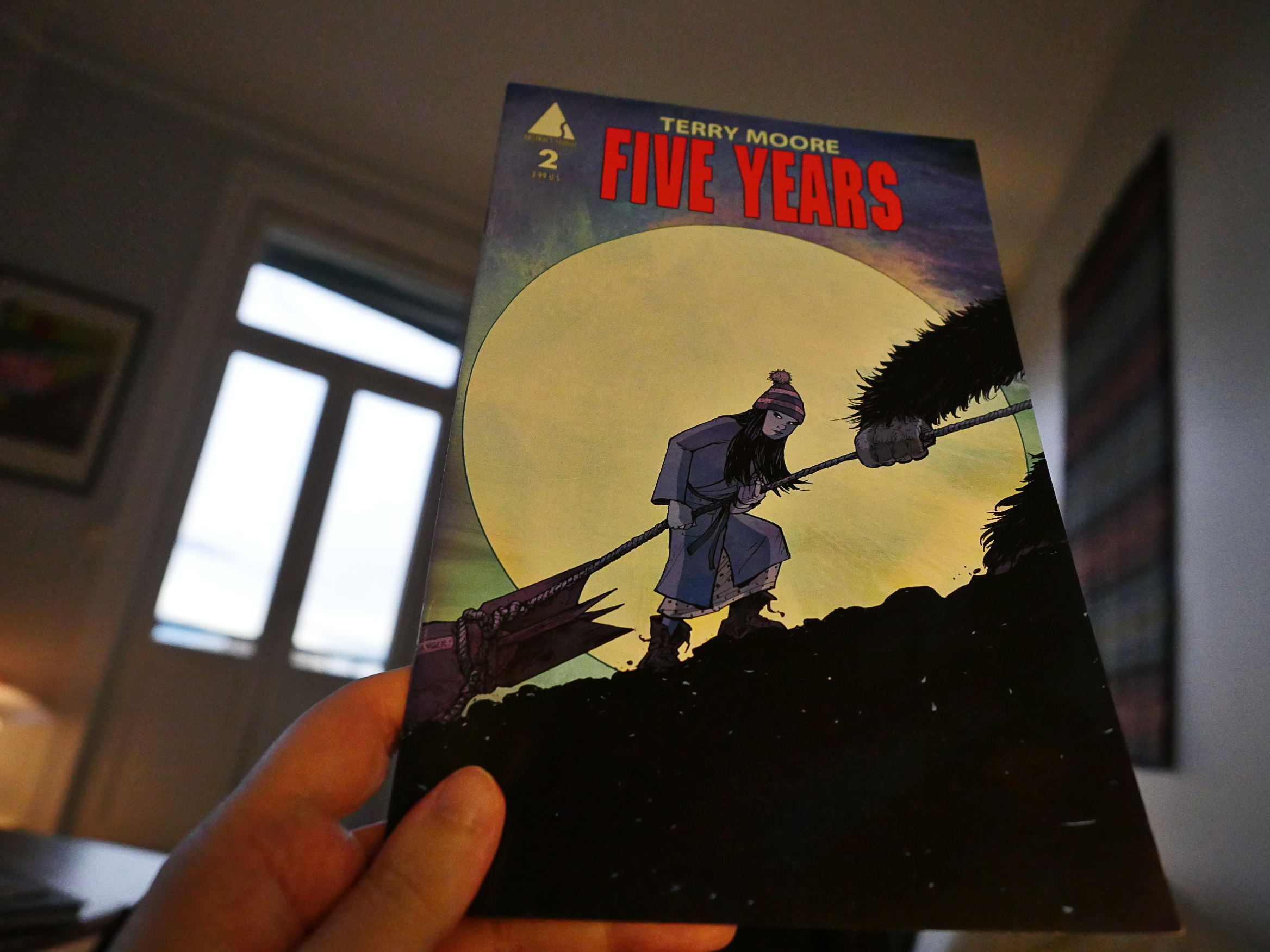
Five Years #2 by Terry Moore (Abstract)
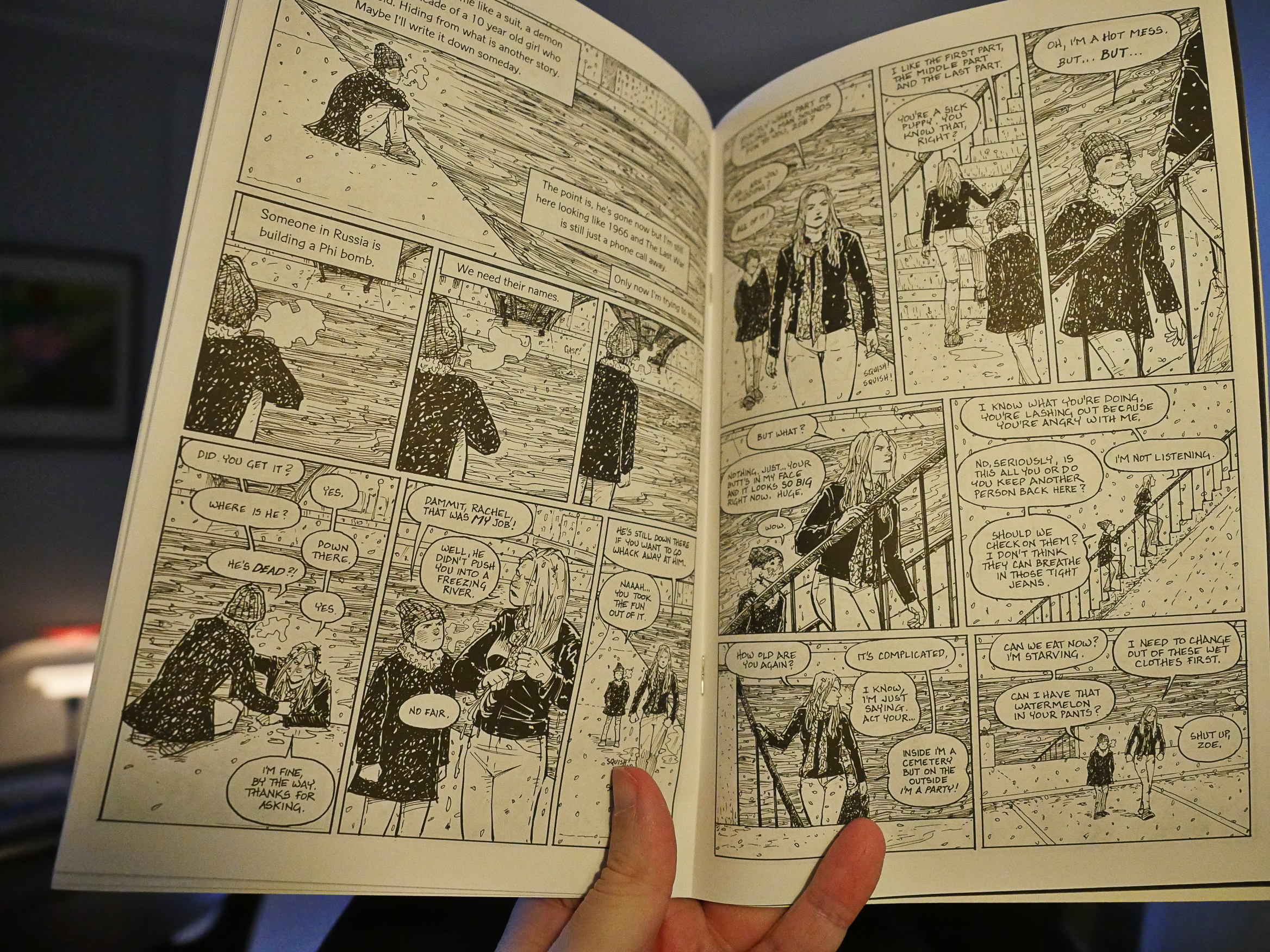
I only read a couple of issues of Moore’s long-running (and successful?) series… which was called… uhm… Oh, yeah, Strangers in Paradise. It looked a bit like Love and Rockets, but it wasn’t Love and Rockets, so I just avoided it. But I thought I’d give him a try again, and this is more than a little confusing. If I read issue one, I’ve forgotten it, and he doesn’t explain anything here. But that’s fine. What’s more disappointing is how the artwork is rather unengaging.
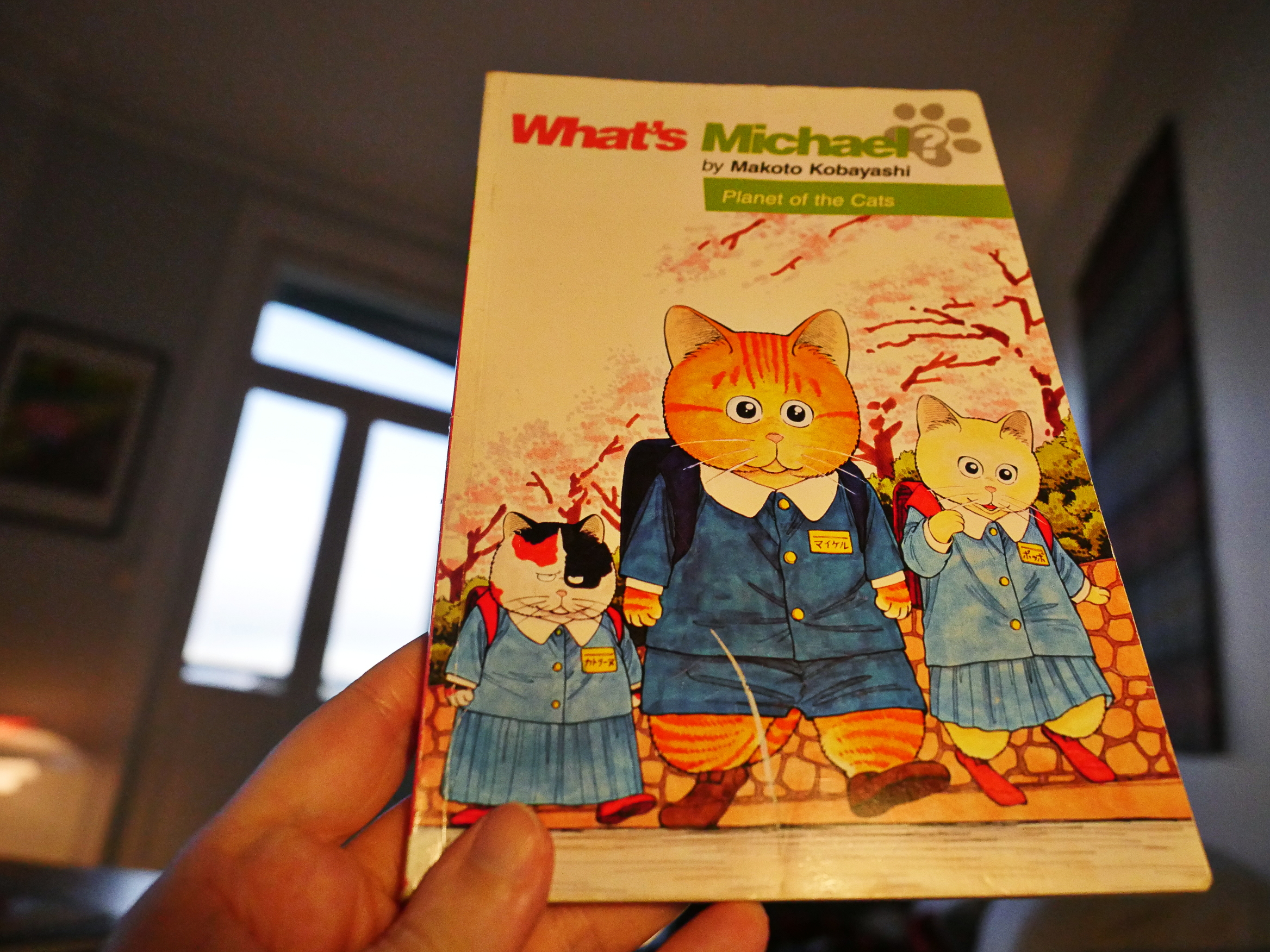
What’s Michael? vol 11 by Makoto Kobayashi (Dark Horse)
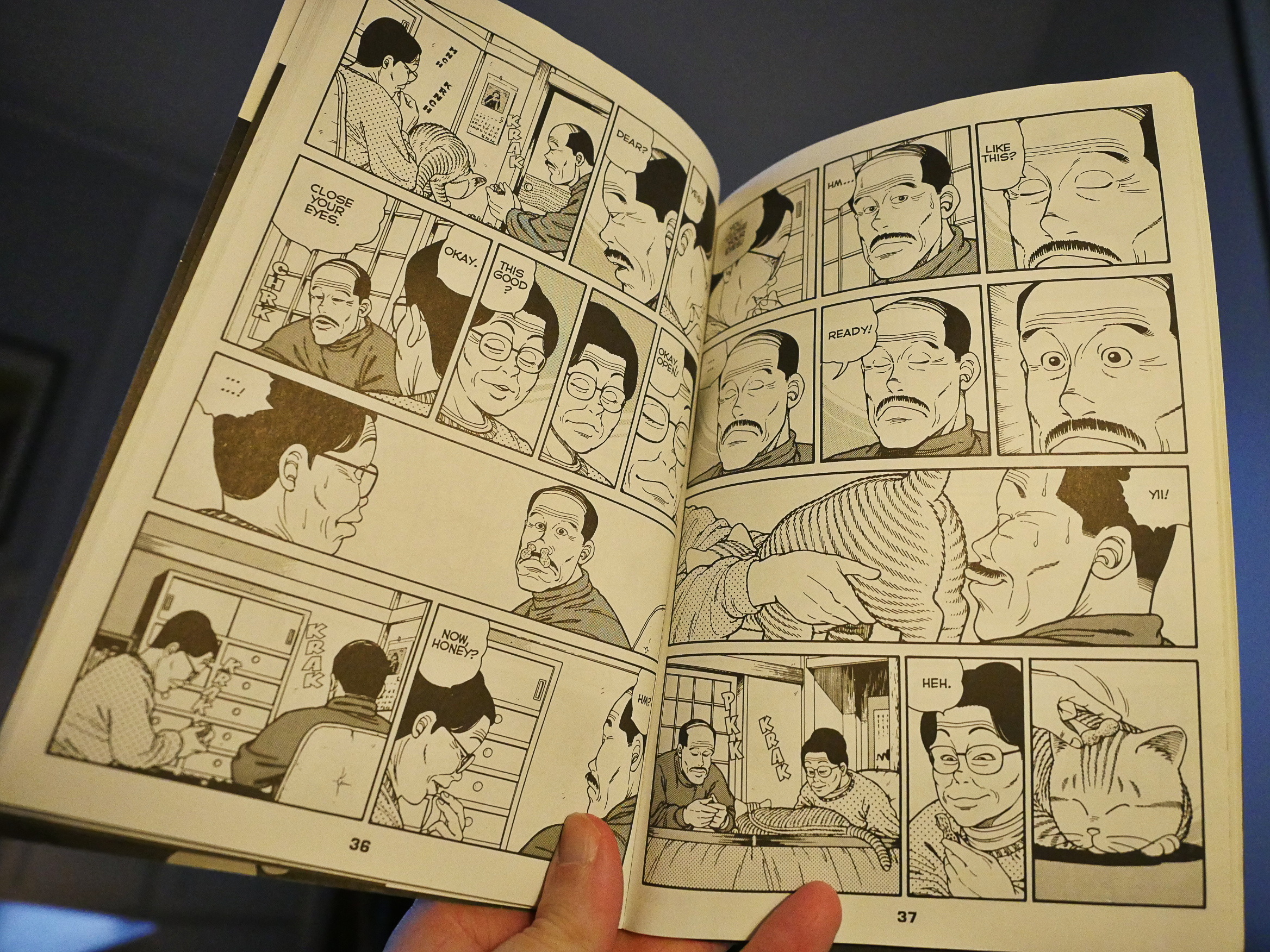
The first volumes of What’s Michael? were some of the funniest things I’ve ever read in my entire life ever, but it seemed to get less inspired as it went along. Fewer characters introduced; fewer scenarios — more streamlined. And so this volume continues…
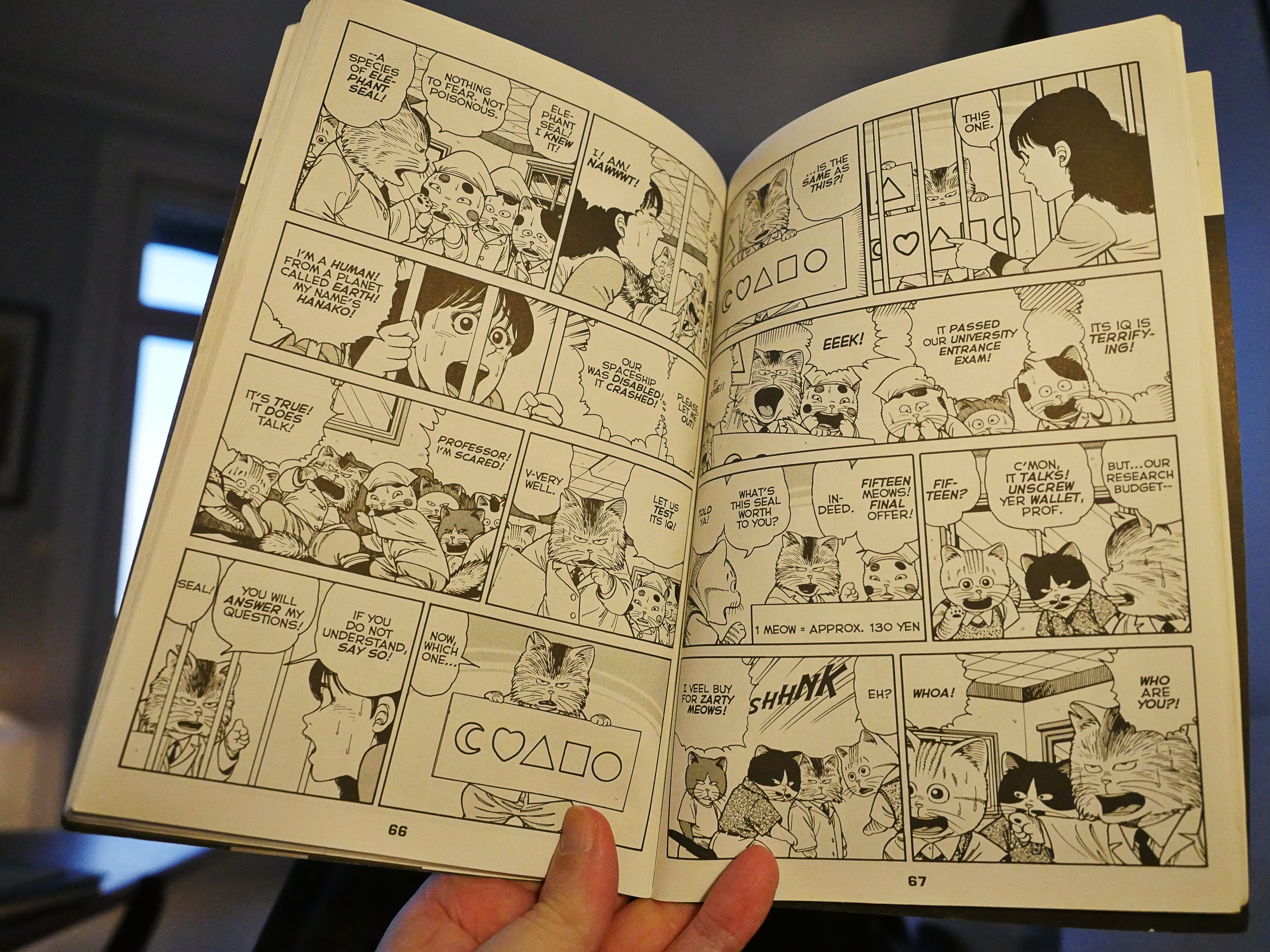
… until the second half, which is all dedicated to a new concept: A planet where the cats are the dominant species. It’s not prime Michael silliness, but I laughed out loud a couple of times.
This was the final volume Dark Horse published, and I wonder whether that was because Makoto Kobayashi stopped doing them, or whether it was because they didn’t sell…
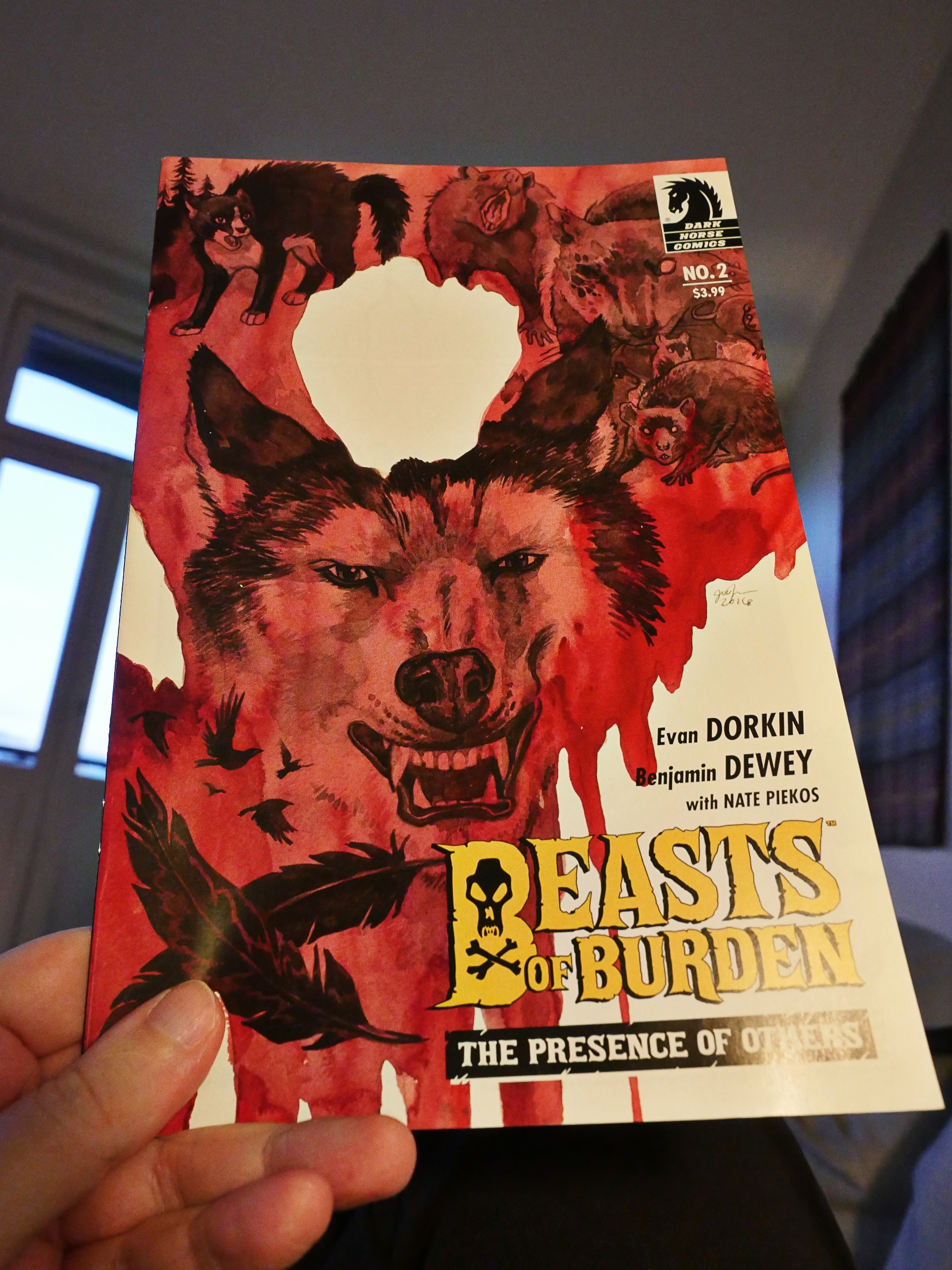
Beasts of Burden by the people named up there (Dark Horse)
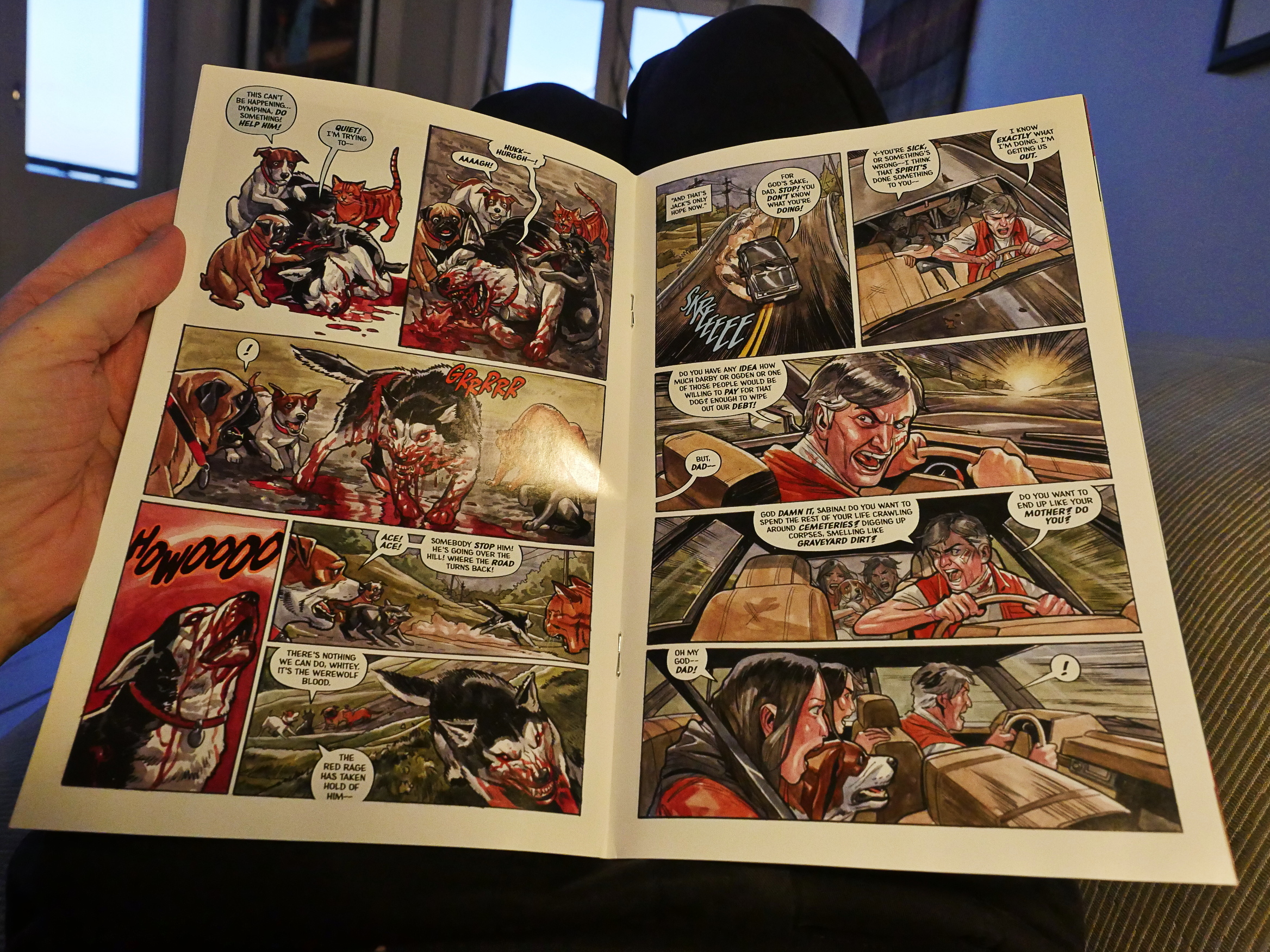
I’ve been a diffident Dorkin fan since forever. I mean, I’ve bought and read everything he’s done (except Pirate Corp$; I hope that’s collected sometime soon), but I’m not… I mean, Dorkin has his faults.
And the new artist here is more Generic Image than Jill Thompson, so there isn’t that much to recommend this latest series. There’s a “the end” on the final page, so it’s just a two issue series? And … nothing that mattered much happened here? It’s just… odd.
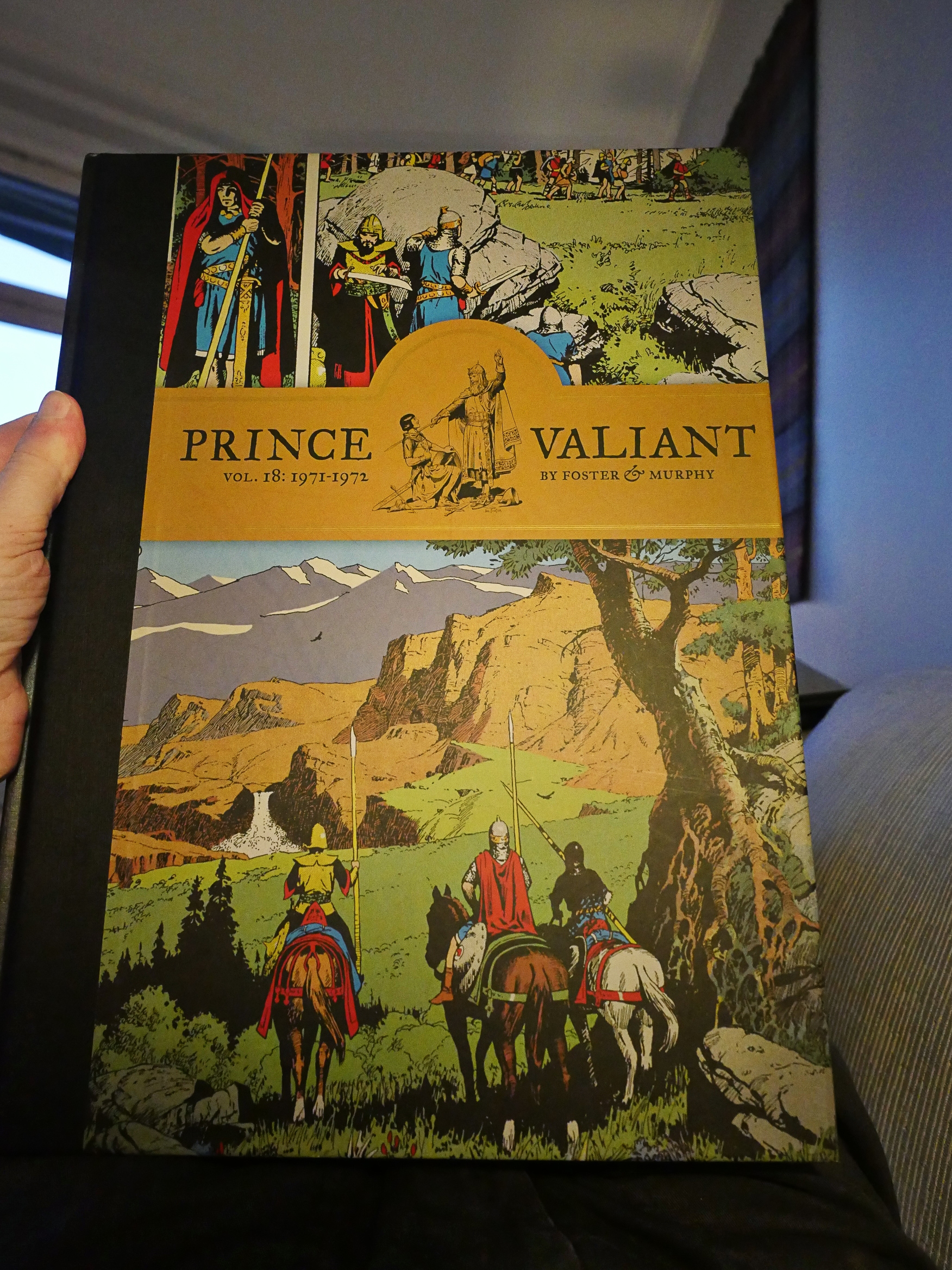
Prince Valiant vol 18 by Foster and Murphy (Fantagraphics)
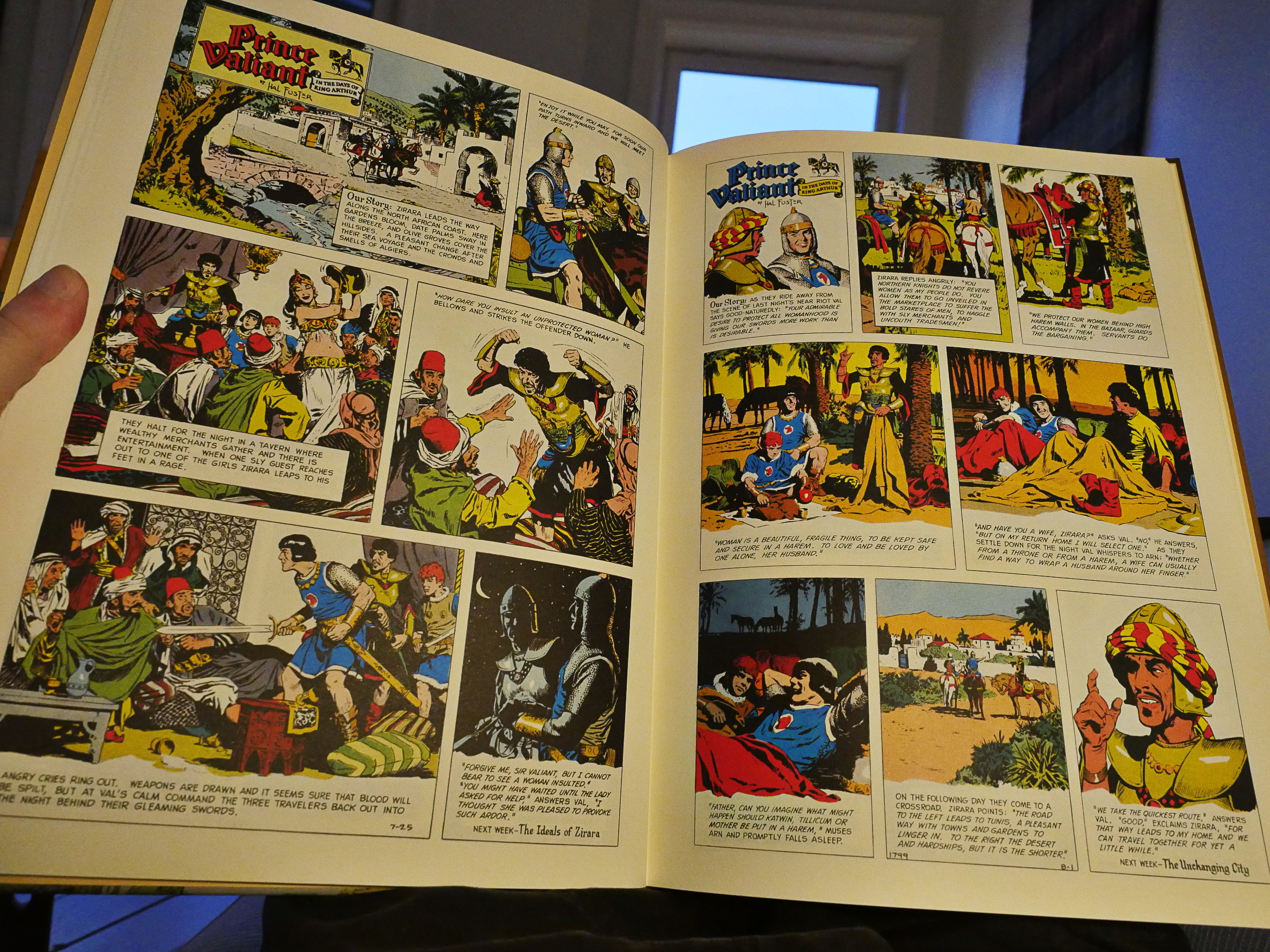
We’re in deep pap pap territory now.
I used to read Prince Valiant in crappy editions as a child, but reading these new editions from Fantagraphics has been an eye opener. Sure, Foster’s stories got increasingly boring as time went on, but the artwork sure is nice.
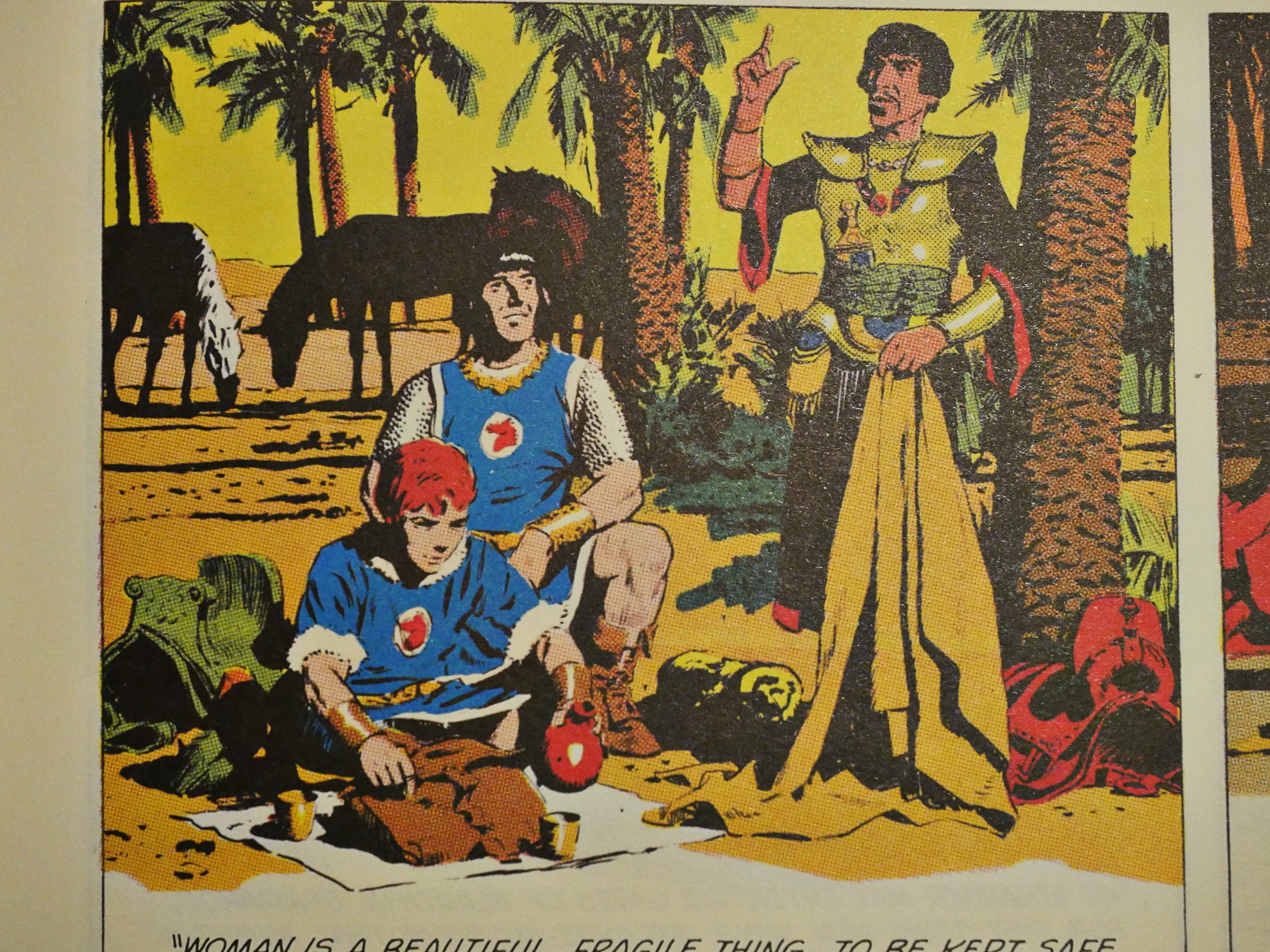
Except now Foster isn’t doing the artwork any more, and everything that doesn’t look like bad anatomy looks like reproduction mistakes.

I hadn’t quite realised how much my enjoyment of these comics hinged on the artwork, but I guess it did? Or perhaps Foster’s stories got even more boring when he stopped inking, because I just can’t pay attention to this, and I bailed about half way through. I’ll stop the subscription now for sure.

What Am I Doing Here? by Abner Dean (New York Review Comics)
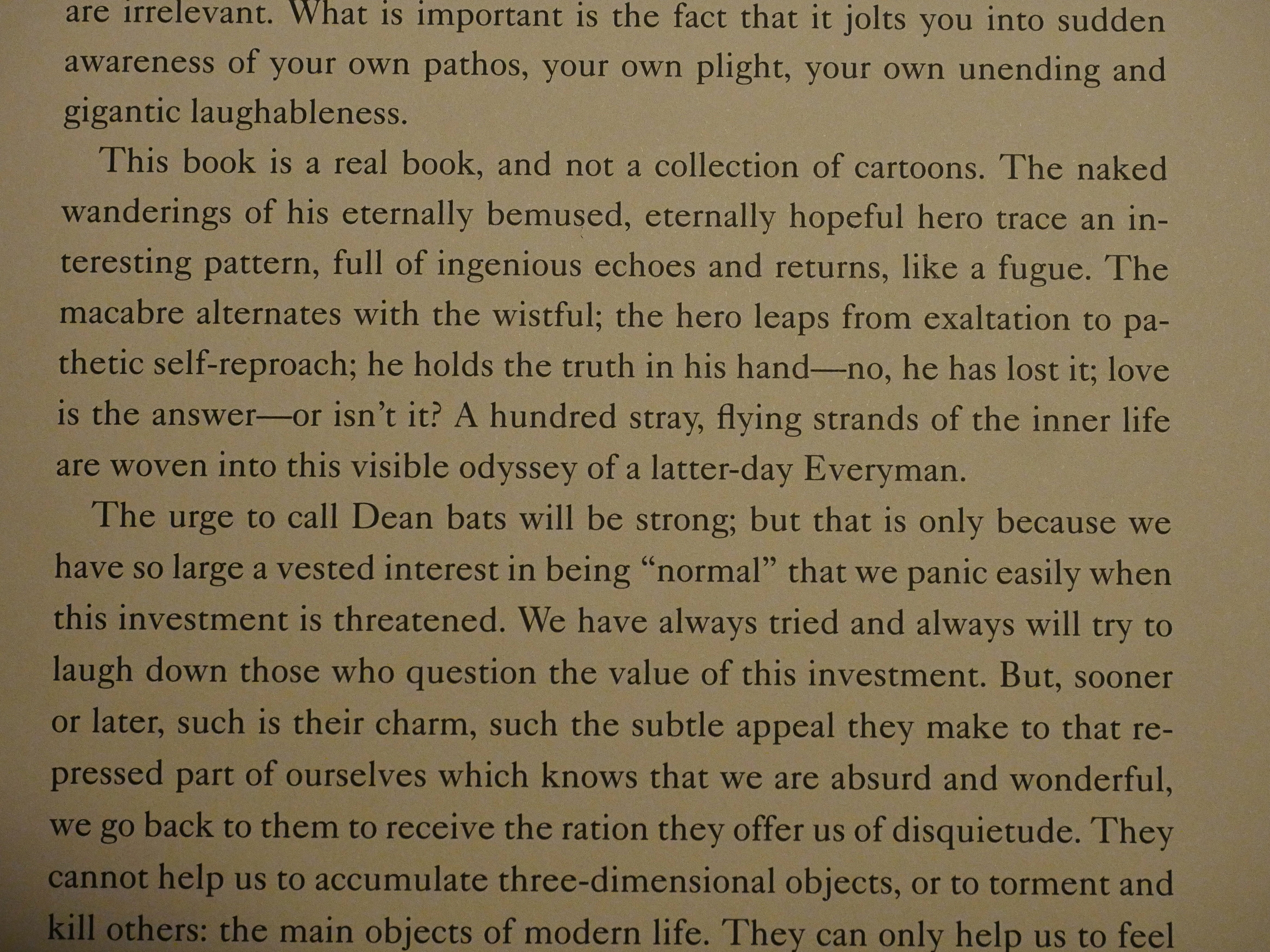
This is a “real book”. Nice to know.
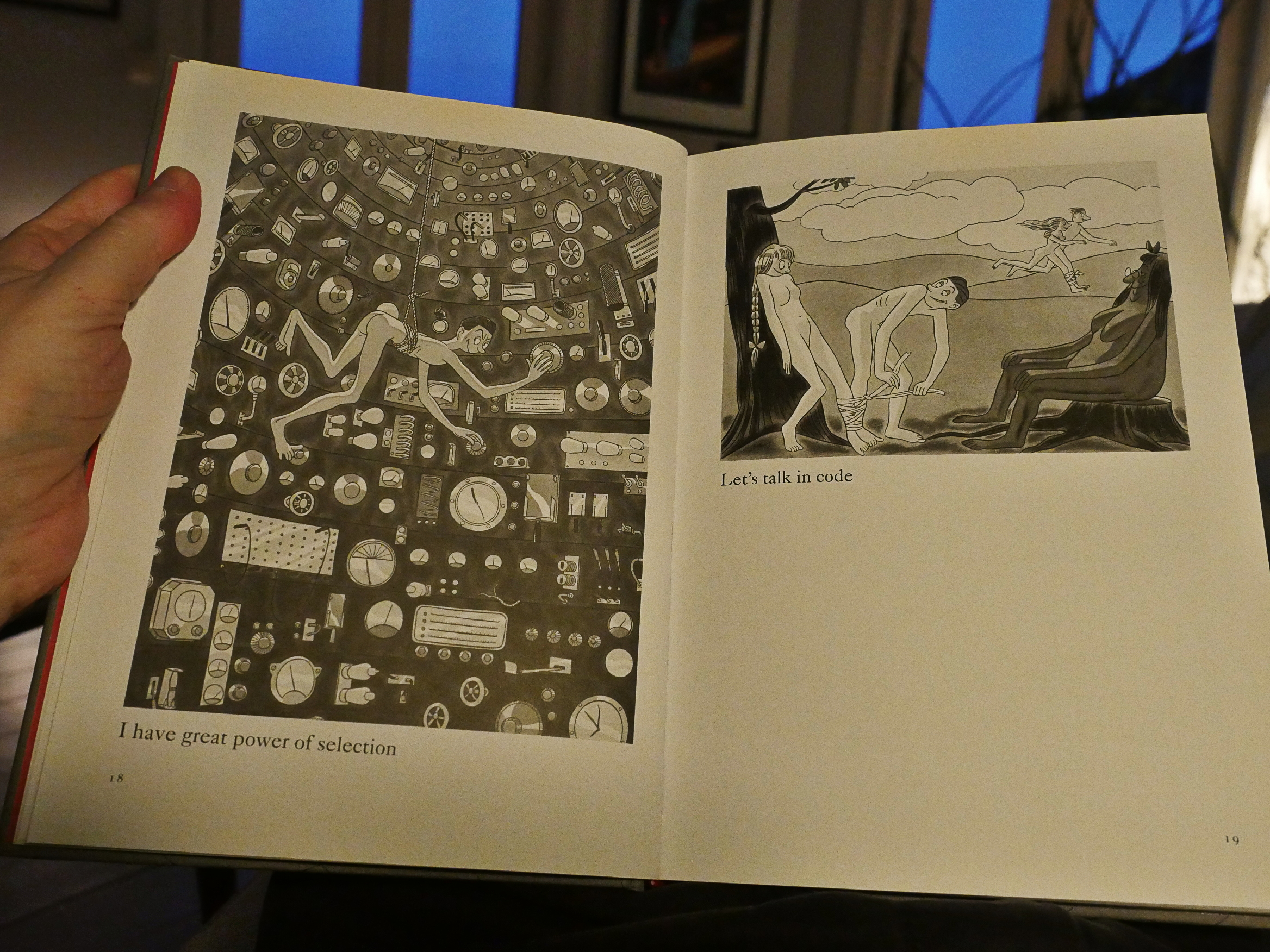
It does seem pretty much like a collection of cartoons, though. *gasp*
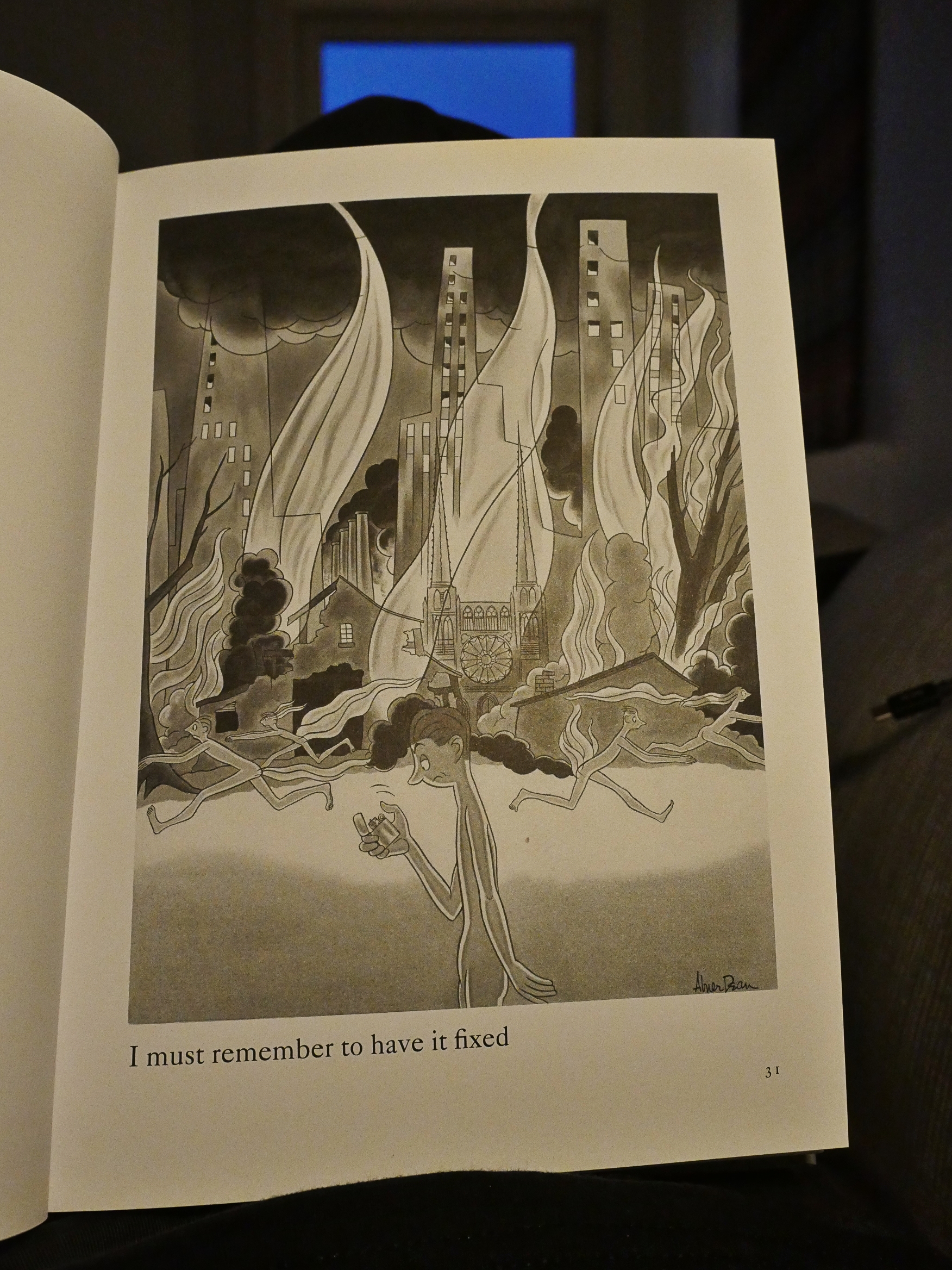
Quite a few of these have the non-joke structure of New Yorker cartoons.
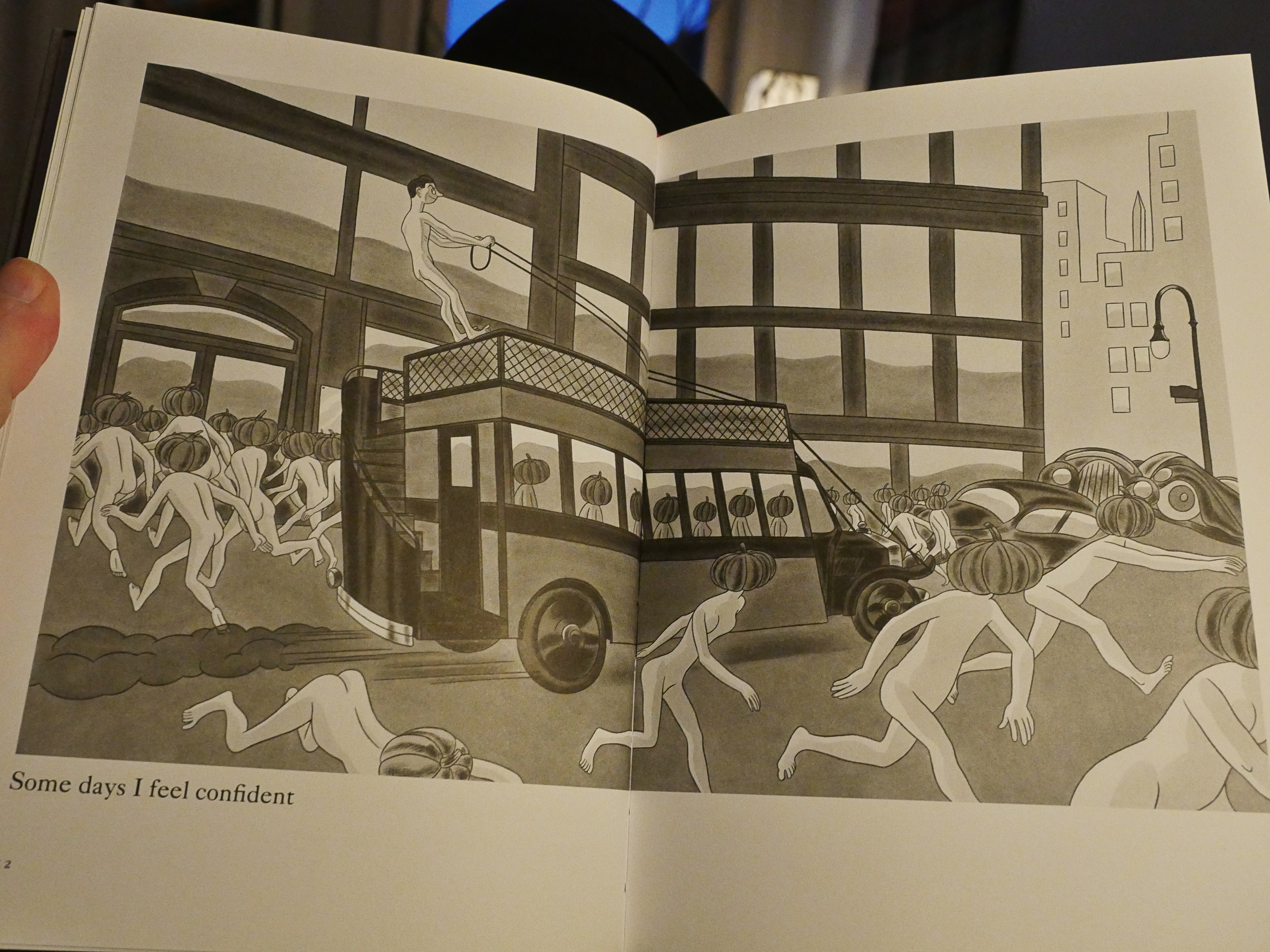
But some of these are kinda good.

And some are way smarmy.
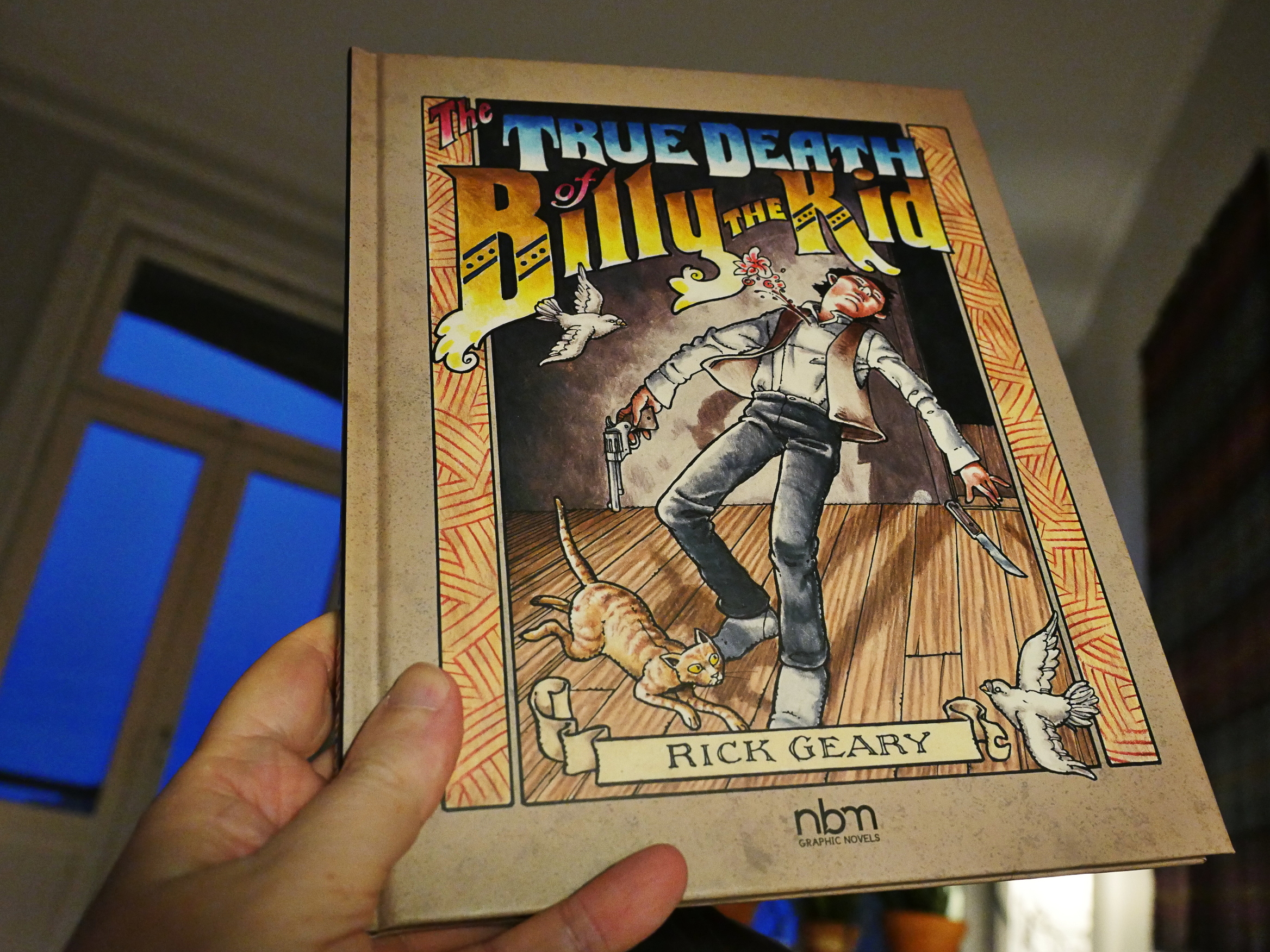
The True Death of Billy the Kid by Rick Geary (NBM)
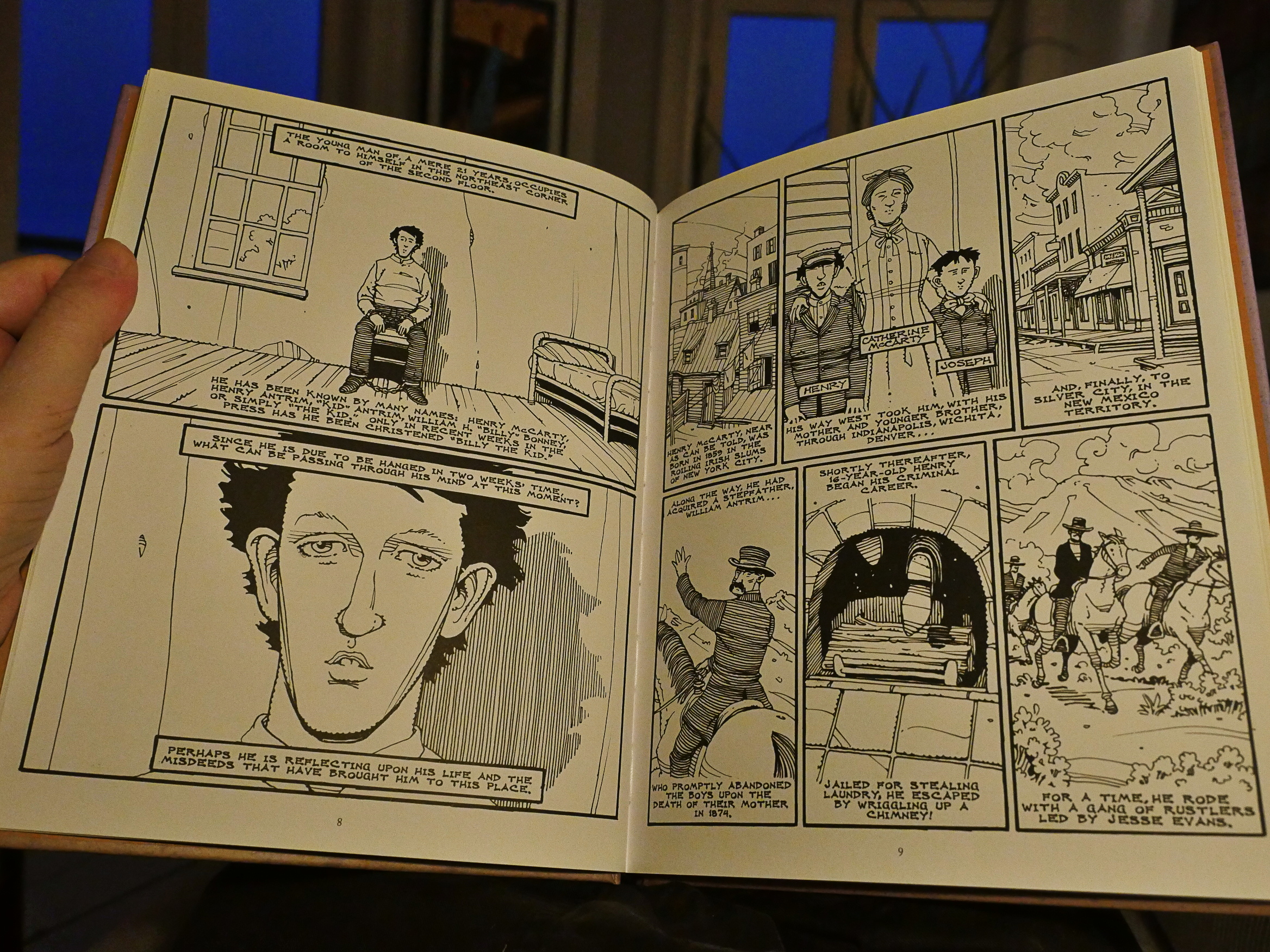
I have no interest in Billy the Kid, but, then again, I’ve had no interest in any of the killers and murders that Rick Geary has meticulously made book after book about for the past… three? decades. I just love Rick Geary and the way he makes comics. His pacing and panel to panel transitions are immaculate.
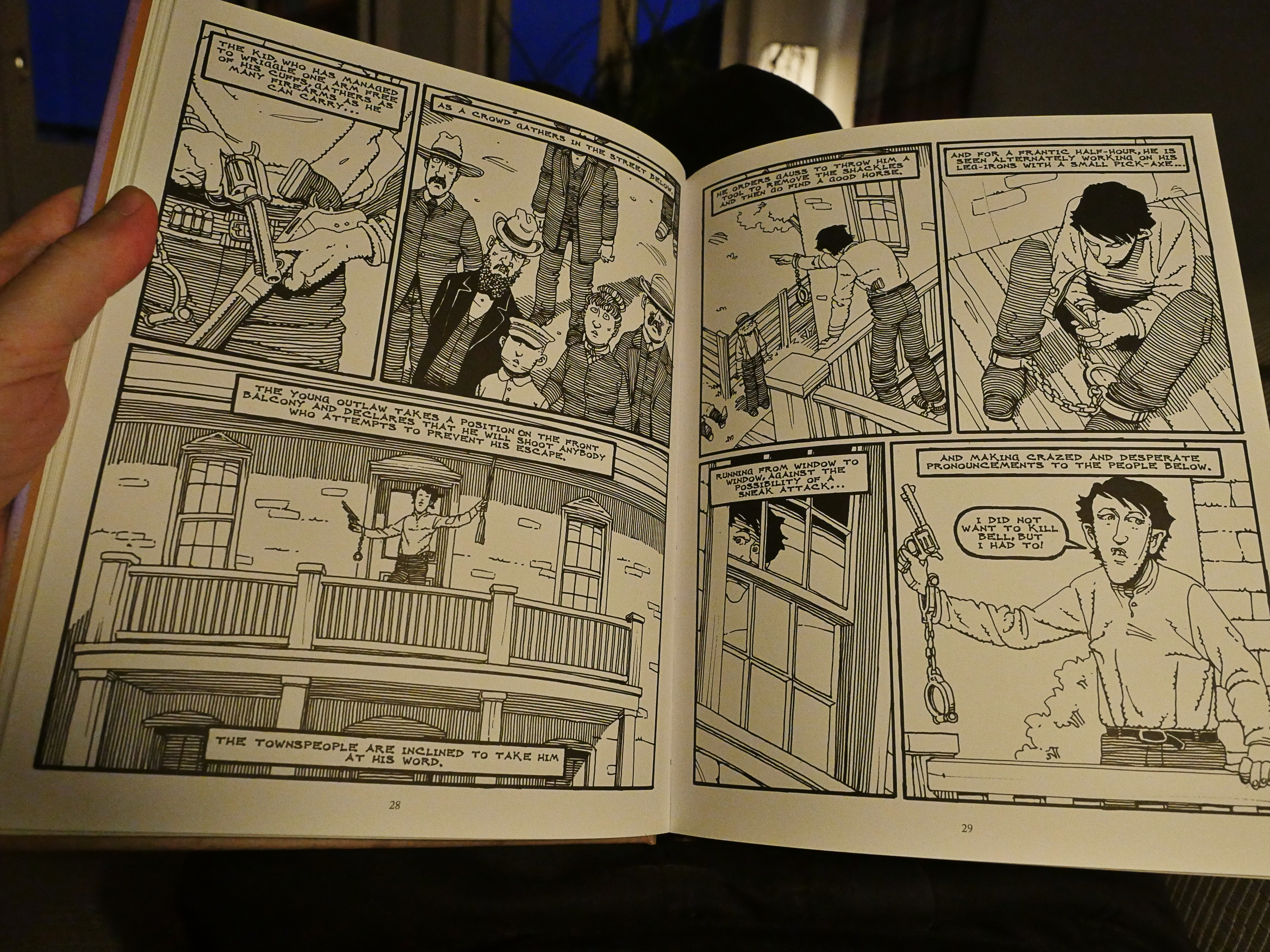
This story gives Geary lots of fun possibilities to play with, which doesn’t hurt.
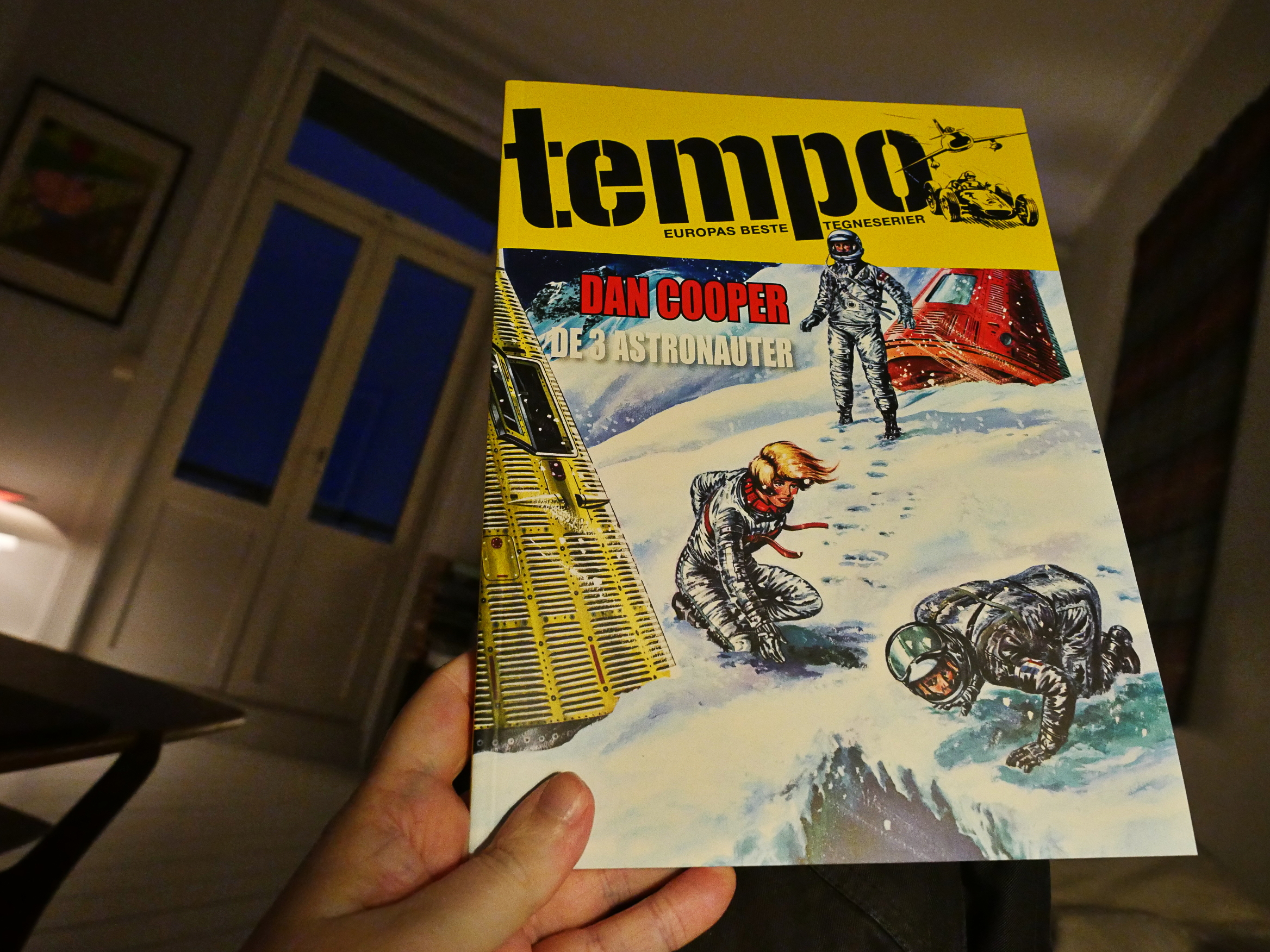
Tempo 23 (Egmont)
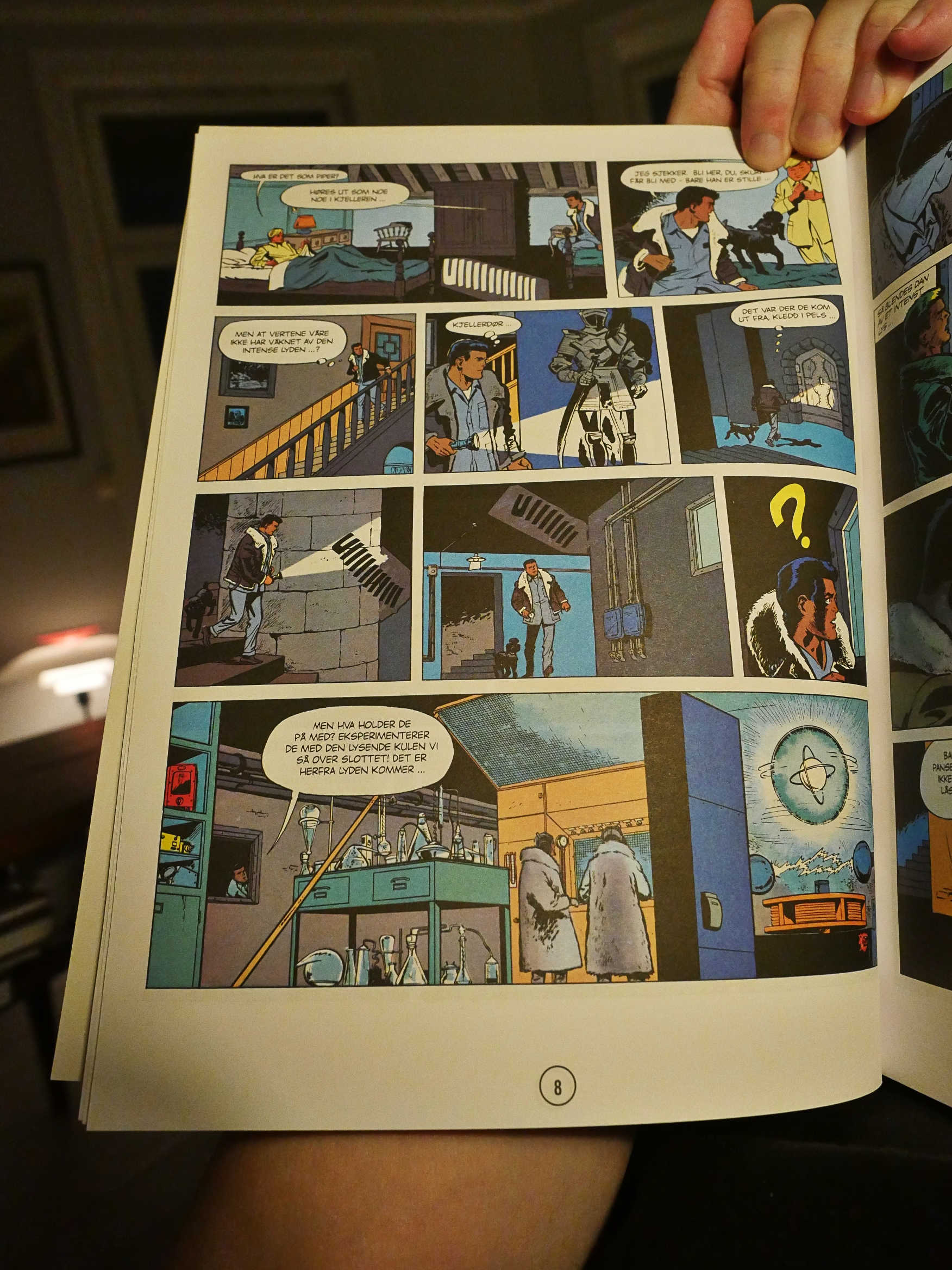
Comics for boys: Tempo was an anthology running from the late 60s to the late 70s (I think) and translated and reprinted material mostly from the Franco/Belgian weeklies Pilote and Tintin. So you get comics about race car drivers, pilots, football players, detectives and everything that interests boys.
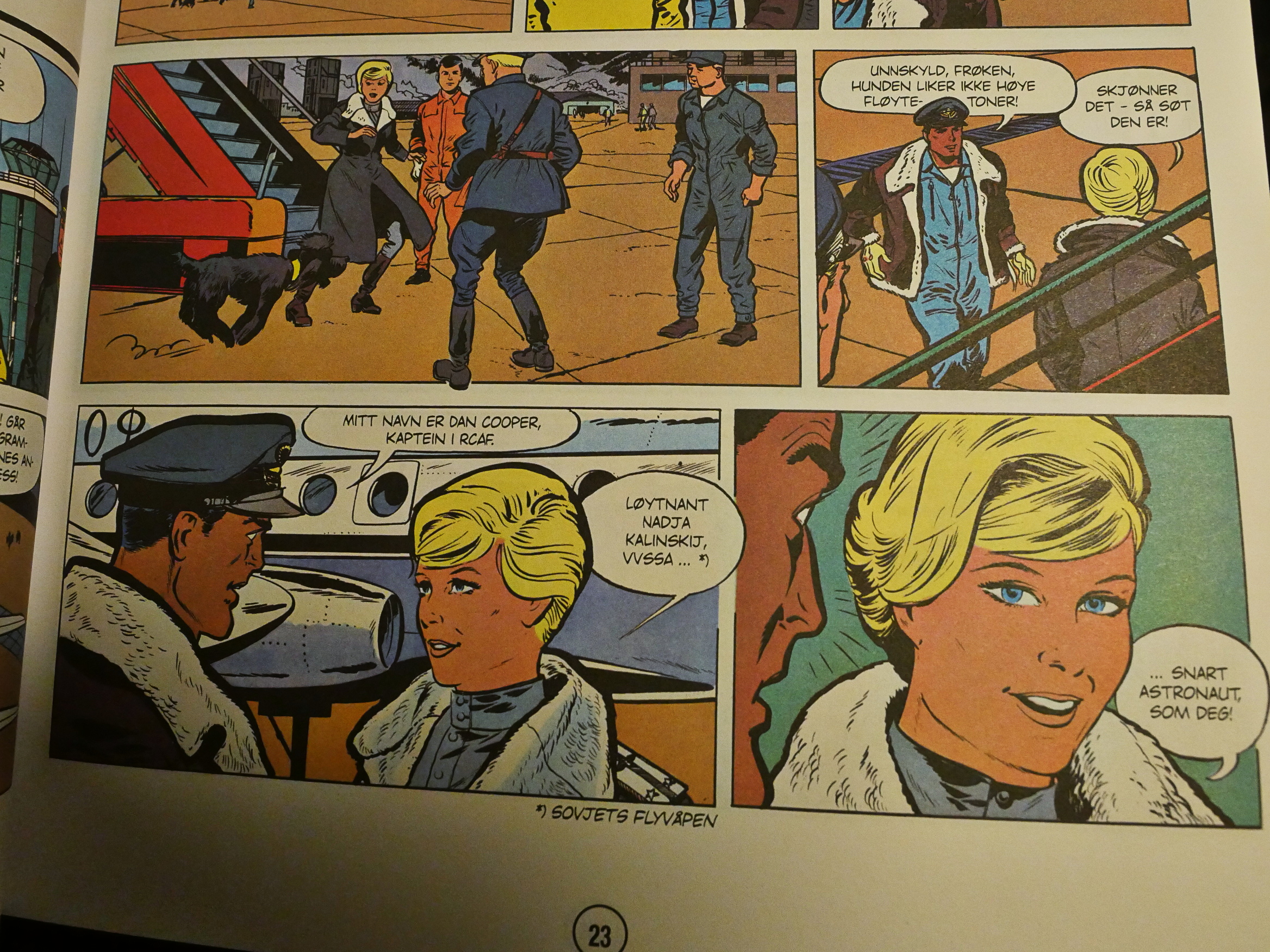
This is a newish go-around with the same series, but this time a couple of albums per new “book”. I’m guessing the target audience is the same as before, only fourty-fifty years older.
I wouldn’t claim that these comics are … good? Because they’re pretty weak stuff: Usually pretty stilted an formulaic. But it’s in a style I kinda like. And at least they tried to be progressive, like bringing in a female Soviet astronaut into the Dan Cooper story above, for instance.
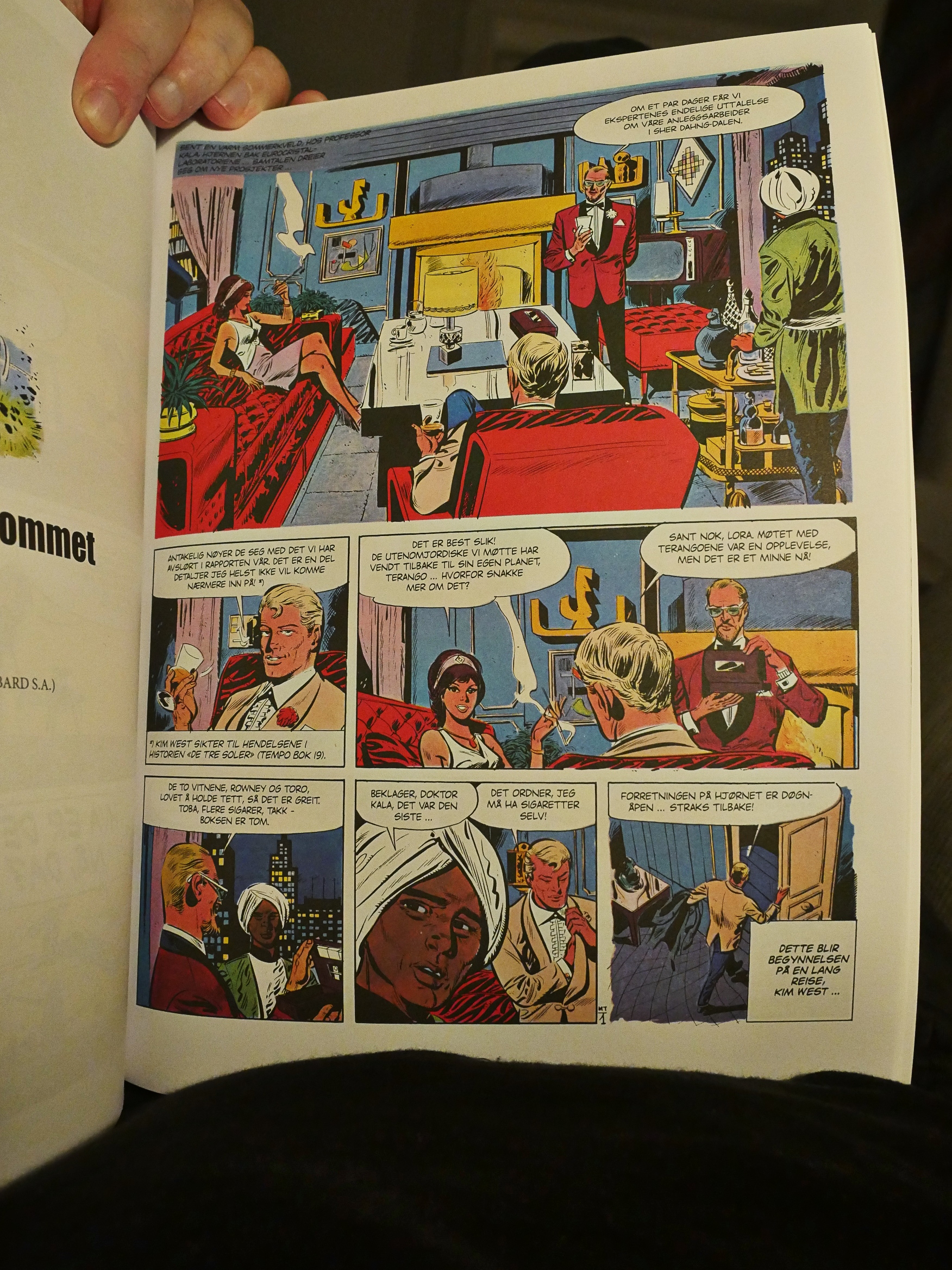
But it’s mainly the style. I just like looking at pages of nice interiors, as in this … Luc Orient? thing?
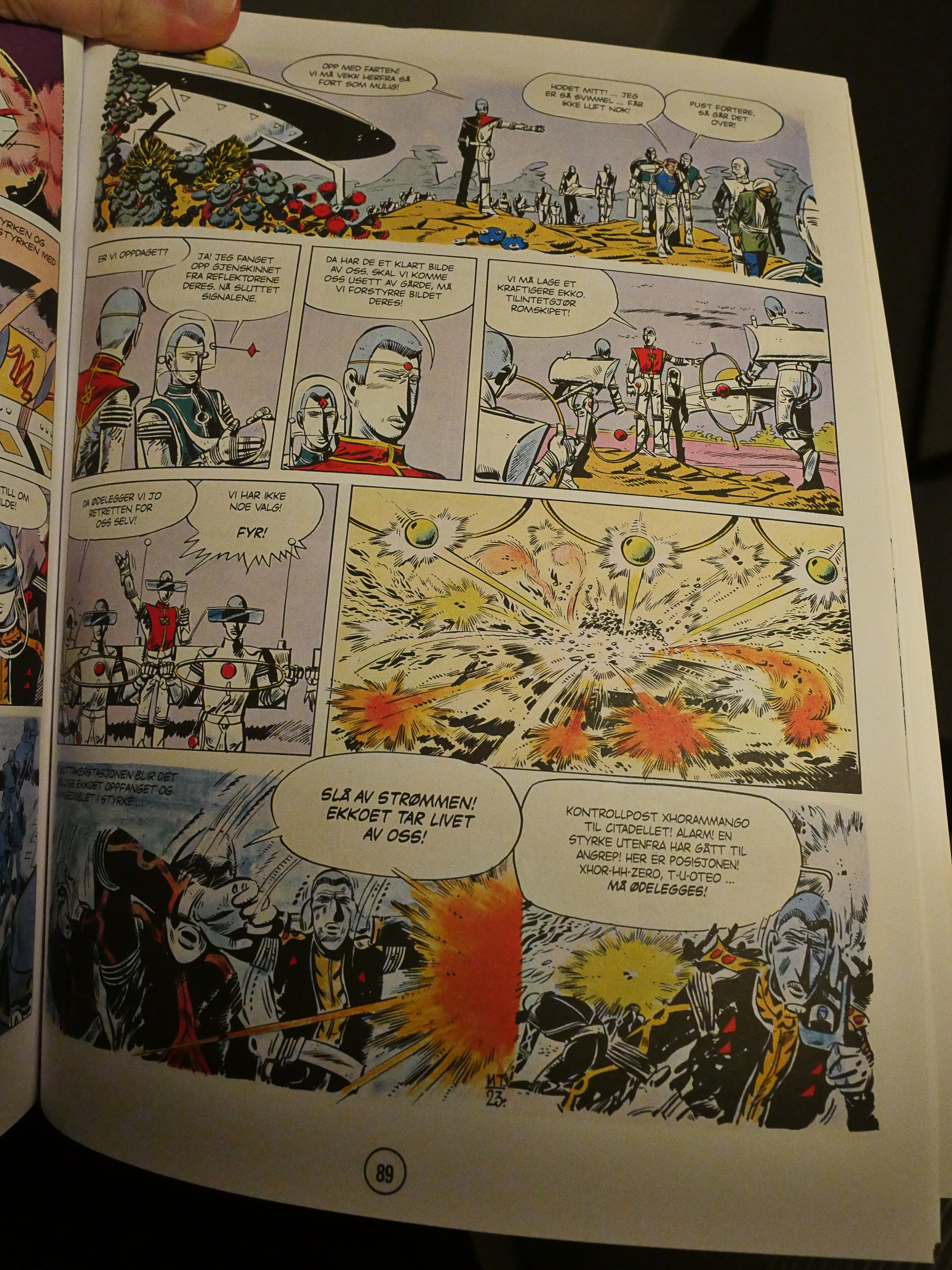
The story is beyond tedious, and I can’t quite put my finger on why. I mean, it looks pretty exciting, doesn’t it?
And there’s other odds and ends in this book; it’s most amiable, but I wouldn’t really recommend it to anybody. There’s a reason these comics end up here instead of in proper collections: Even fewer people would buy them then. I’m guessing the only reason that it’s feasible now at all is because the French have gone in for a massive scanning-and-reprint operation for many of their “classic” series, which makes the material cheaply available for anybody who wants to publish translated versions.
Is my guess.
OK, it’s now way late and I should go to sleep. And there won’t be any more posts about comics for… four days? There’s a free jazz festival happening, but I may be back on… Monday? Yup. Monday.
